During Women’s History Month, Louise Irvine is celebrating the Centennial of women’s right to vote and highlighting their achievements as designers and muses in the fired arts during the roaring twenties.
Votes for Women
The women’s rights movement began nearly a century before the vote was finally granted. There were differences in campaigns and strategies on both sides of the Atlantic, but some US states had given women the right to vote by the end of the 19th century. Finally, on August 20, the constitution was ratified, enfranchising all American women. In the UK, militant suffragettes broke windows, started fires and went on hunger strike when they were arrested. Cartoonists lampooned the excesses of the suffragettes and the Doulton pottery produced inkwells of an ugly woman and her baby mocking the movement. Agitation for women’s suffrage succeeded in 1918 when a law was passed extending the vote to women of 30 or over. Victory celebrations were subdued during World War One, but the campaign was revived and in 1928, the age limit was reduced to 21 and voting rights between men and women were equalized in the UK.
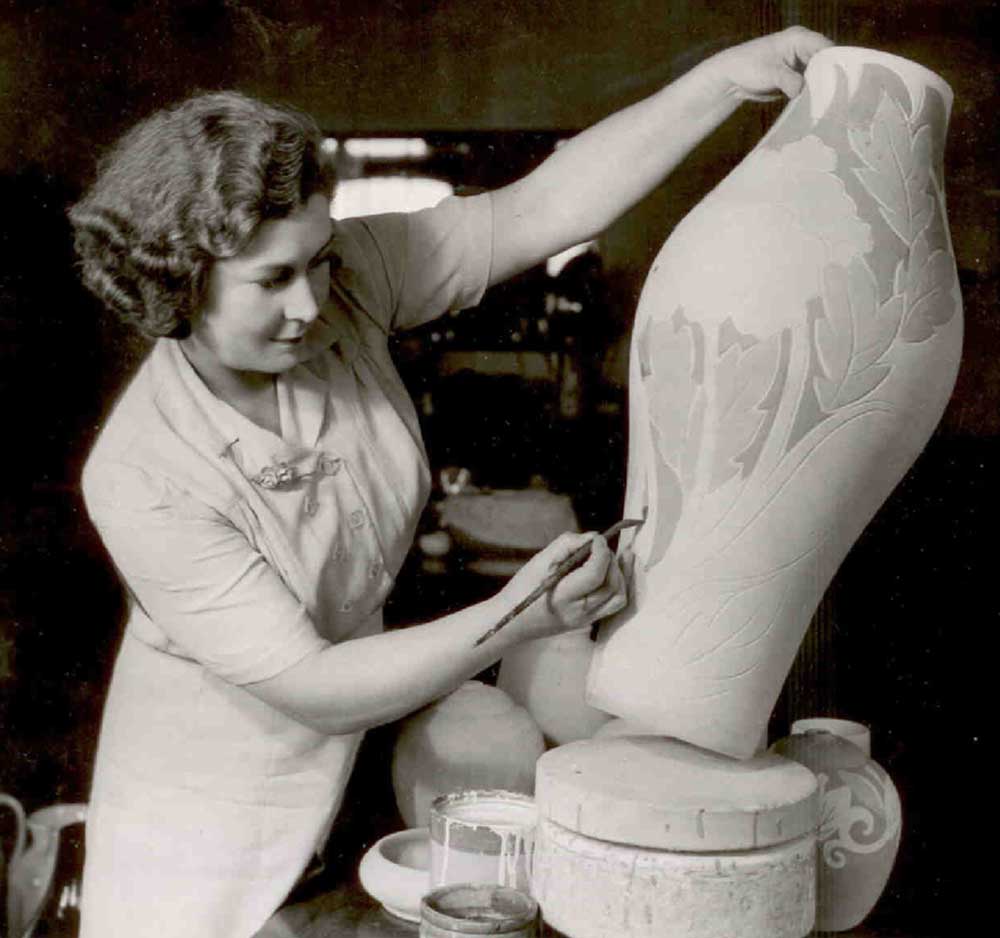
Vera Huggins at Royal Doulton
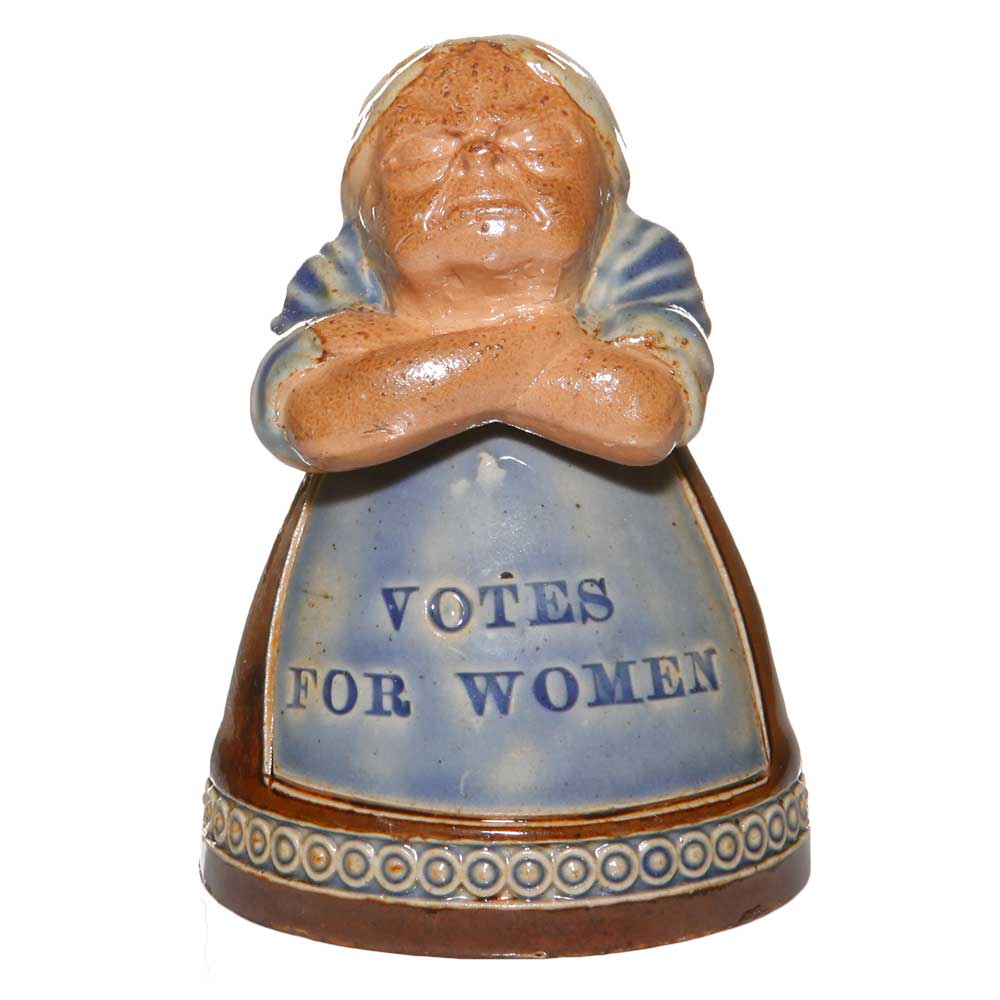
Doulton Votes for Women Inkwell
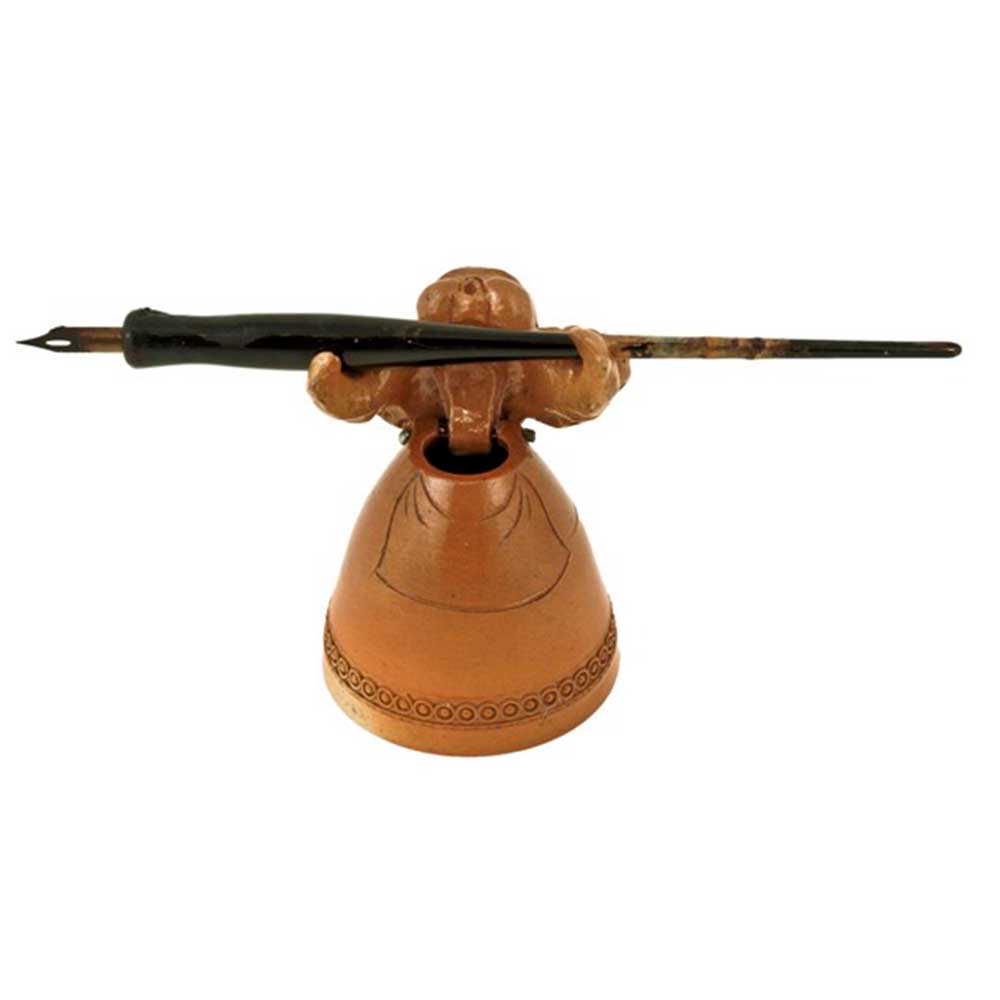
Doulton Votes for Women Baby Inkwell
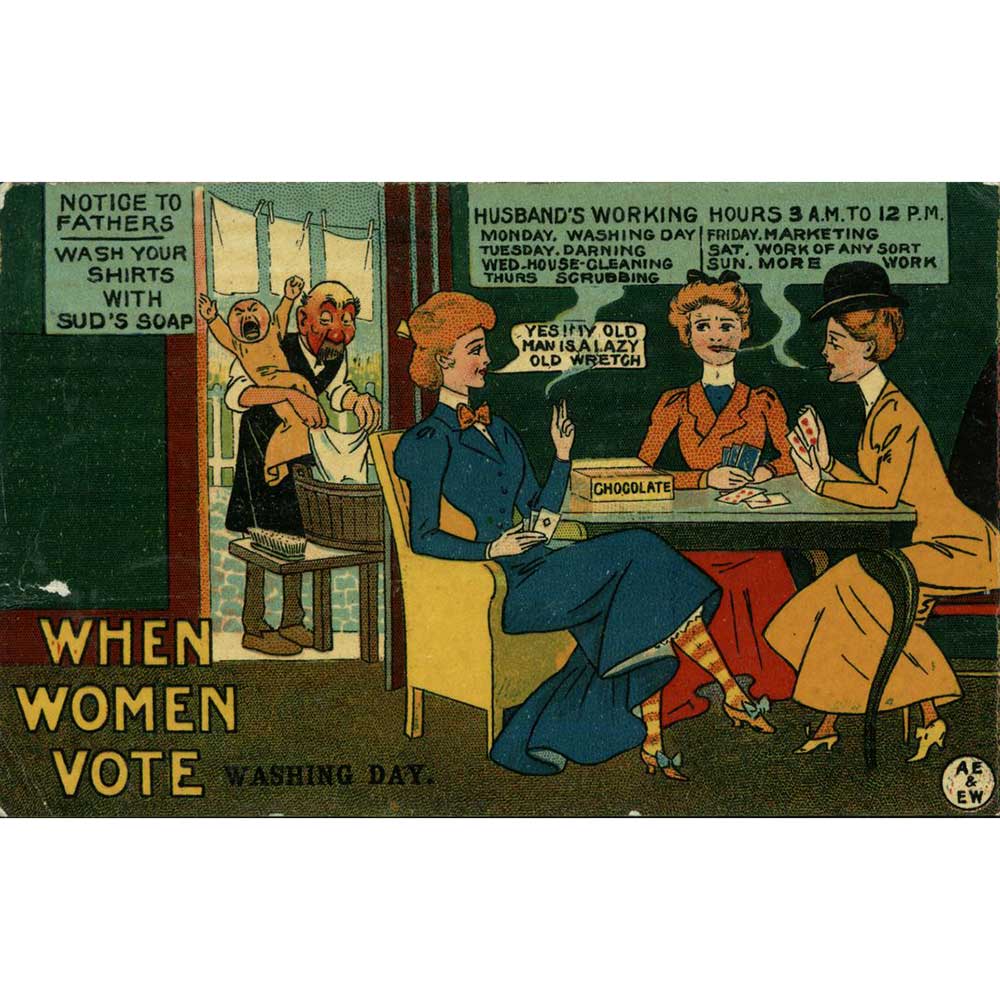
A Proposal Cartoon
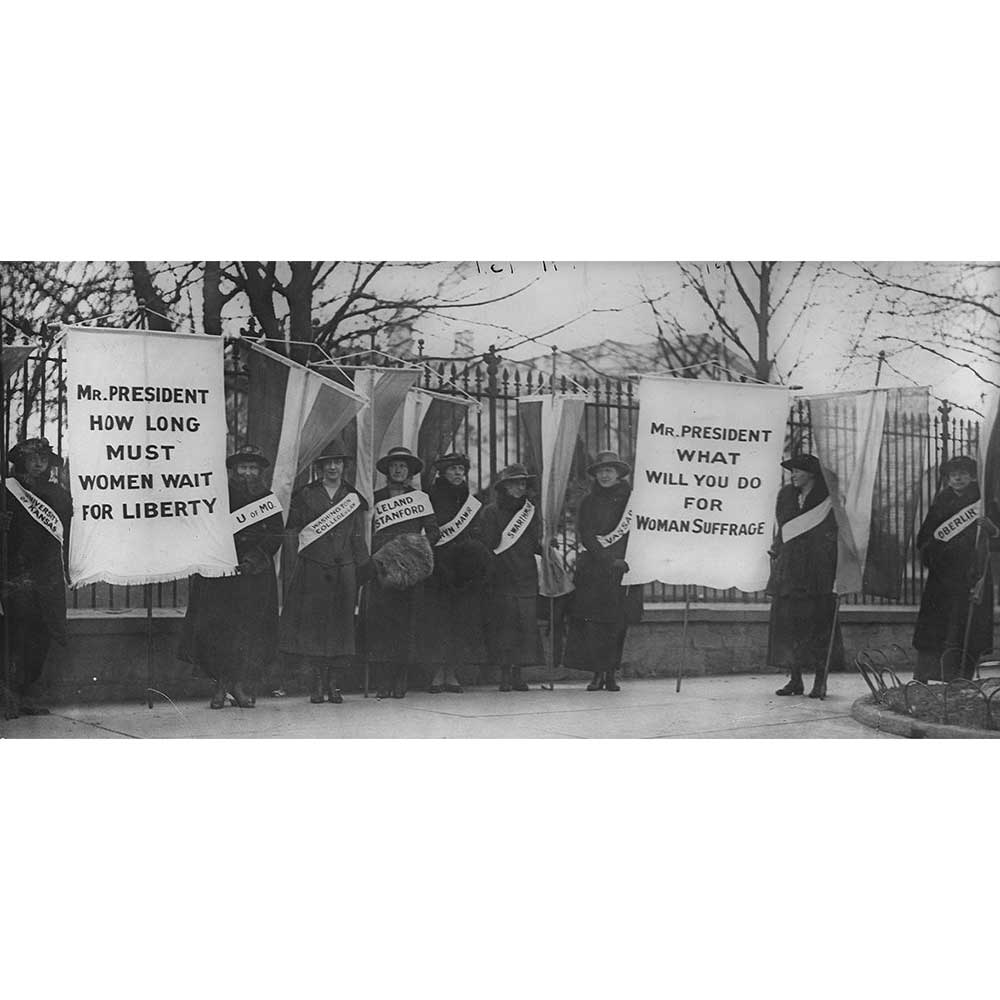
Women picketing in front of the White House
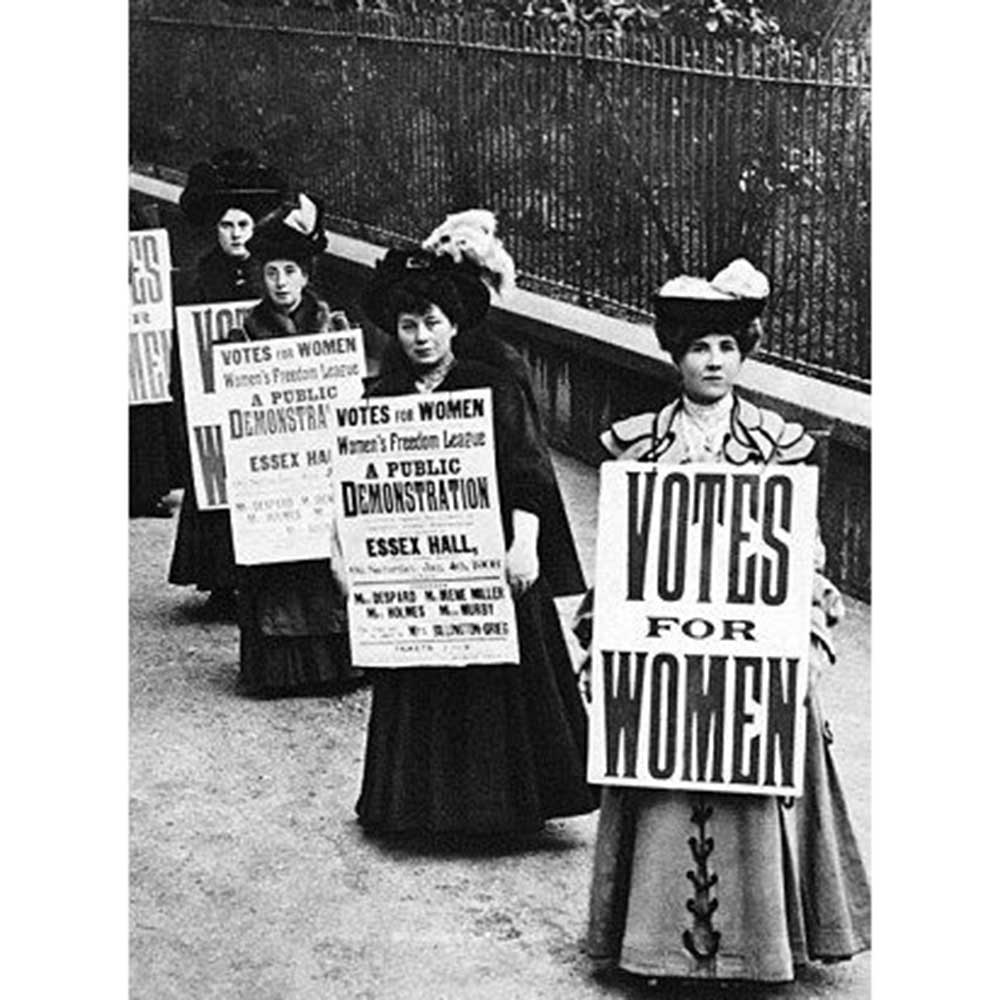
Votes for Women
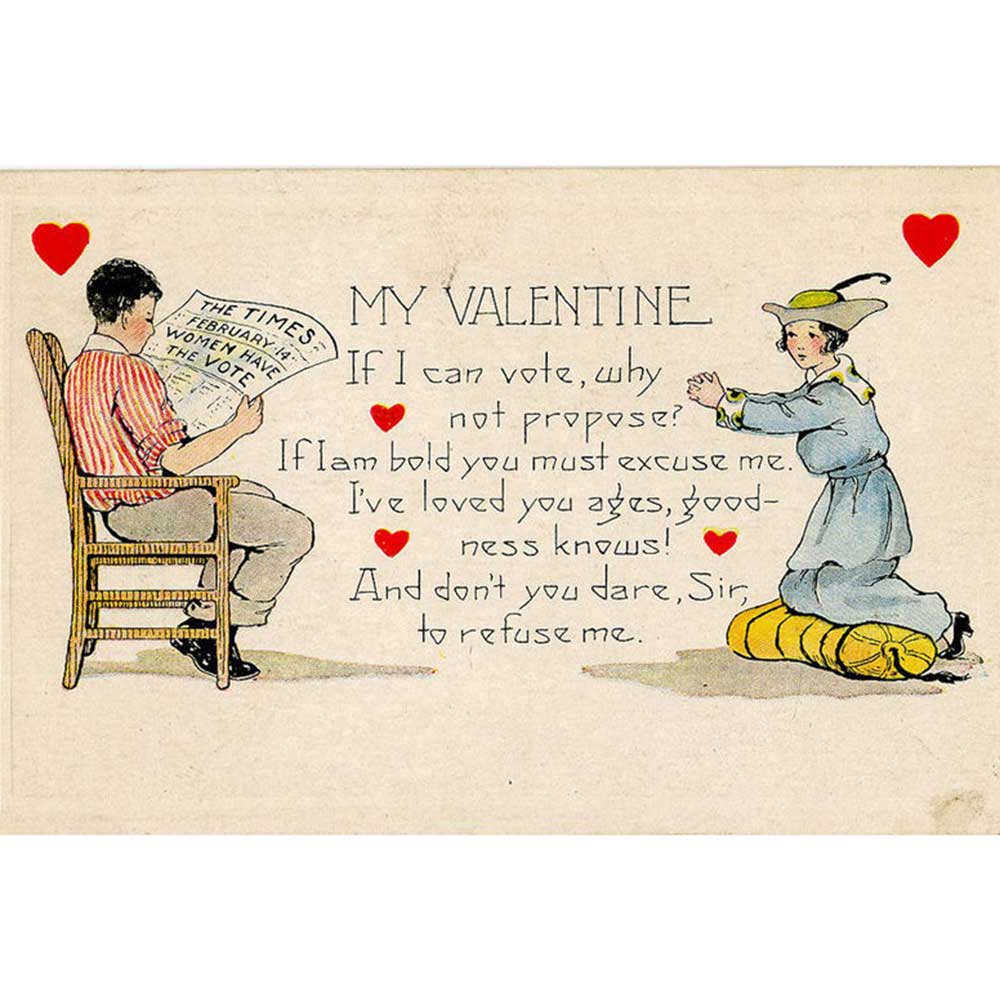
My Valentine
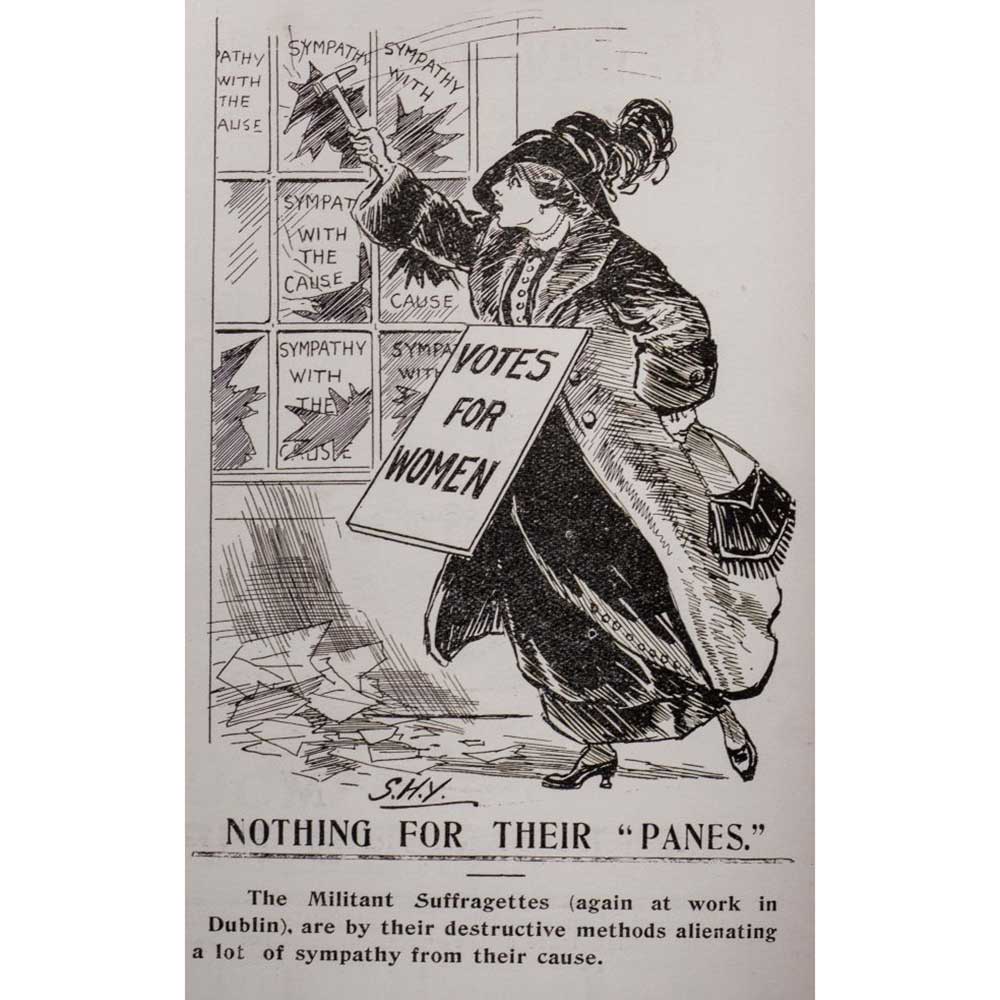
Suffragette smashing windows
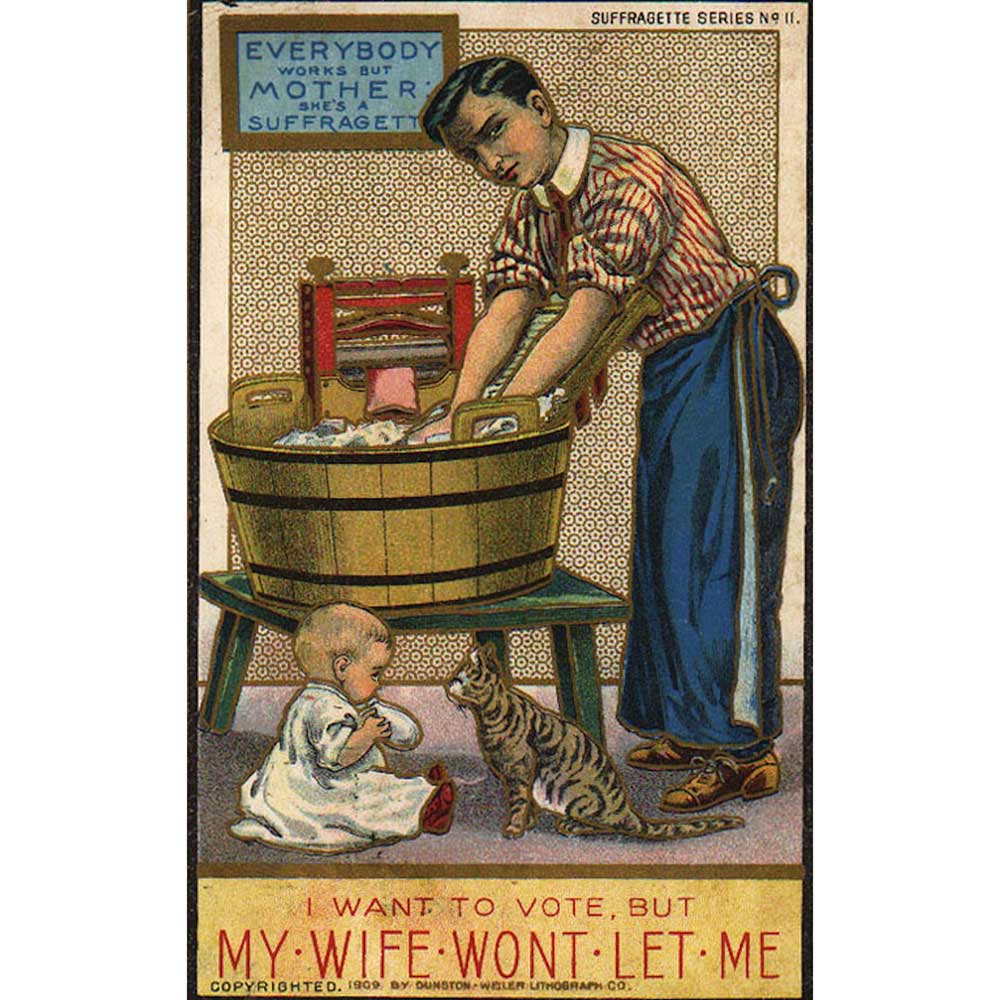
Suffragette Cartoon
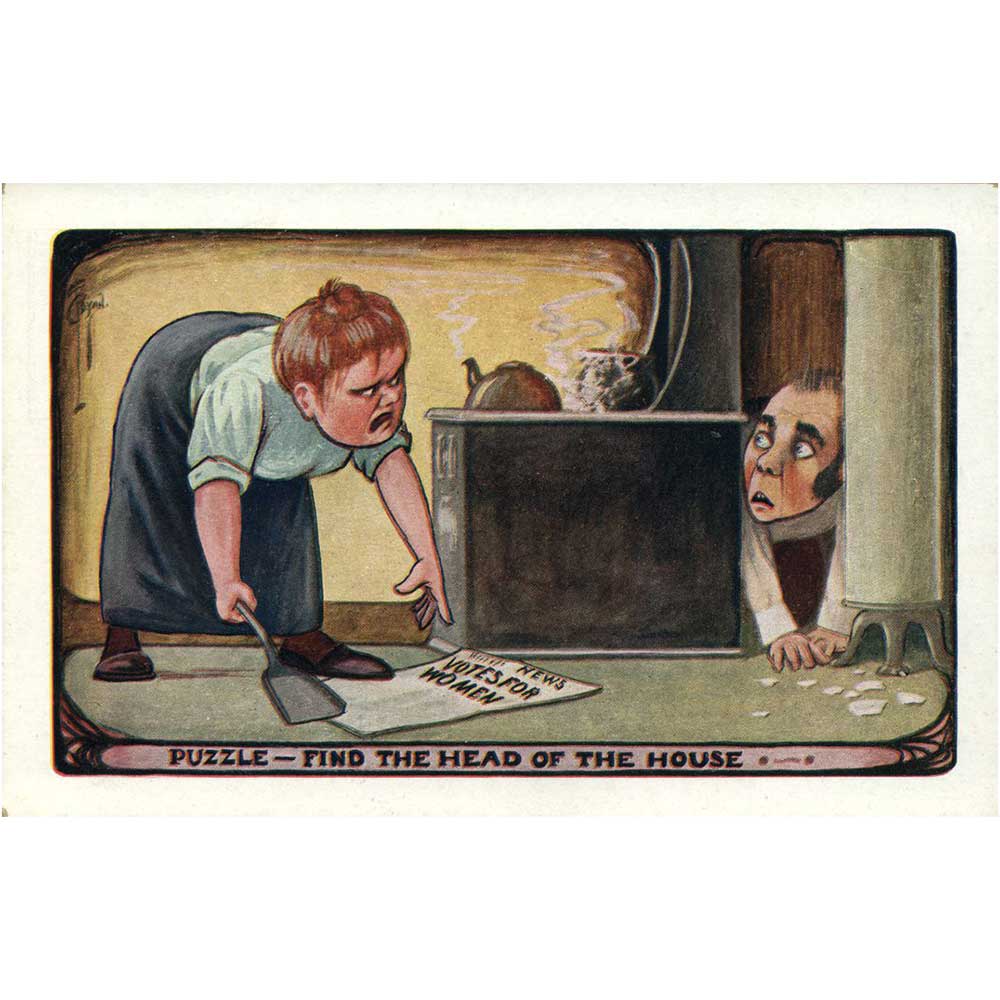
Puzzle Find the Head of the House
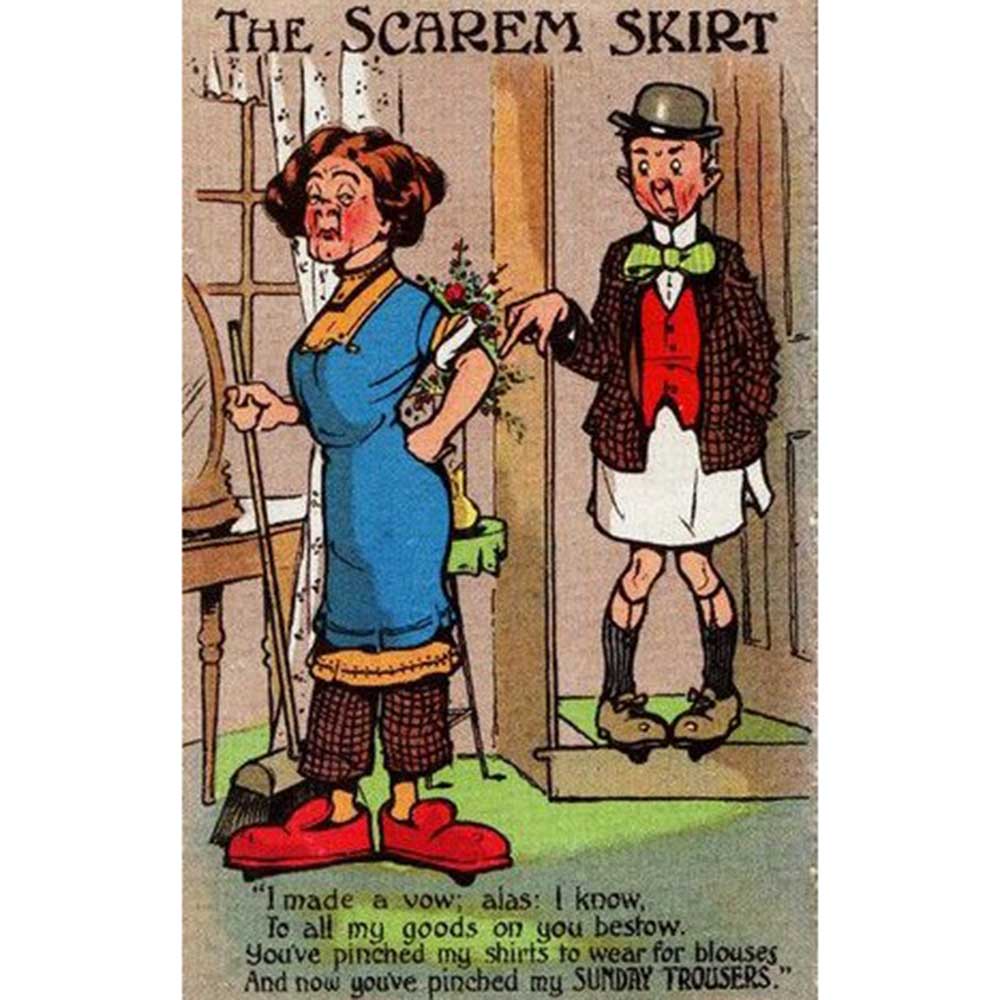
Political Postcard
Flappers, Vamps & Divas
Flappers flaunted their disdain for social norms and epitomized the Roaring Twenties. They wore short skirts, bobbed their hair, and listened to jazz during the Art Deco era. The slang word ‘flap’ originally meant a young prostitute but by the late 19th century it was used in a less derogatory sense to describe a lively teenage girl. The success of the suffragettes after World War I led to the emancipation of women and a relaxation of moral codes in society. Flappers worked outside the home, drove around in fast cars, smoked cigarettes and drank alcohol at lurid parties, which shocked the older generation.
Vamps, derived from vampires, are also known as femmes fatales. The allure and charms of these seductive women ensnare their lovers, often leading them into fatal situations. The femme fatale was often portrayed as the evolution of an evil goddess or a remorseless queen from the ancient world. Her ability to entrance her victim verged on the supernatural and she could suck the virtue out of good men like a sexual vampire
Divas are women of outstanding talent, derived from the Italian for a female deity. They originated as singers in opera but are now recognized in all the arts. A “diva attitude” implies a woman who is difficult to please. Divas in the fired arts during the Art Deco era included Daisy Makeig Jones, the creator of Wedgwood’s Fairyland Lustre Ware, and Clarice Cliff, designer of Wilkinson’s Bizarre Ware. Both these women had extraordinary careers in the British Potteries, a world dominated by men. Traditionally, women were decorators, hand-painting or applying transfers on the factory floor, and it was unusual for them to be acknowledged as leading designers.
Read more...
Clarice Cliff: A Bizarre Affair
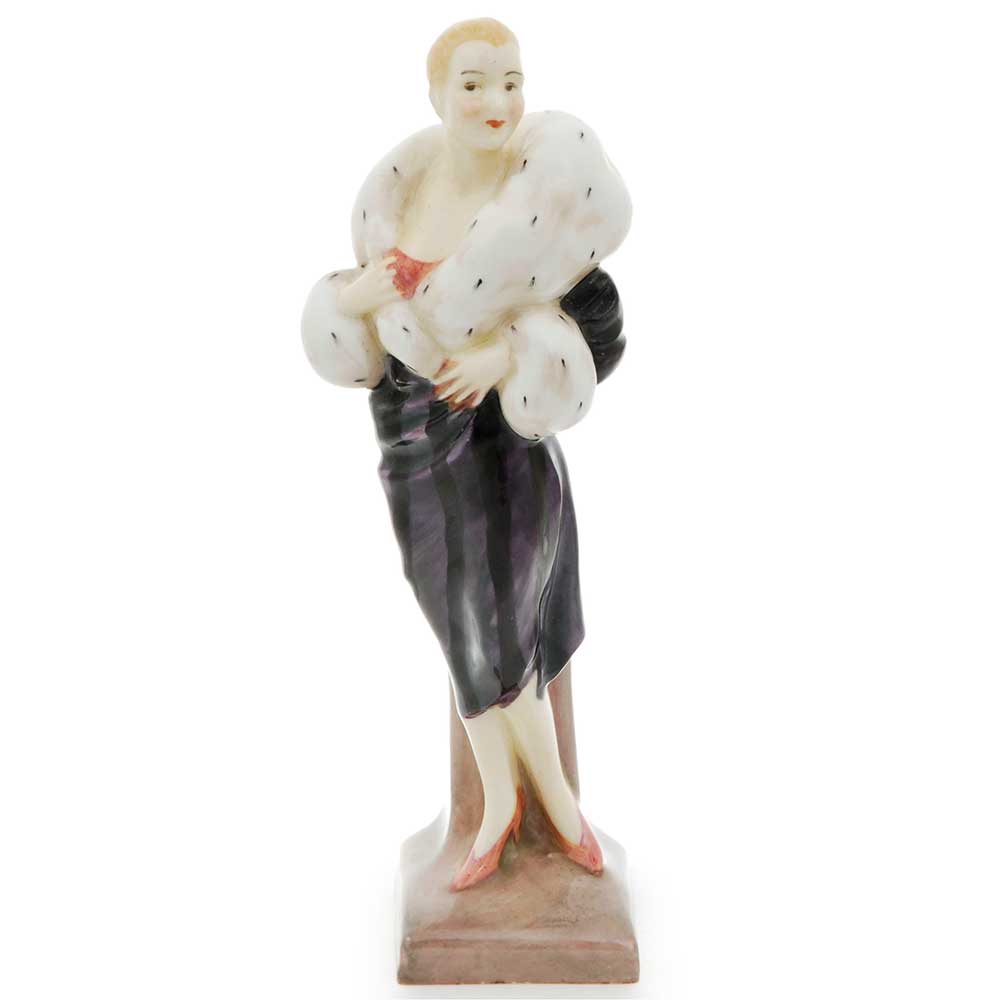
Royal Doulton Miss 1927
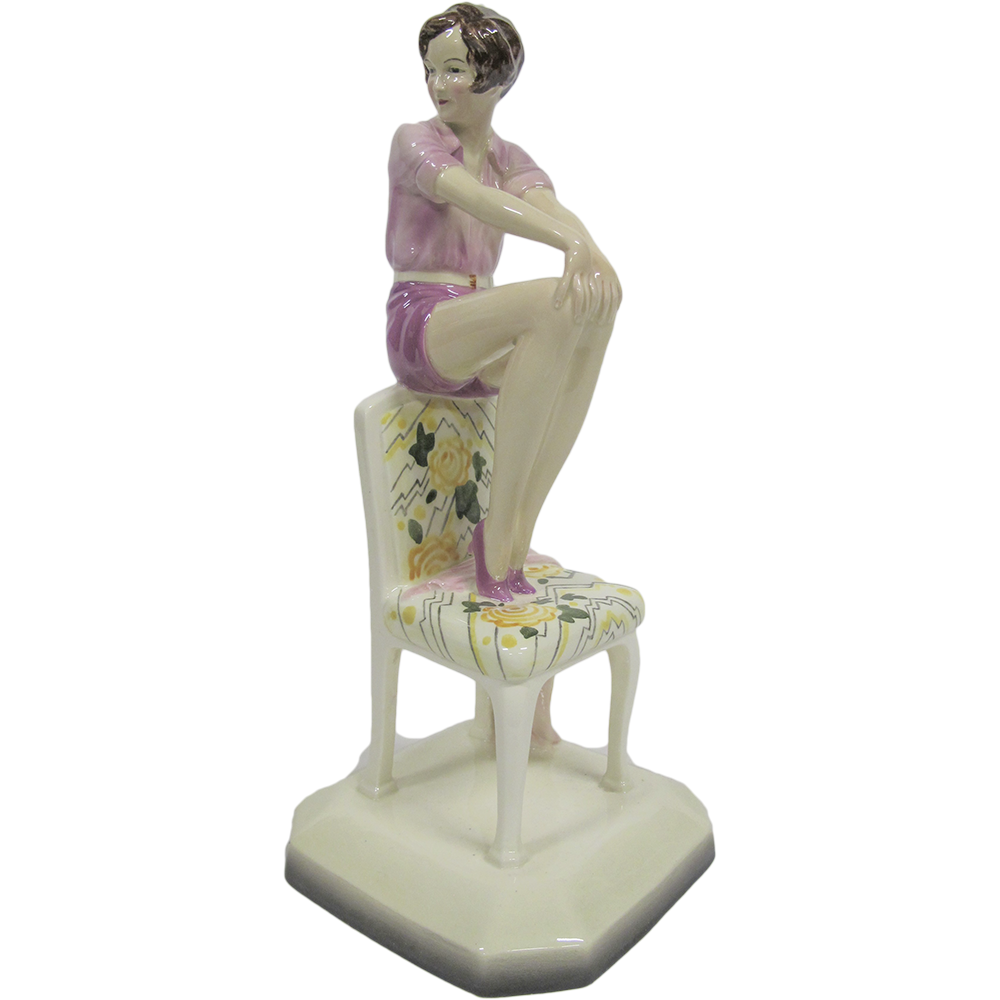
Goldscheider Girl
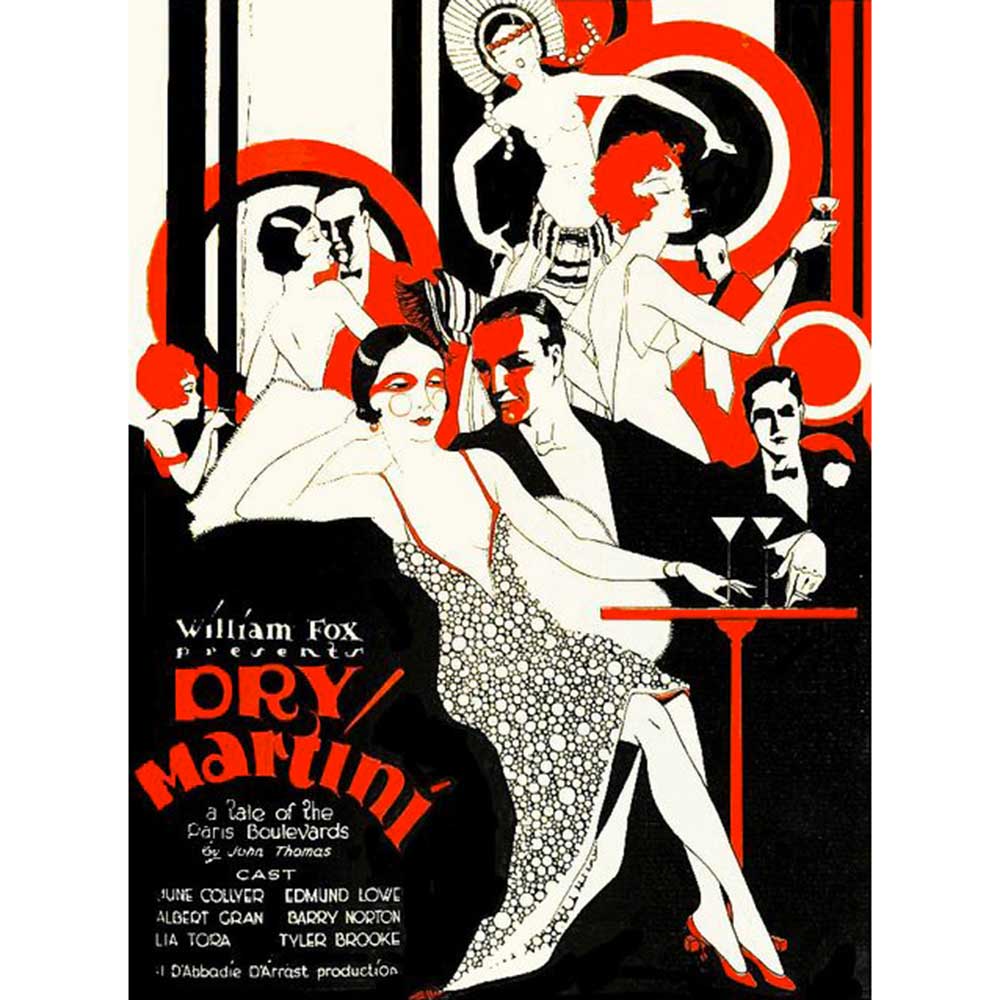
Dry Martini Poster
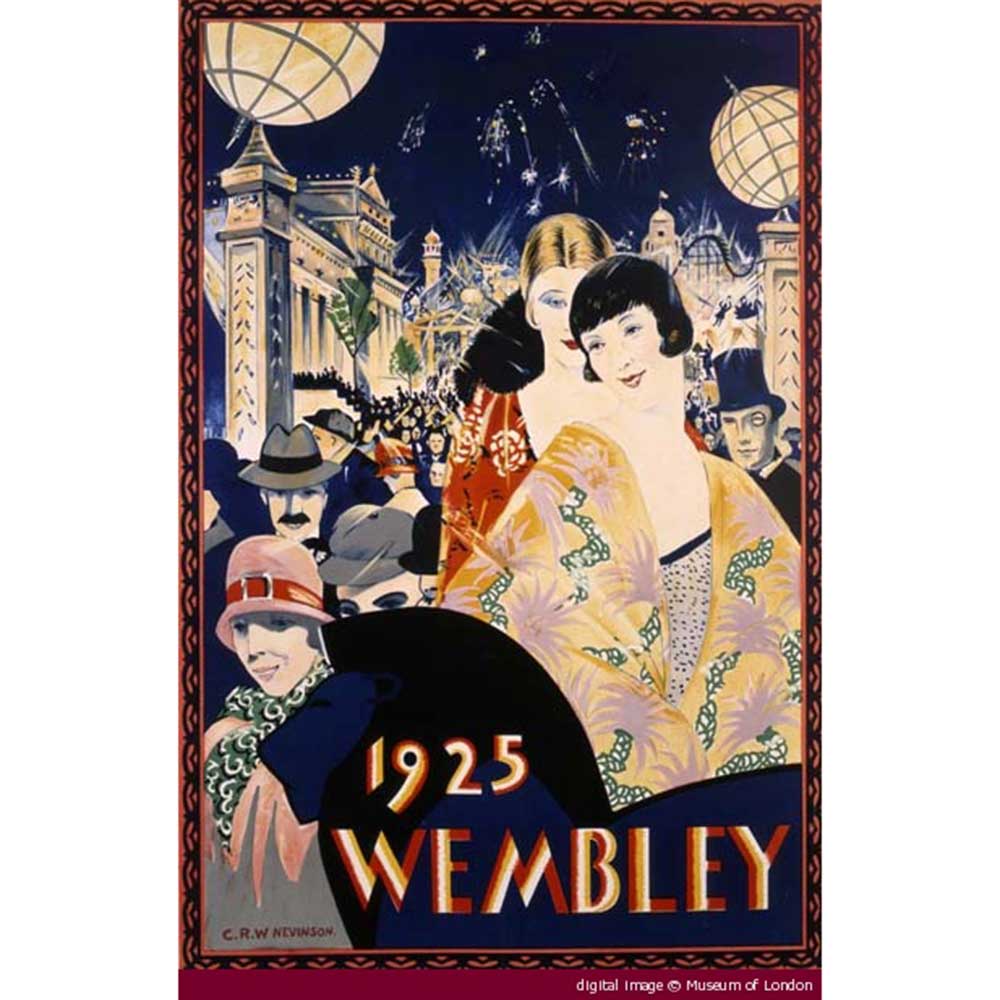
1925 Wembley Poster
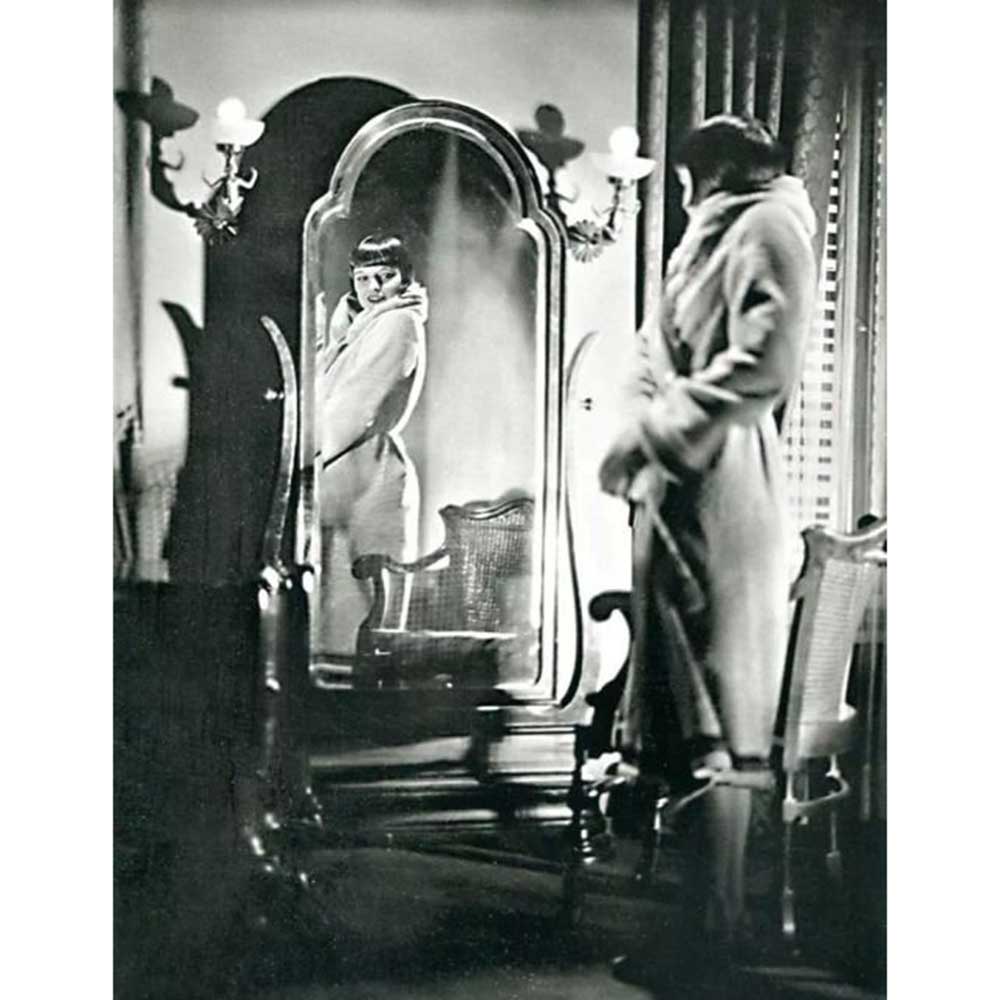
Louise Brooks
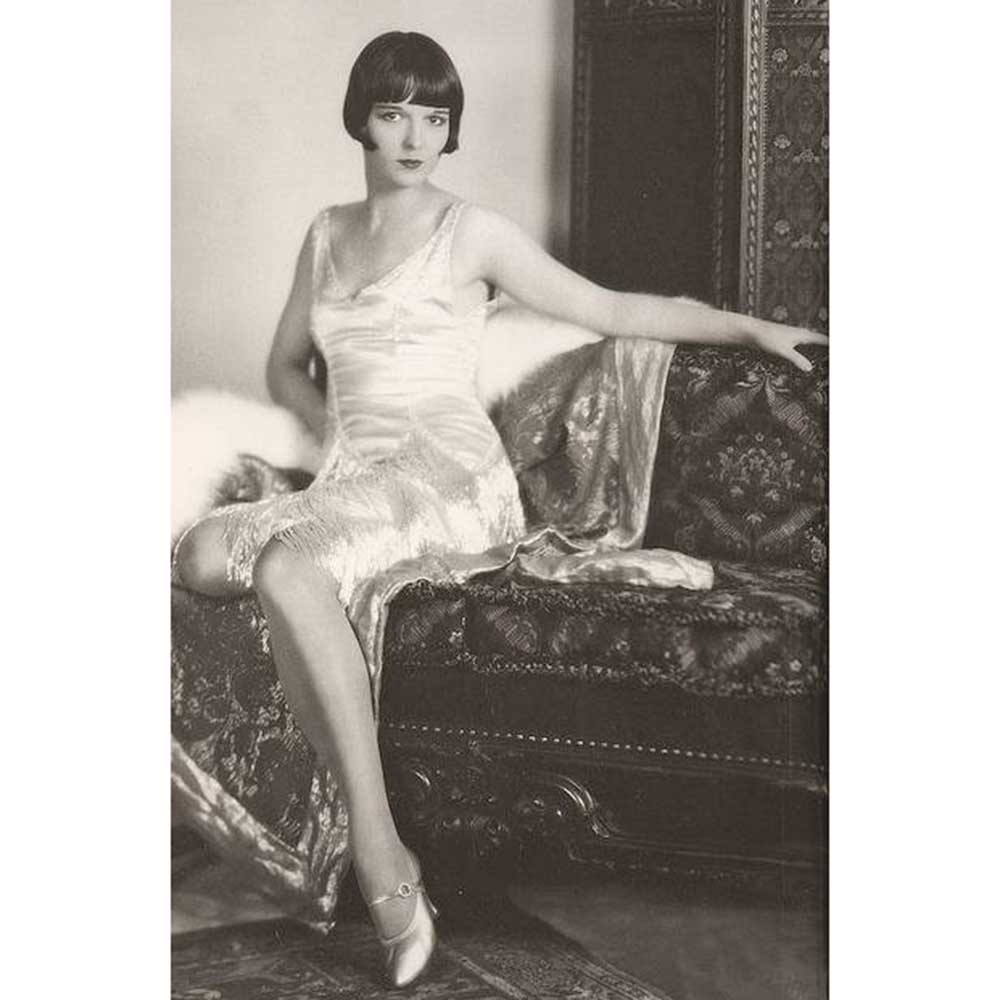
Louise Brooks
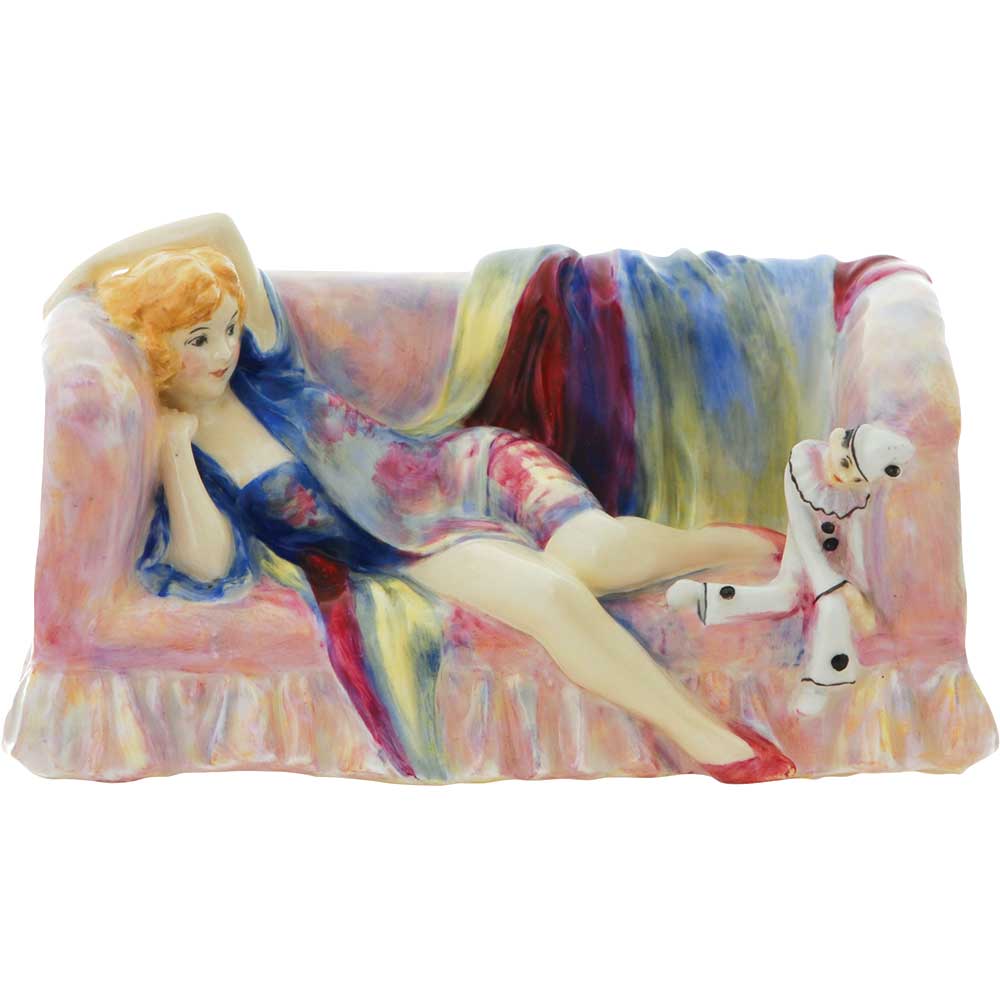
Royal Doulton Dreamland
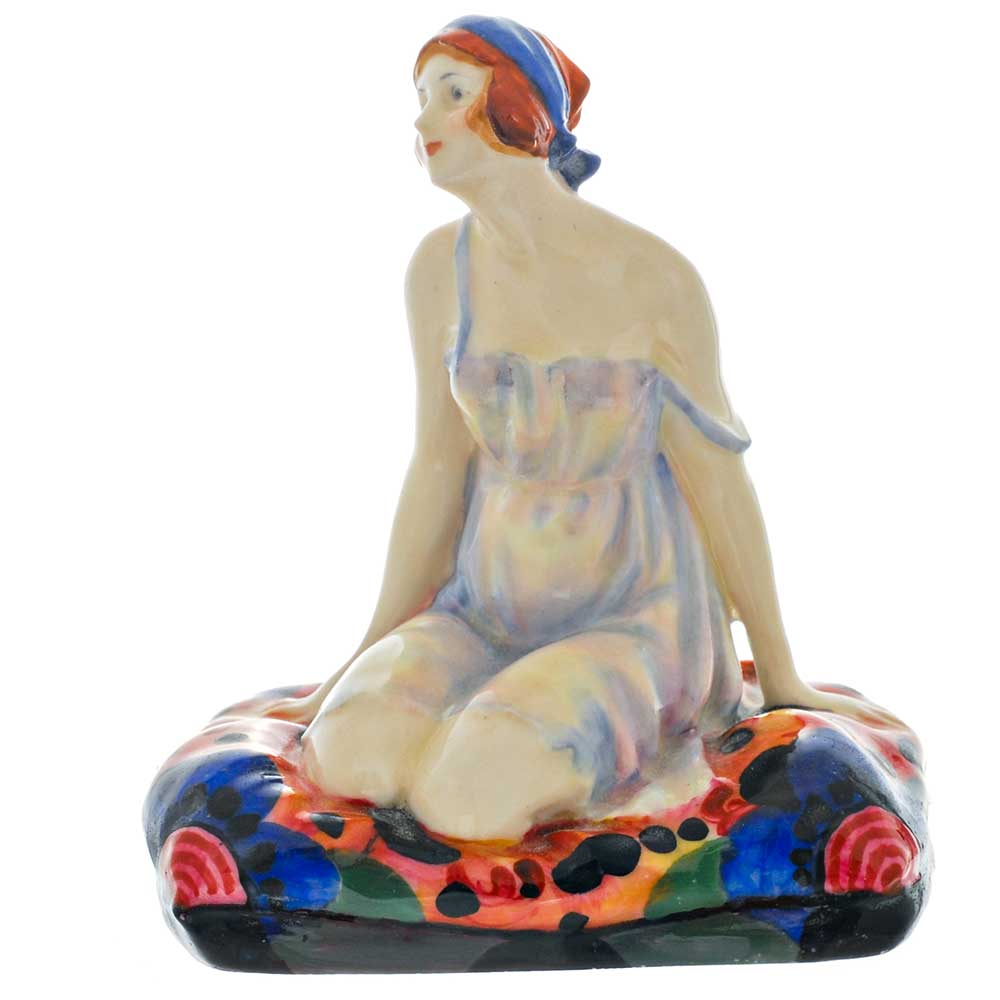
Royal Doulton Negligee
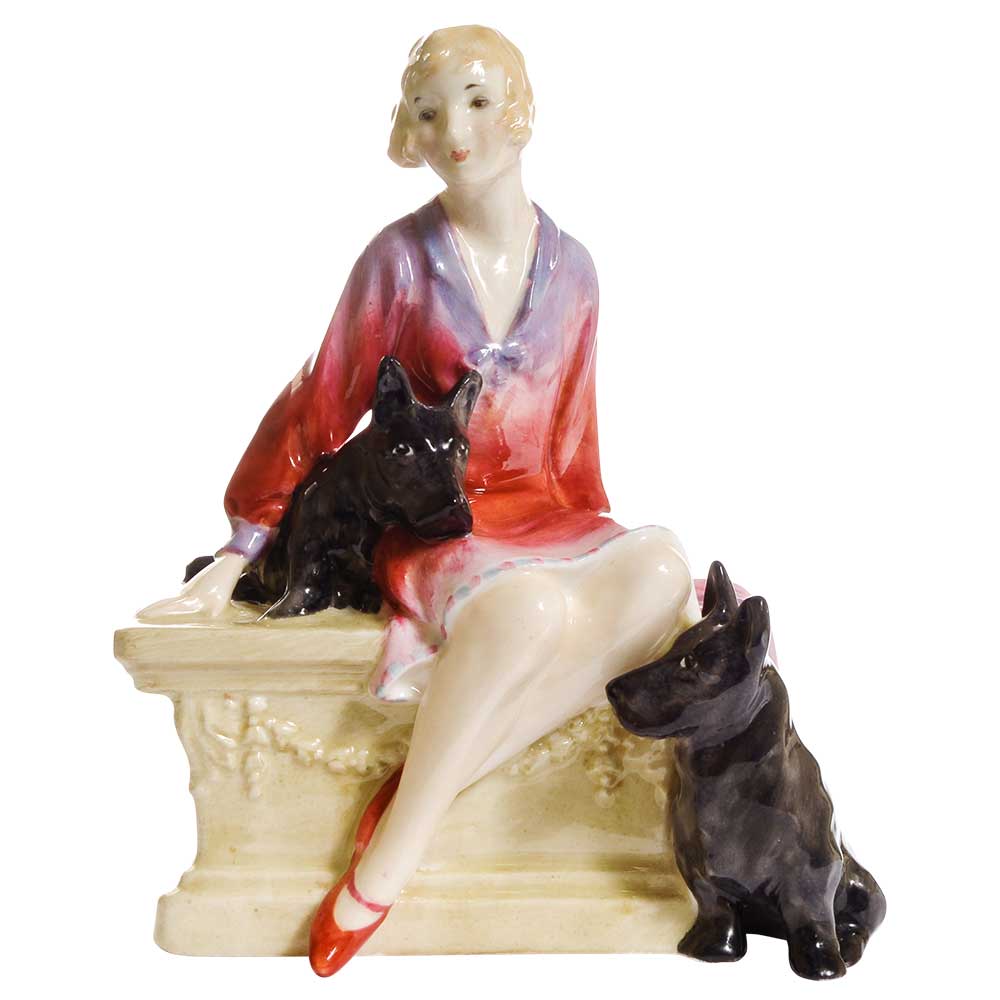
Royal Doulton Scotties
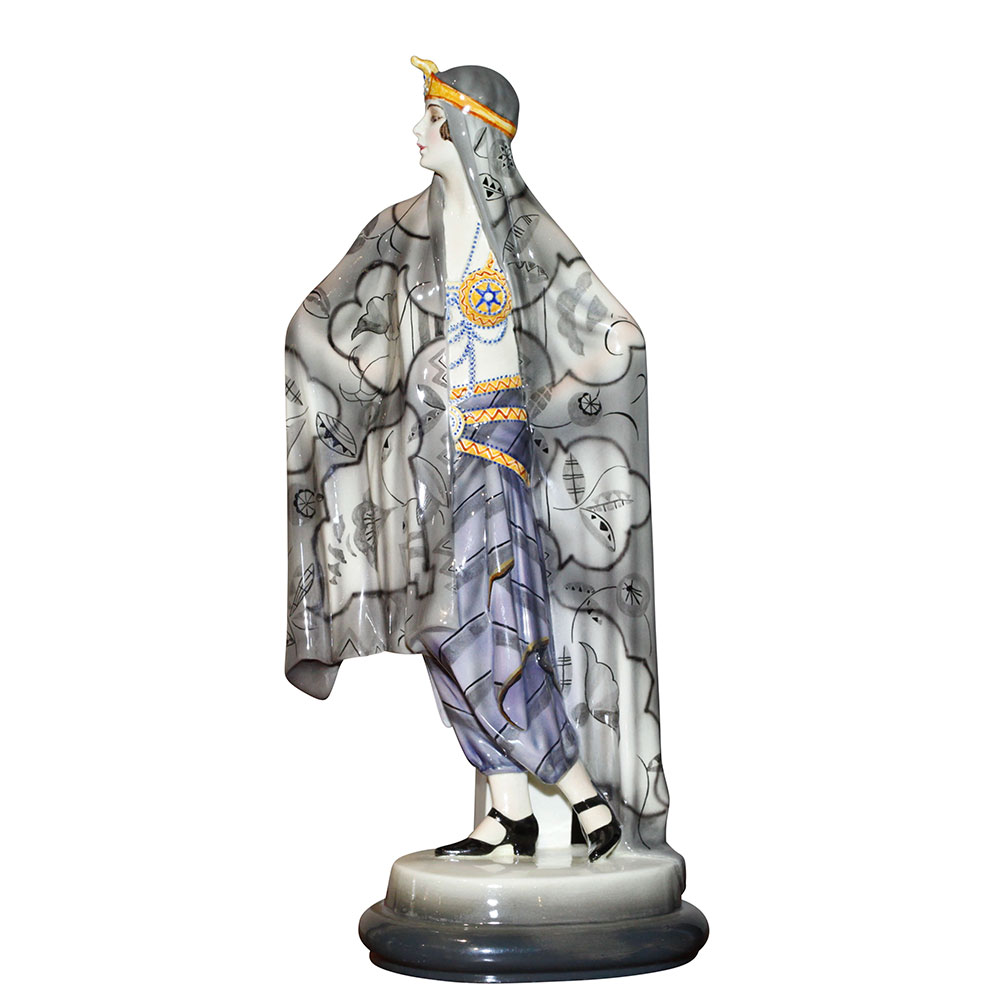
Goldscheider Aida
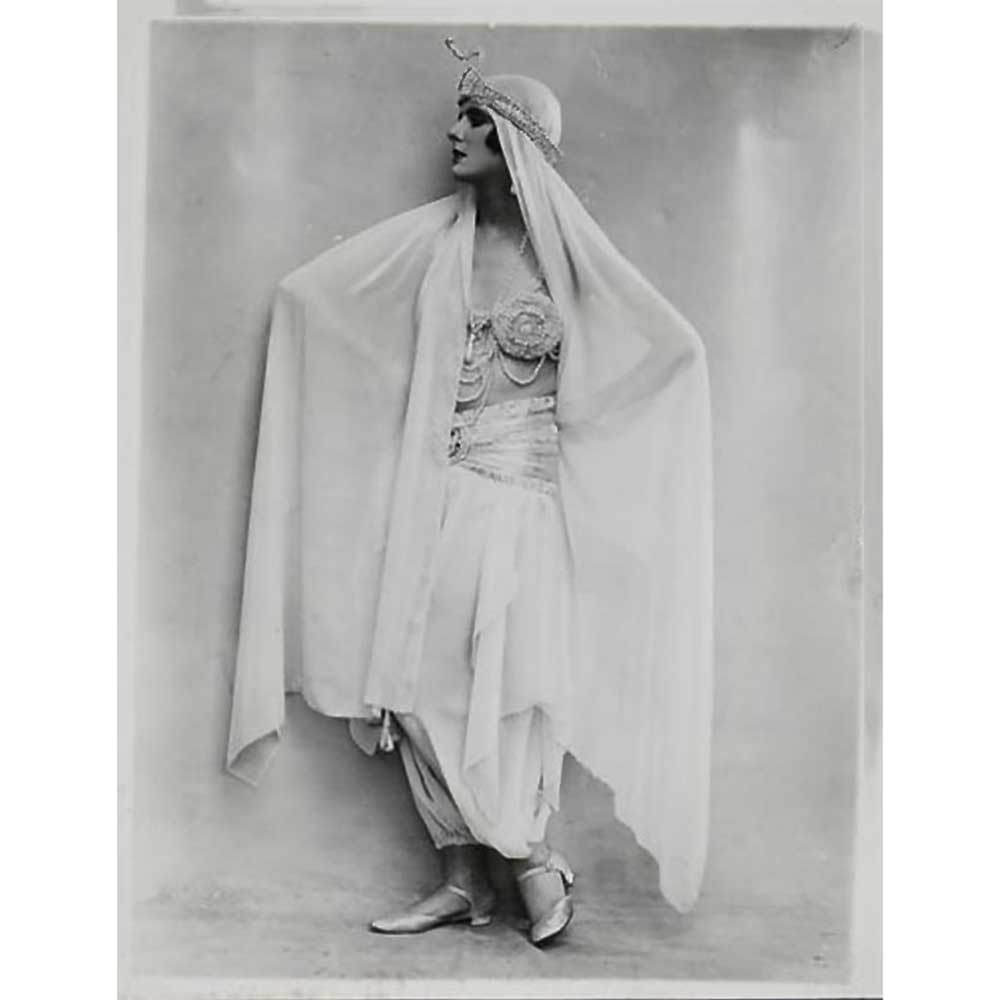
Lore Wiegand
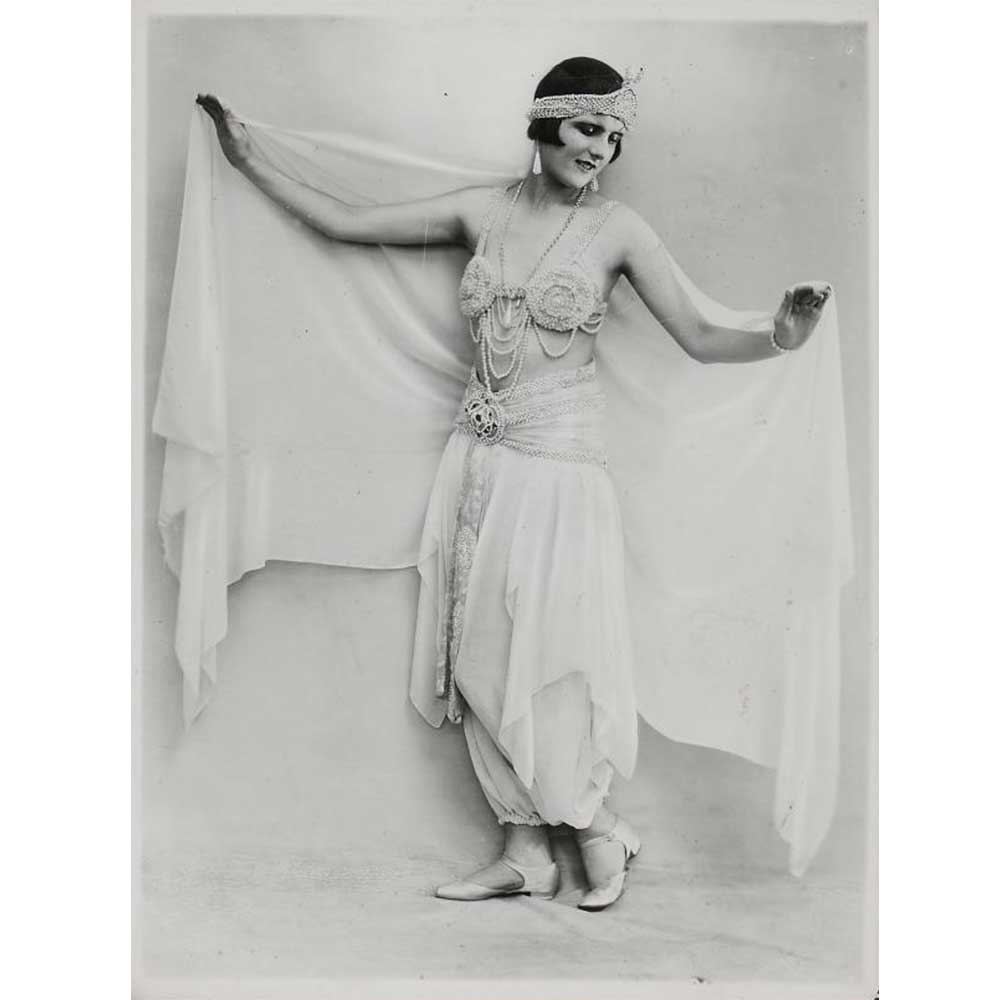
Lore Wiegand
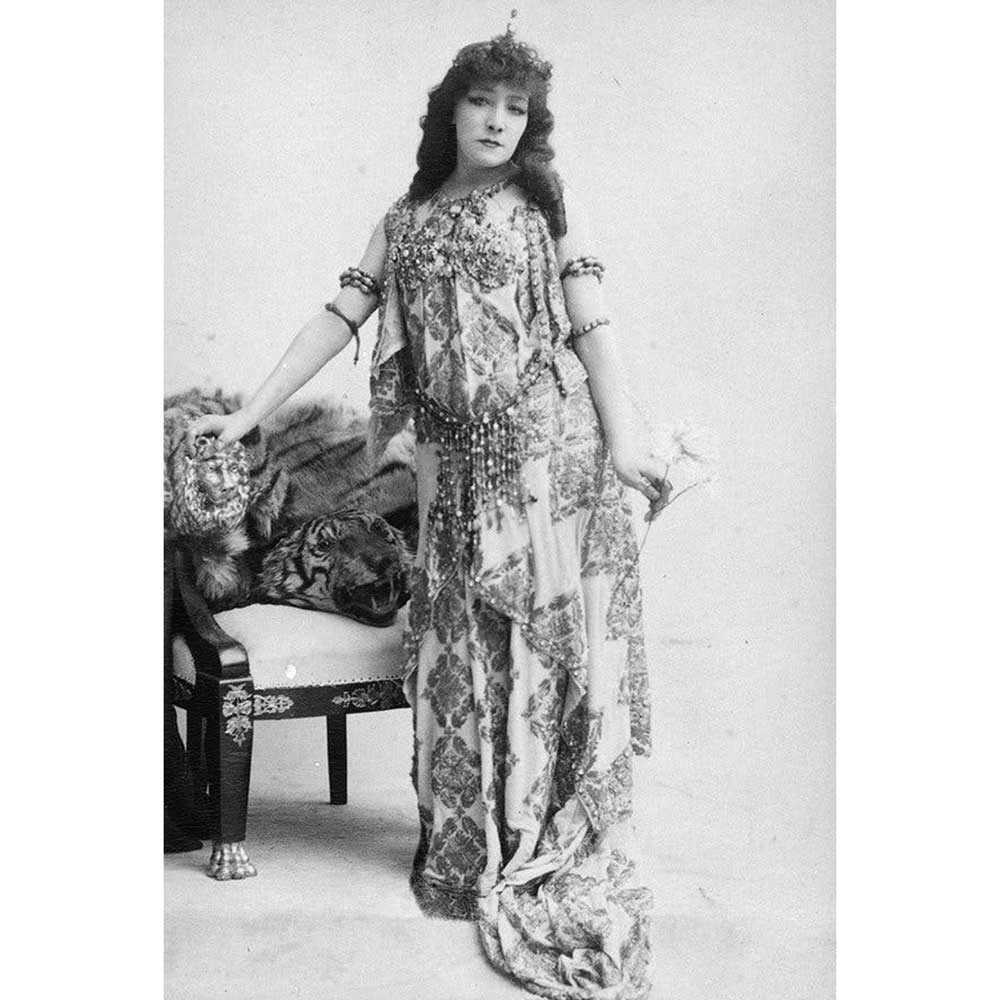
Sarah Bernhardt
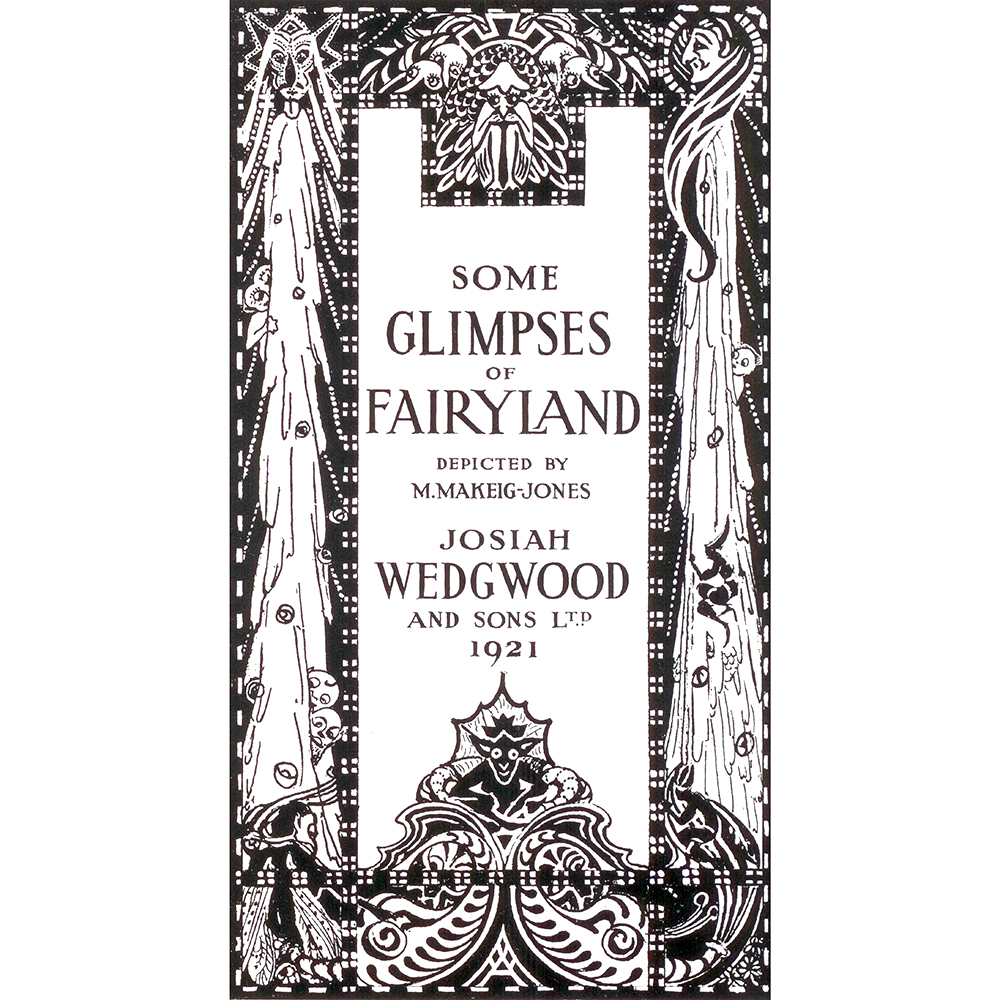
Fairyland Catalog
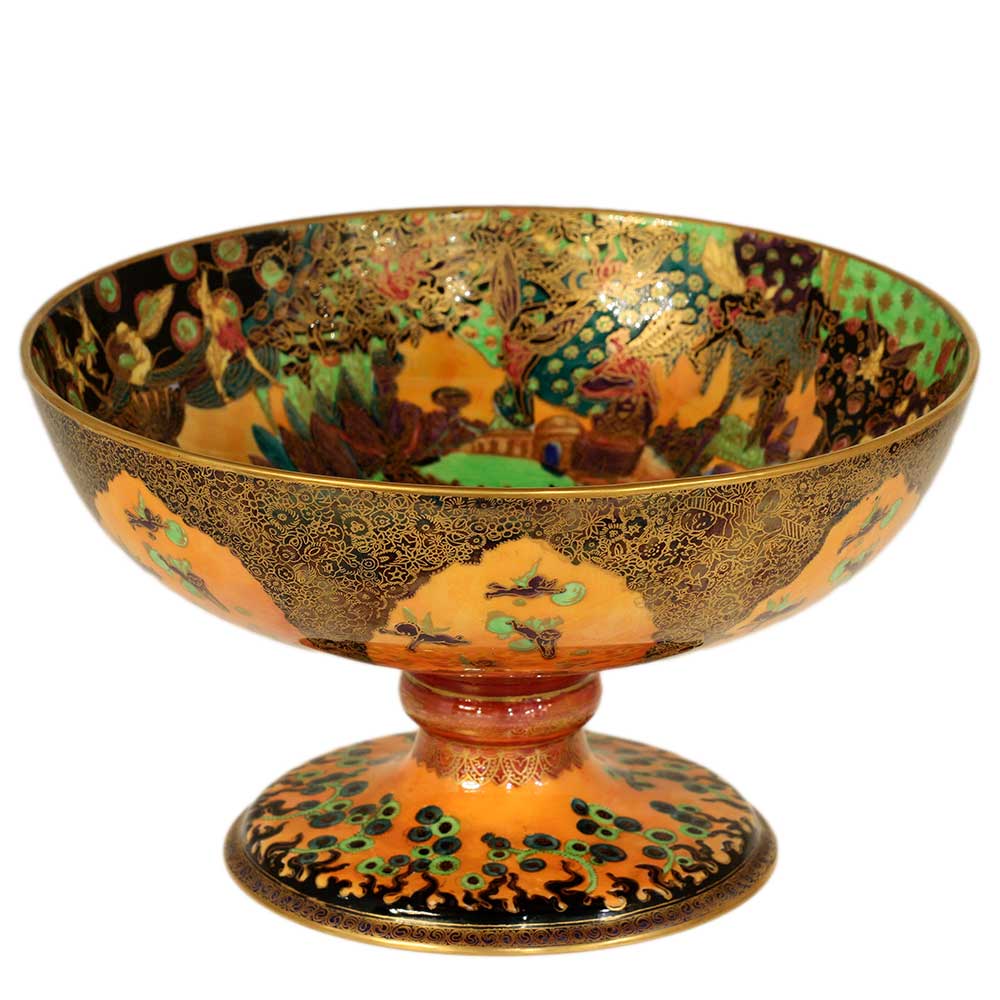
Wedgwood Fairyland Lustre Flame Chalice Bowl
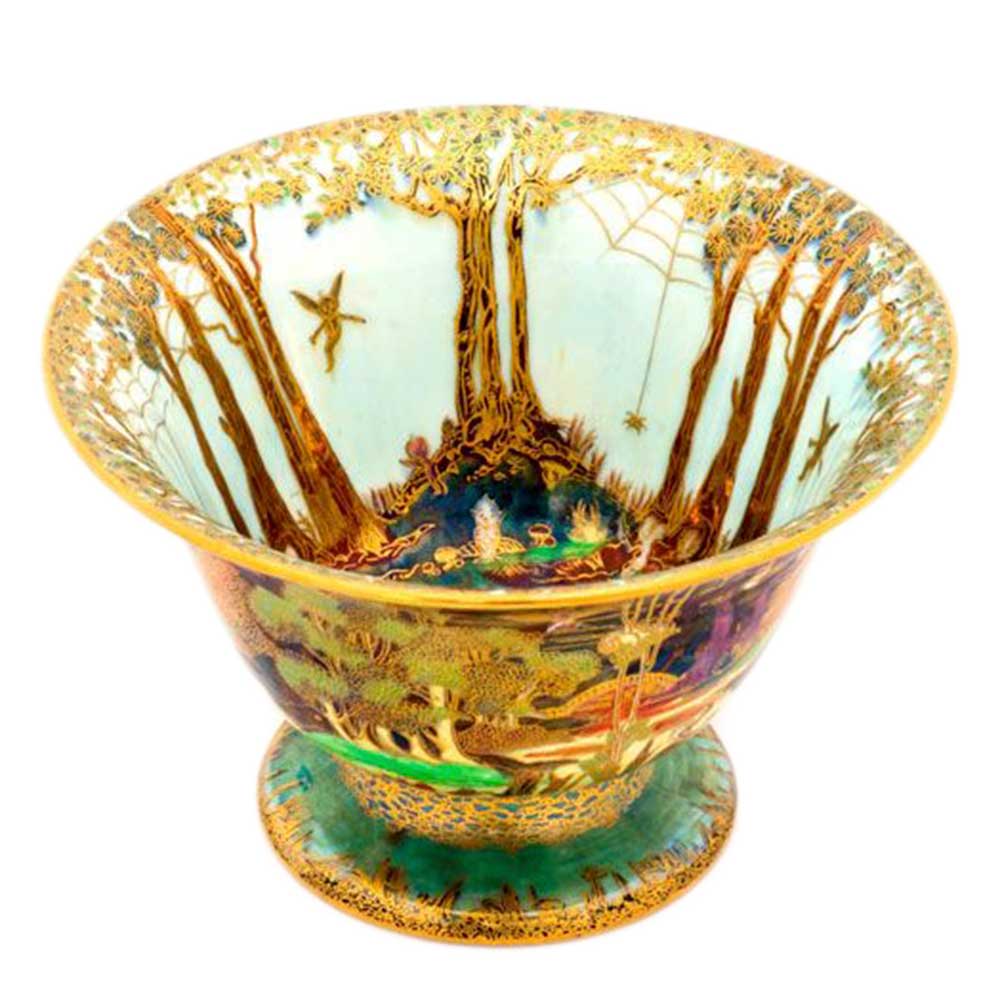
Wedgwood Fairyland Lustre Spider & Web Bowl by D. Makeig-Jones
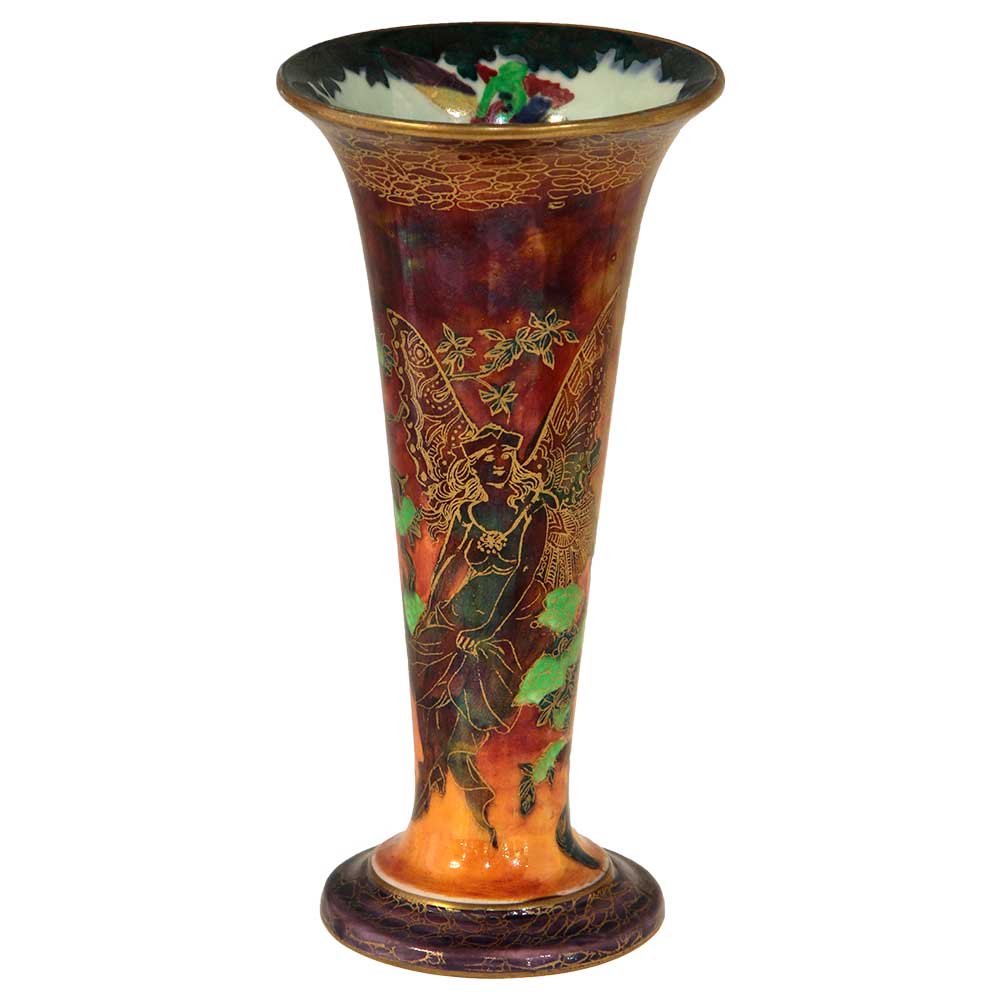
Wedgwood Fairyland Lustre by D. Makeig-Jones
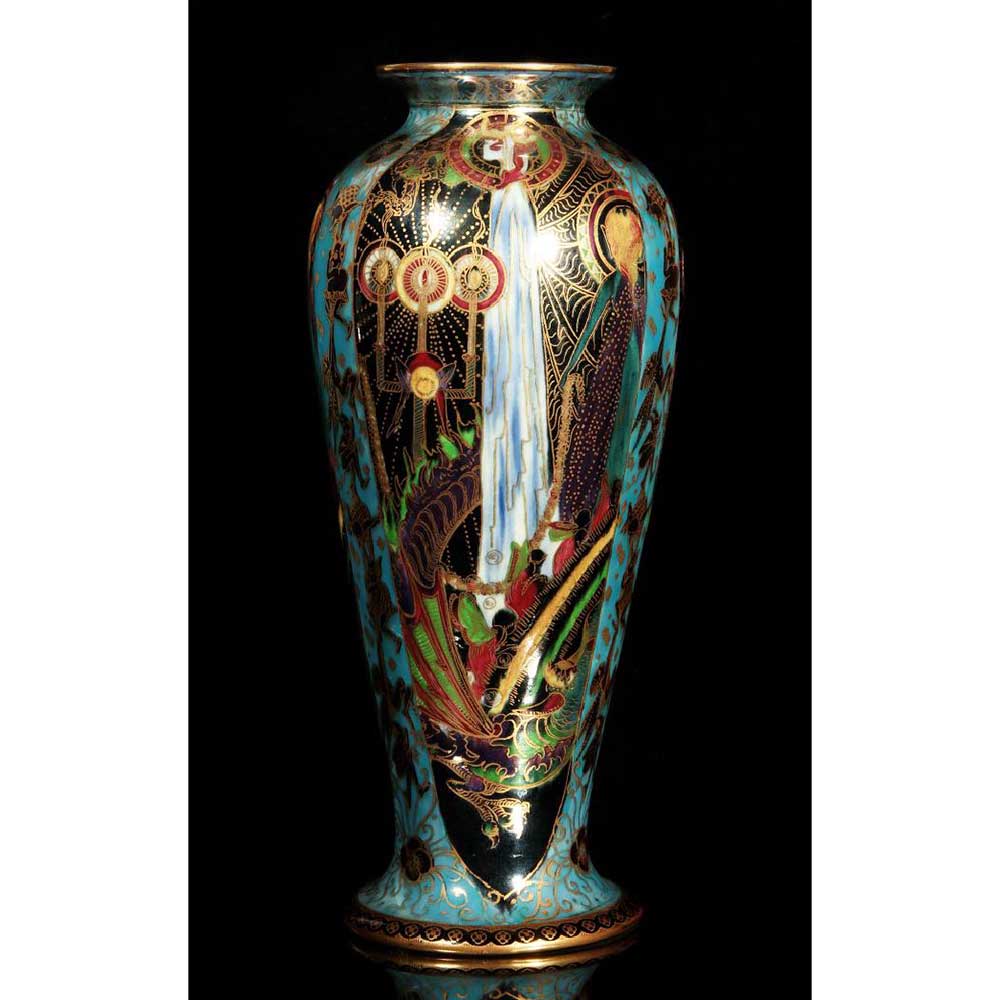
Wedgwood Fairyland Lustre Candlemas by D. Makeig-Jones
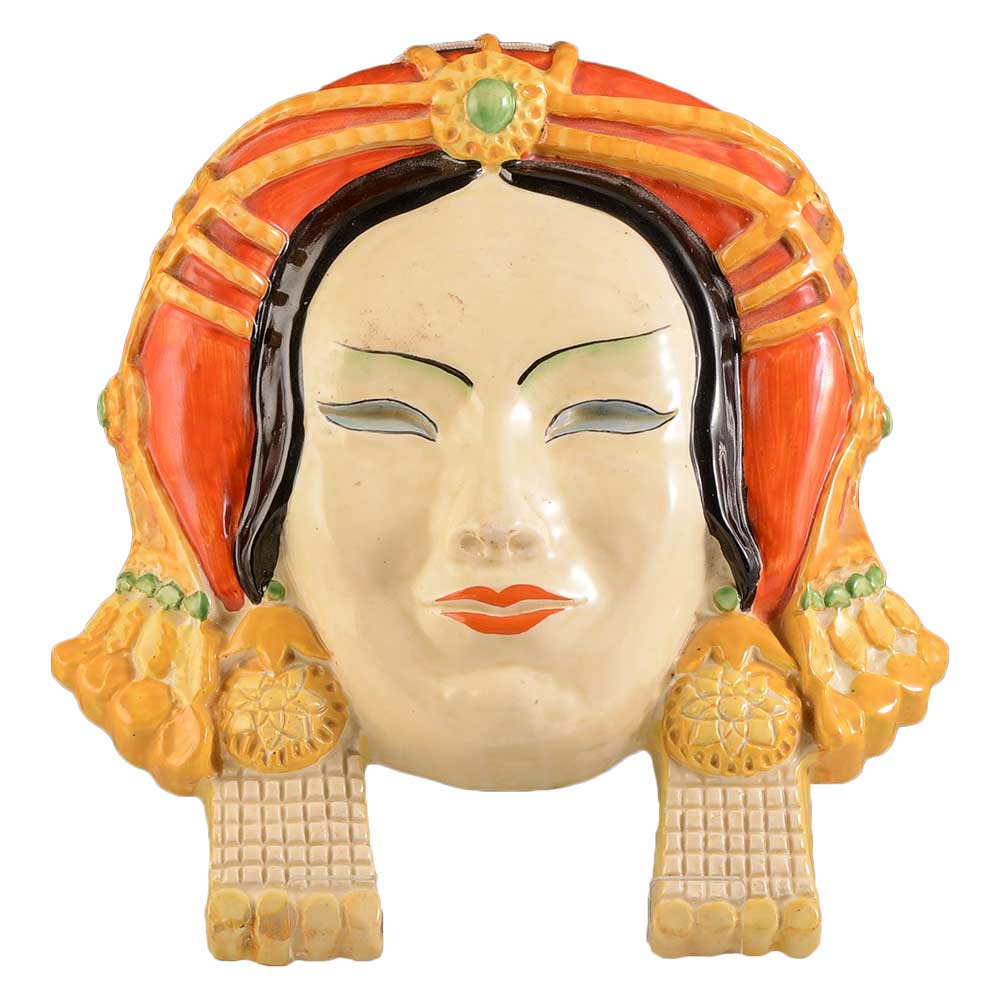
Royal Doulton Chahar for Clarice Cliff by P. Davies
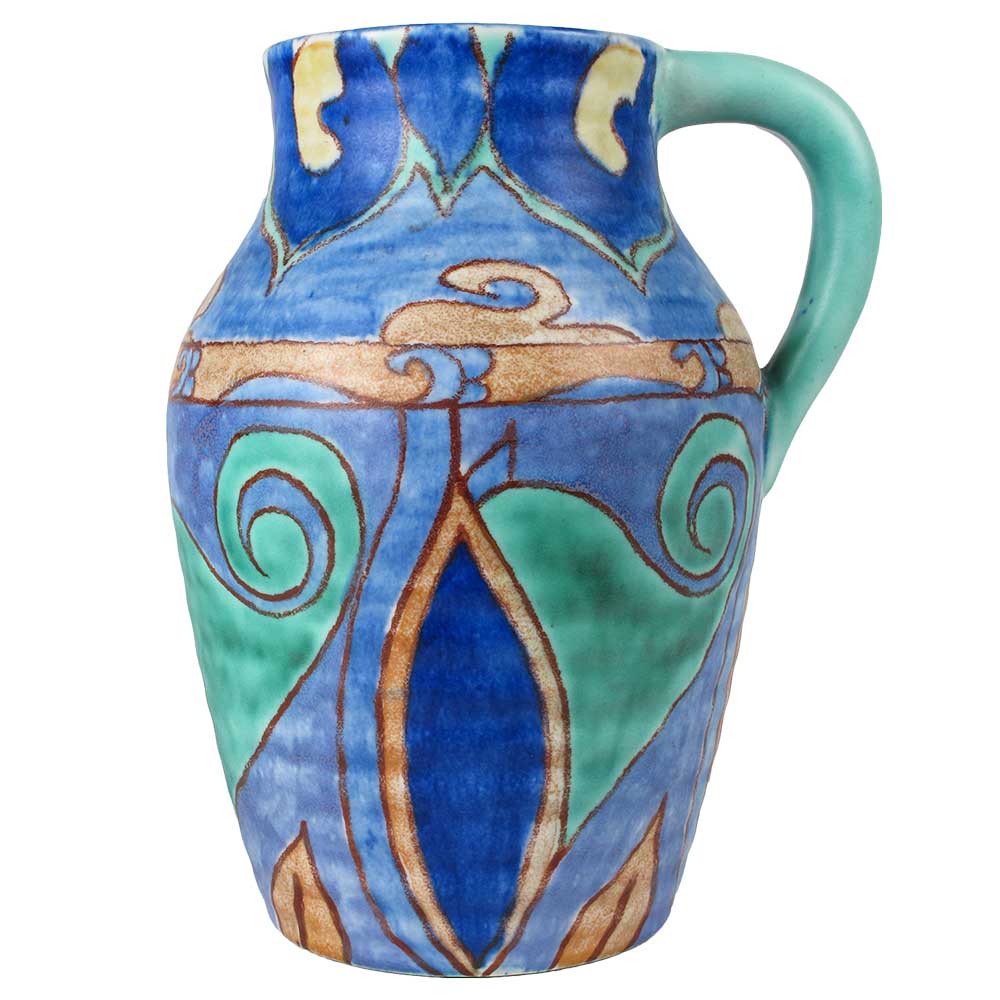
Clarice Cliff Persian Jug
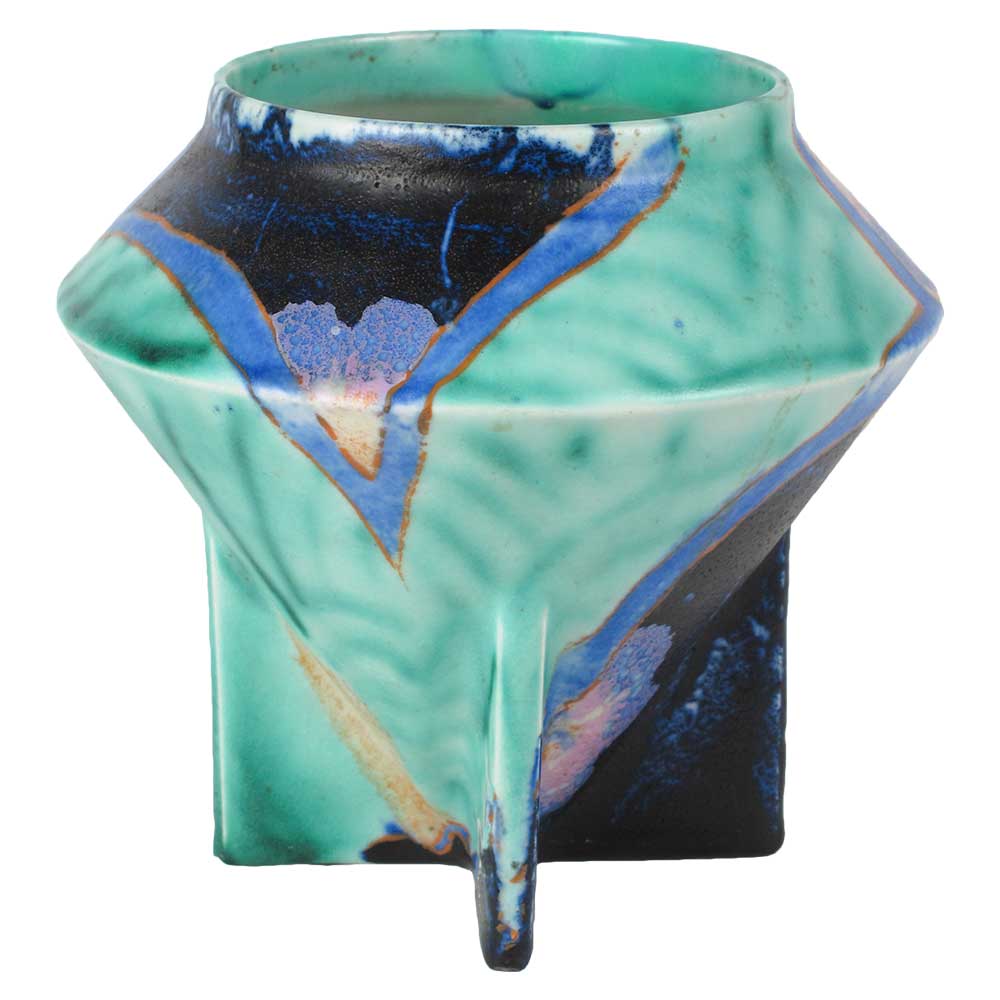
Clarice Cliff Inspiration Vase
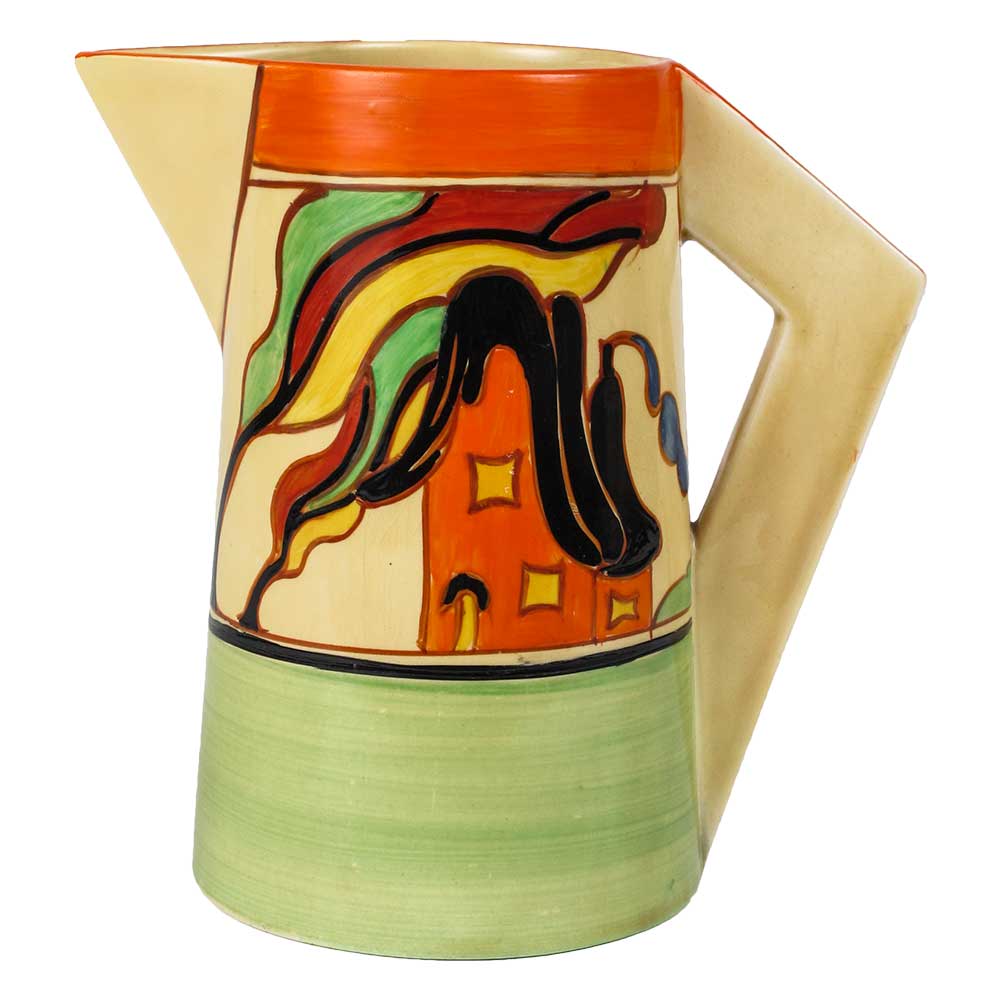
Clarice Cliff Cottage Jug
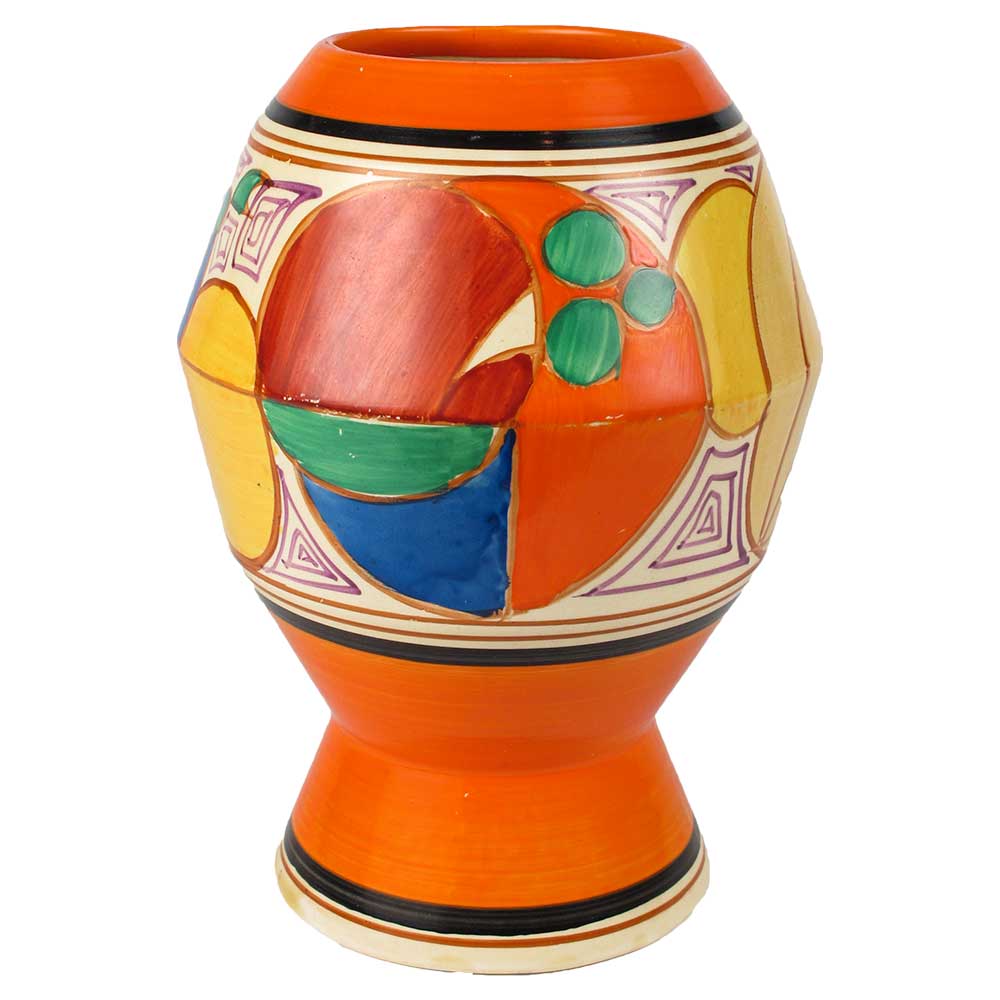
Clarice Cliff Vase
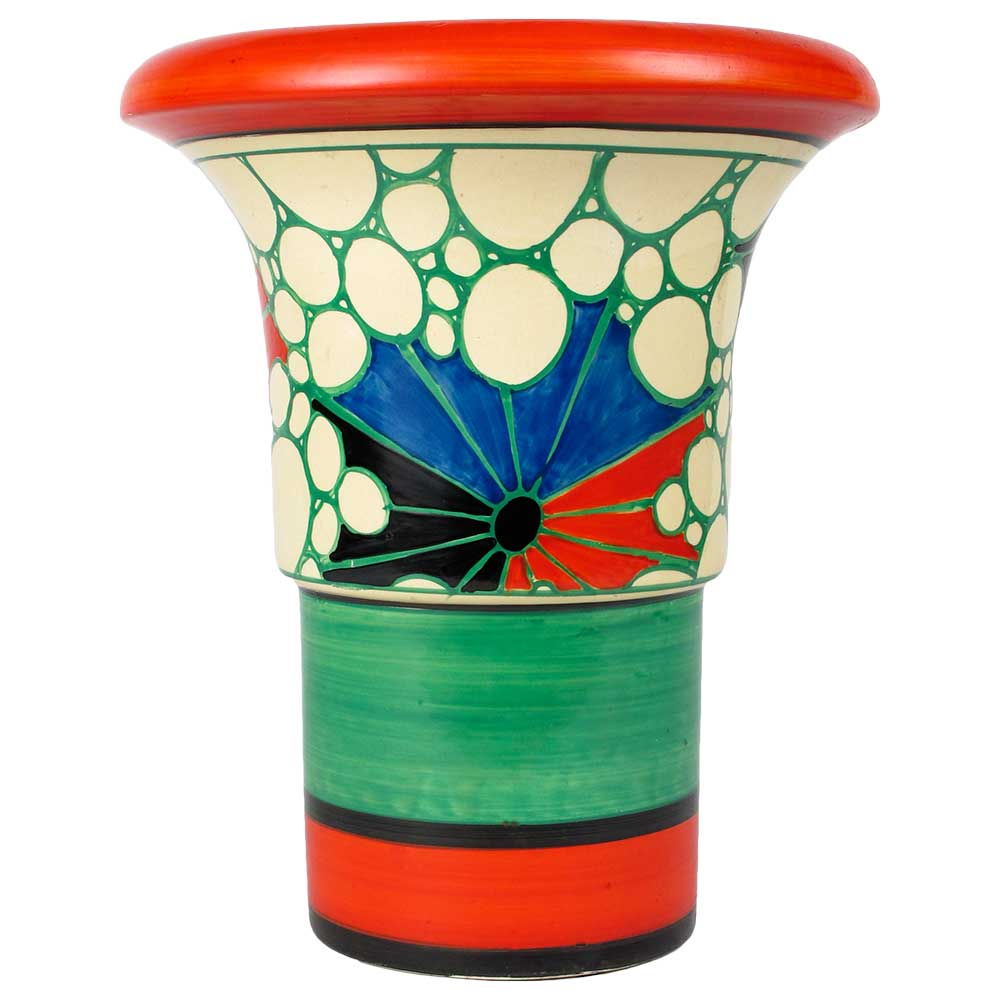
Clarice Cliff Vase
Muses & Mistresses
Muses and artist’s models have been portrayed often as vamps and wanton women. Leslie Harradine, Royal Doulton’s leading sculptor during the 1920s and 30s, twice fell in love with his models and re-married, fathering six children. Clearly, he adored women and portrayed them nostalgically as figurines in Victorian crinolines as well as in the flapper fashions of his day. Many of his designs were based on illustrations and advertisements in ladies’ magazines as shown in the research begun by the late Jocelyn Lukins and continued by Christopher Evans, editor of the Doulton Collectors Club magazine in the UK.
On-going research into the Goldscheider factory in Austria has shown that many of Joseph Lorenzl’s Art Deco figures were inspired by the celebrities of stage and screen. He worked from studio photographs circulated as postcards of the stars to create stunning portraits in porcelain. Similarly, at the Rosenthal factory in Germany, Constantin Holzer-Defanti was starstruck by the Weimar cabaret dancers, such as Anita Berber.
Read more...
The Golden Years of Goldscheider
Rosenthal: A Porcelain Performance
See the Reflections exhibition presented by Christopher Evans currently at the Wedgwood Visitor Center in Stoke-on-Trent.
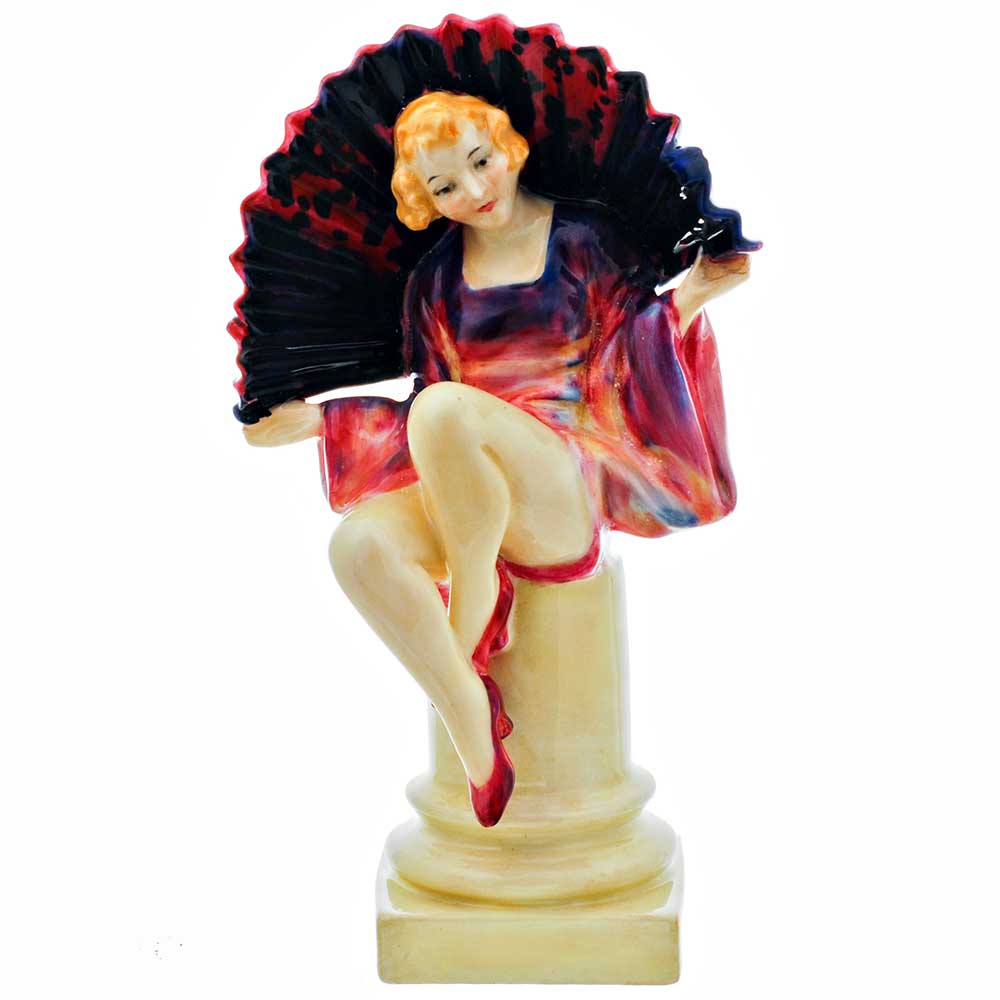
Royal Doulton Angela by L. Harradine
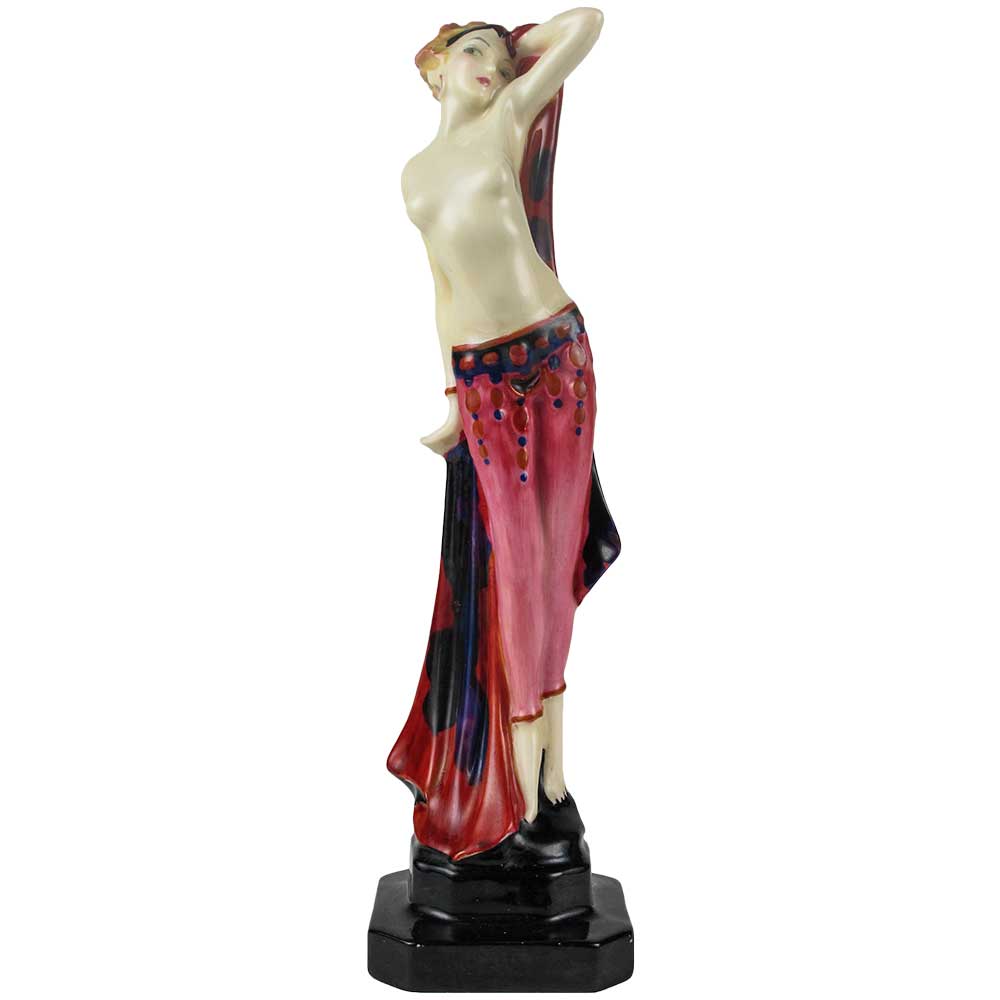
Royal Doulton Carnival by L. Harradine
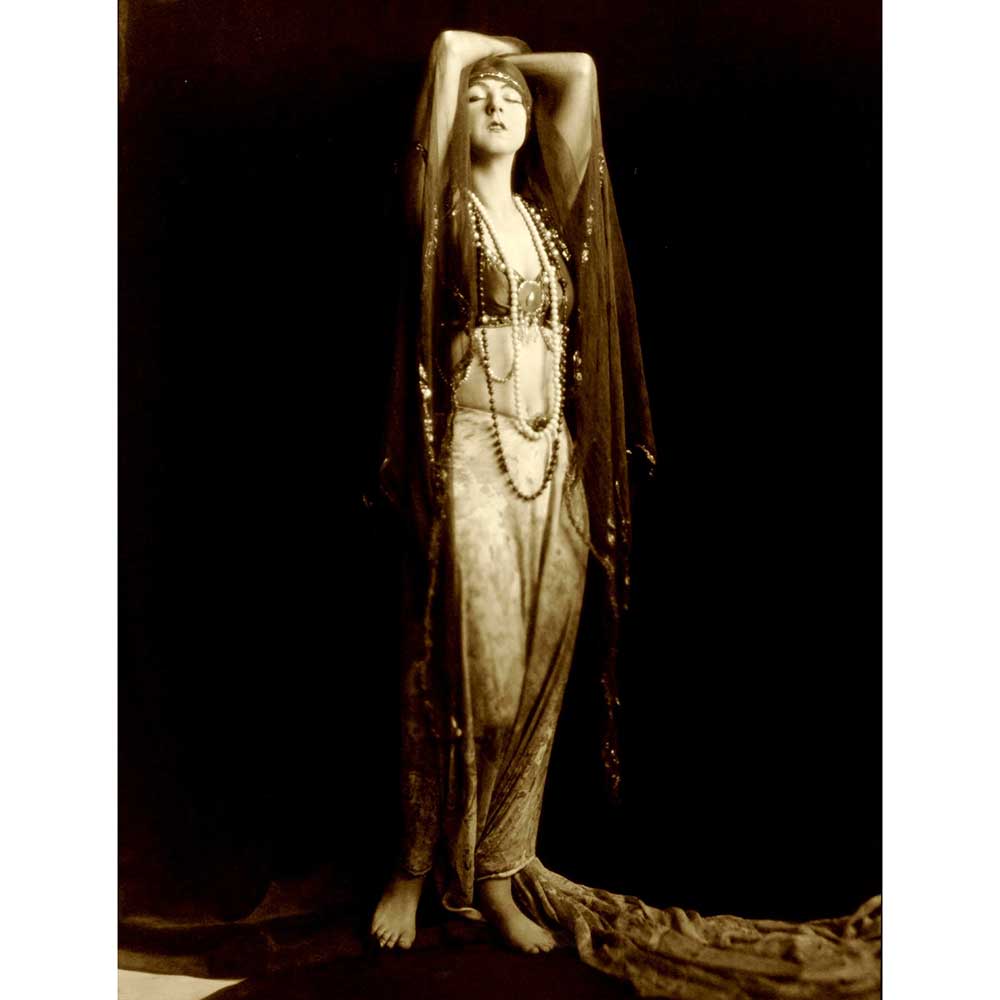
Ruth St. Denis
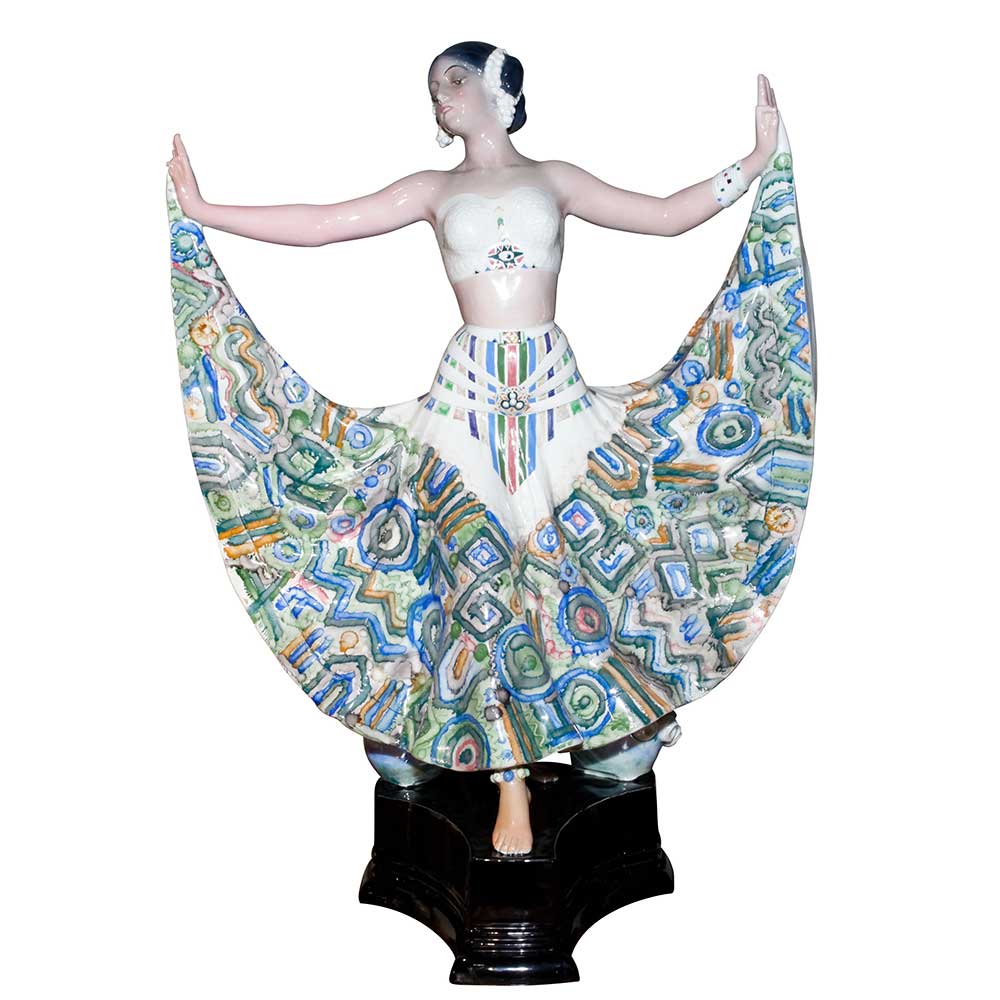
Goldscheider Ruth by Rose
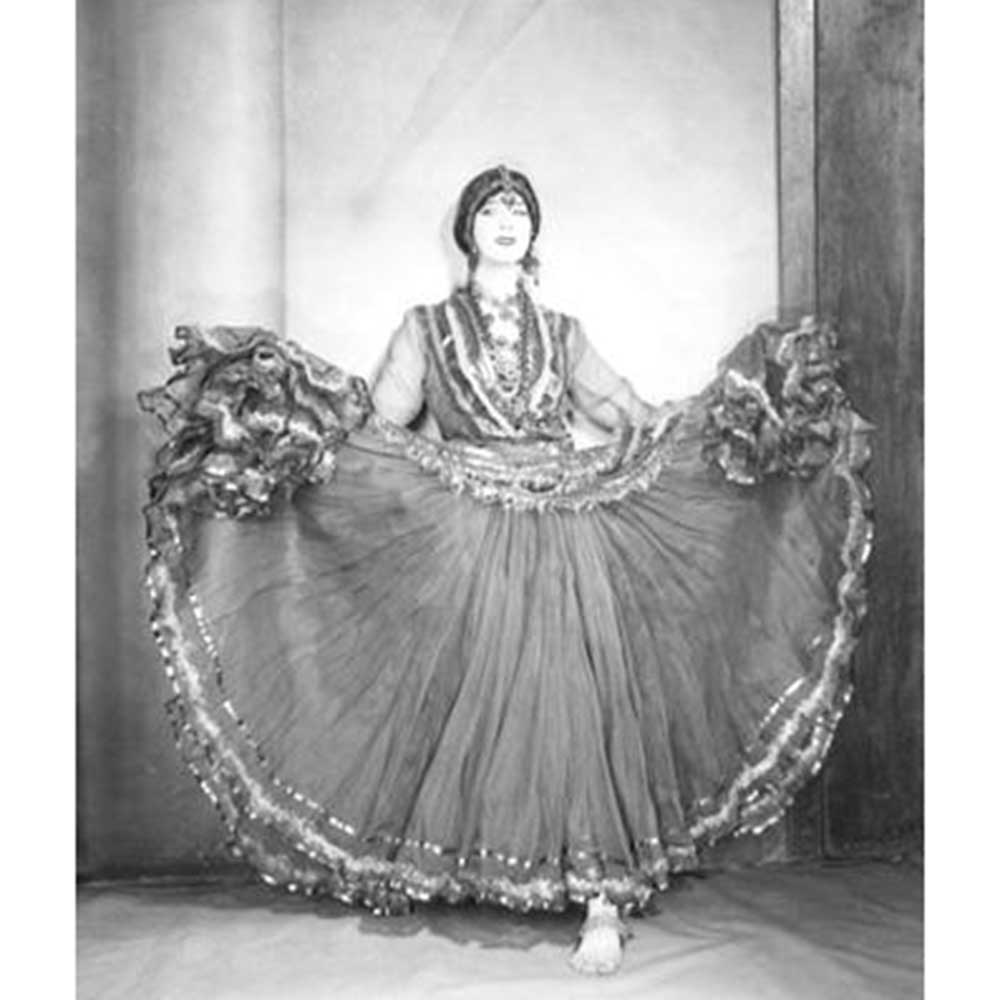
Ruth St Denis
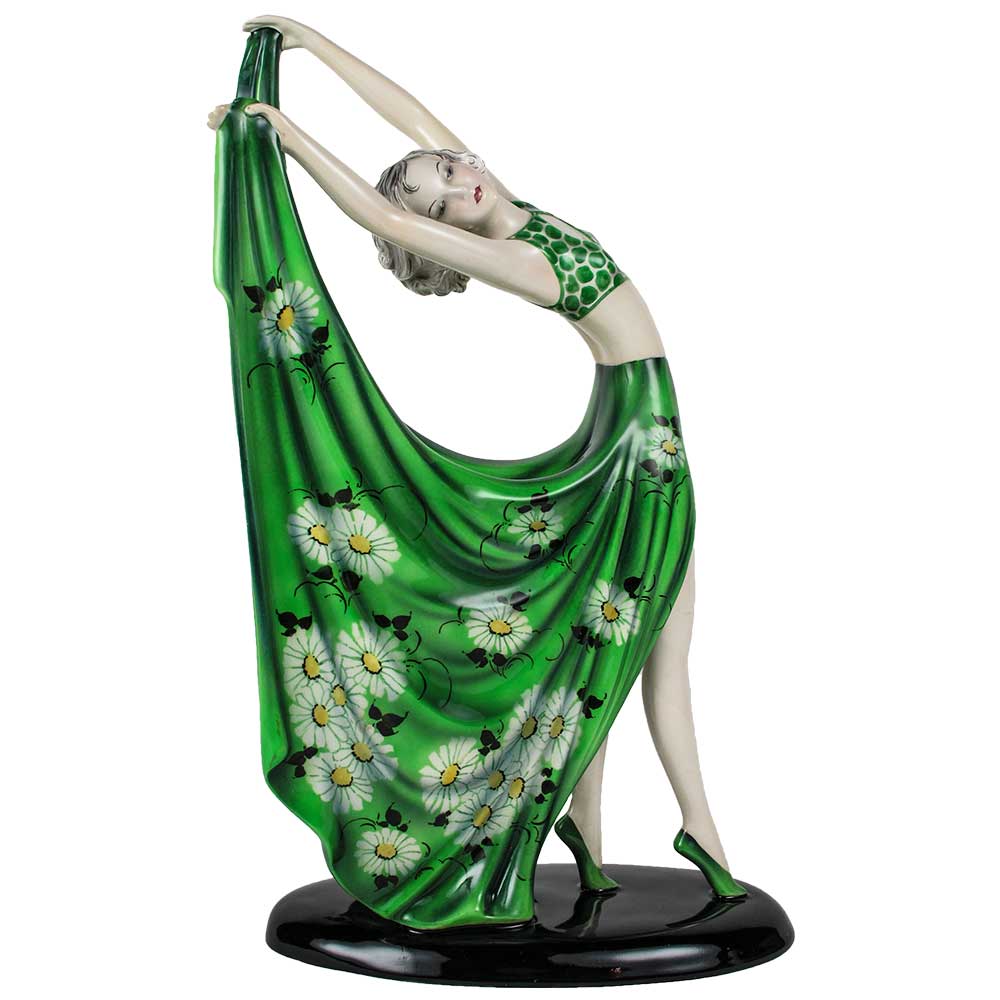
Goldscheider Beauty by S. Dakon
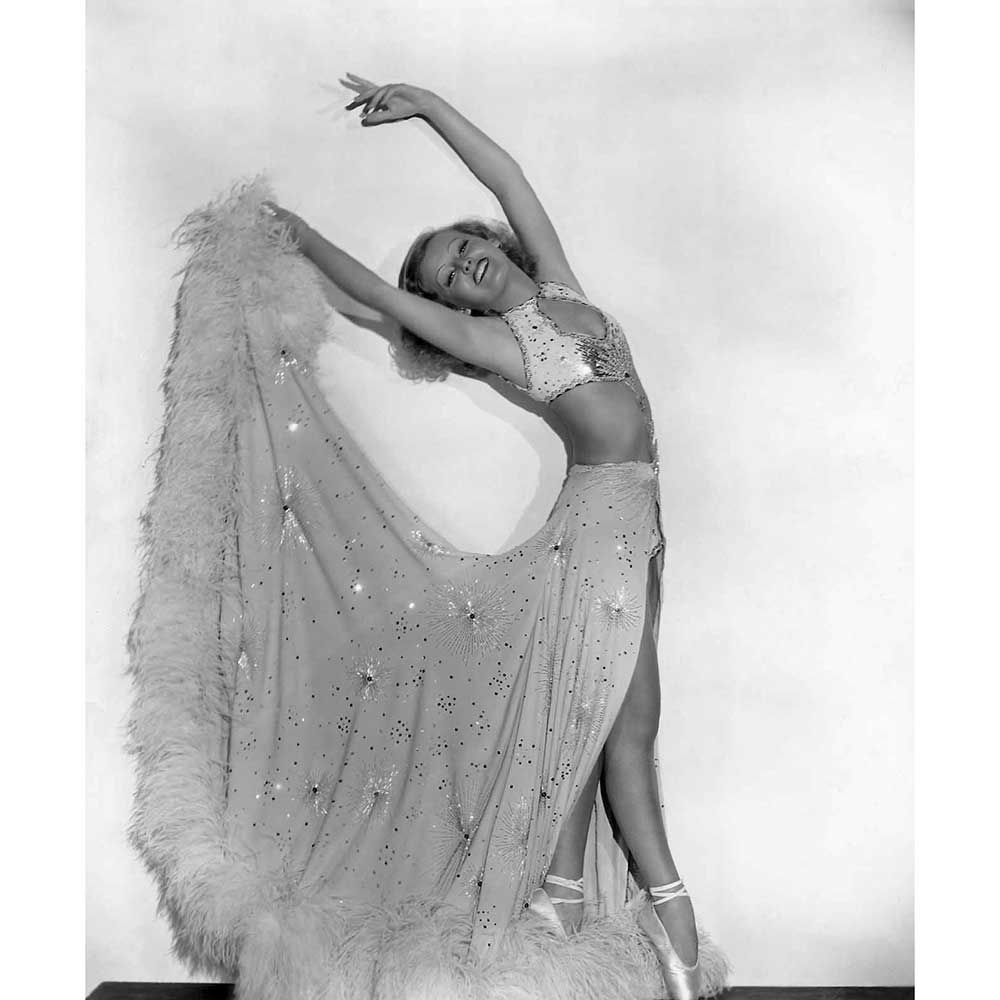
Lillian Harvey
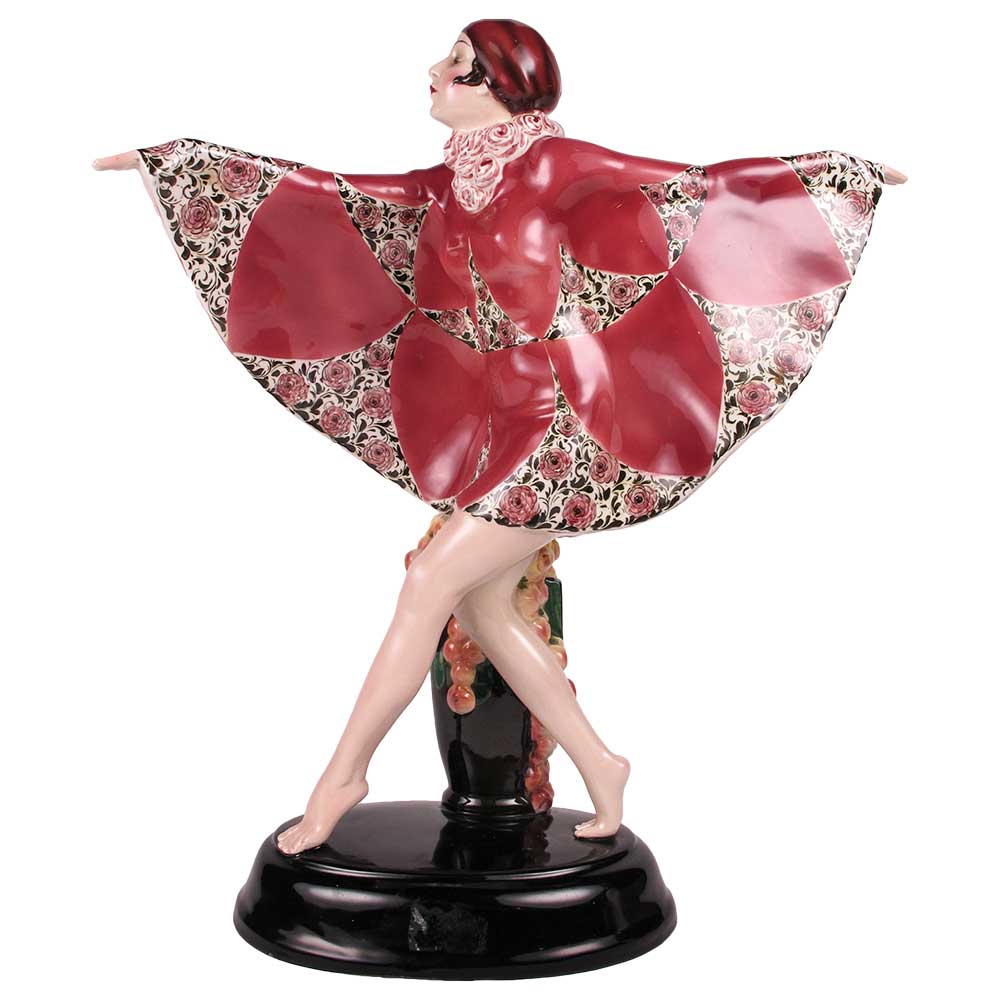
Goldscheider Captured Bird
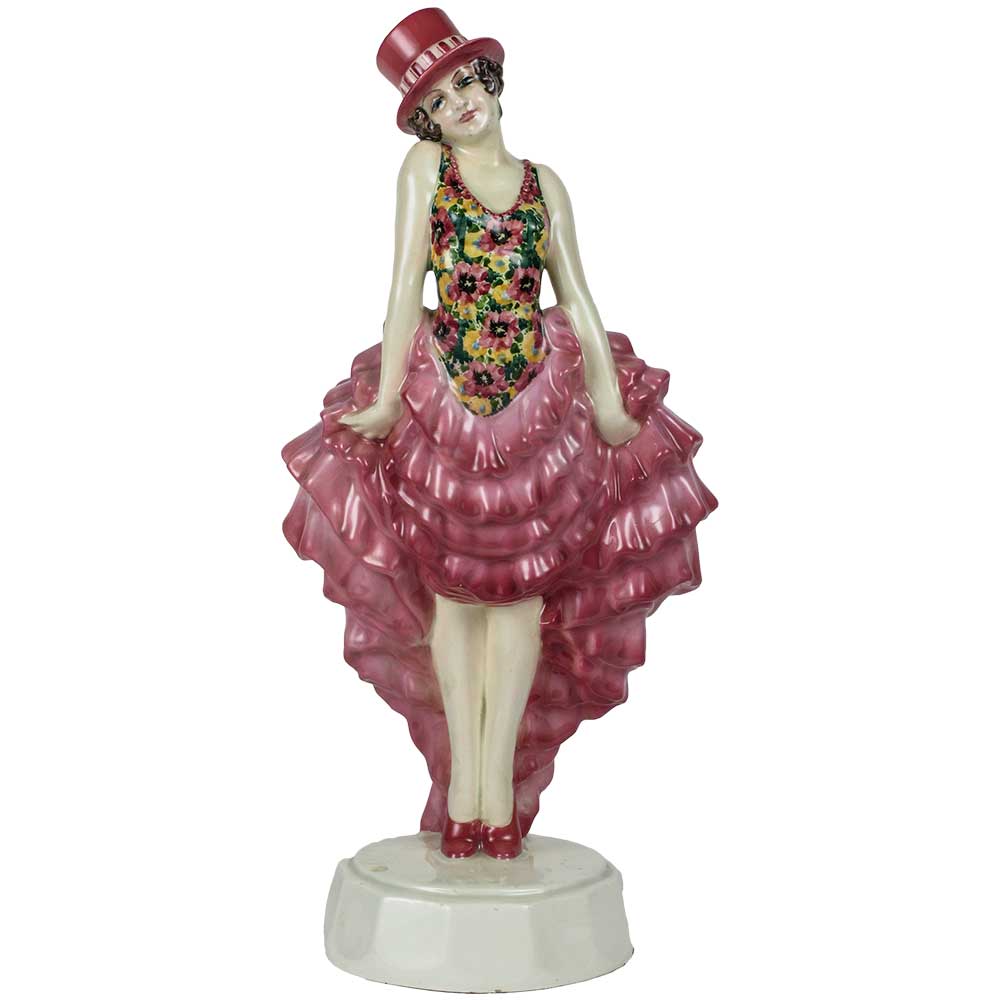
Goldscheider Elsie Altman
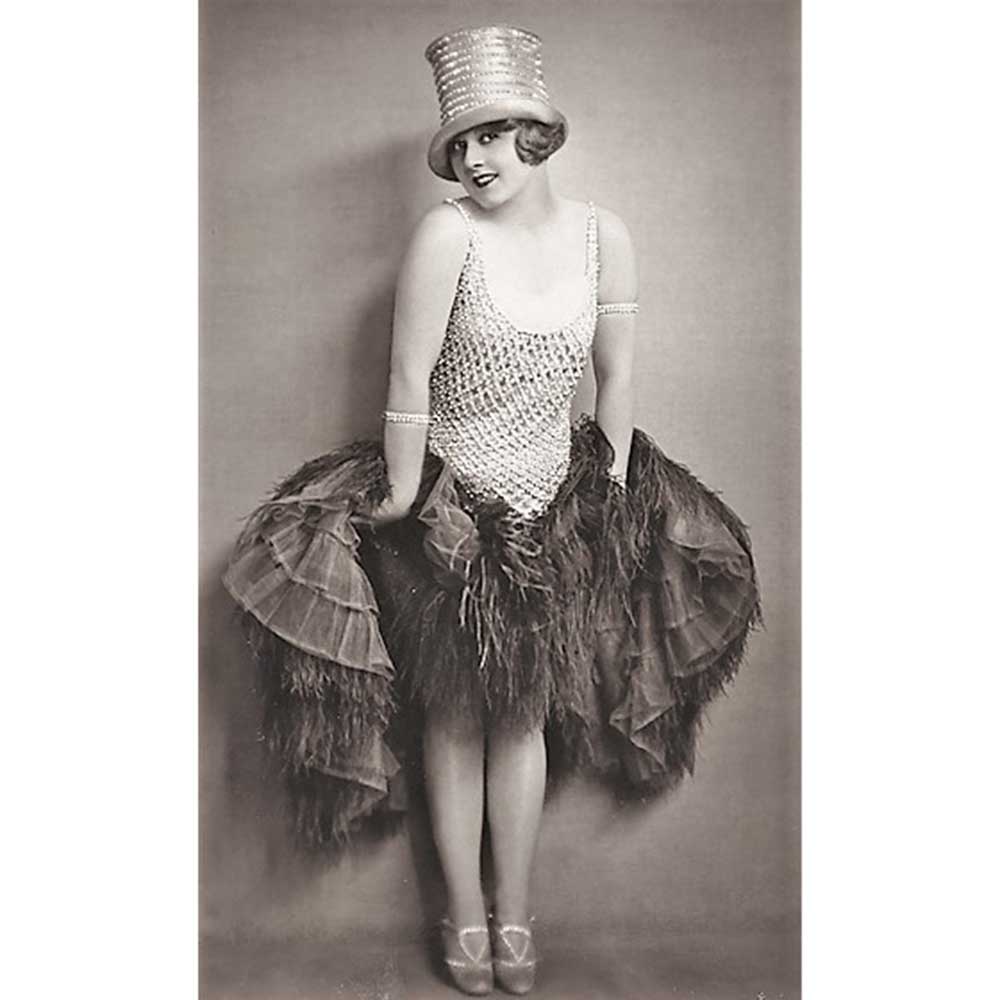
Elsie Altman
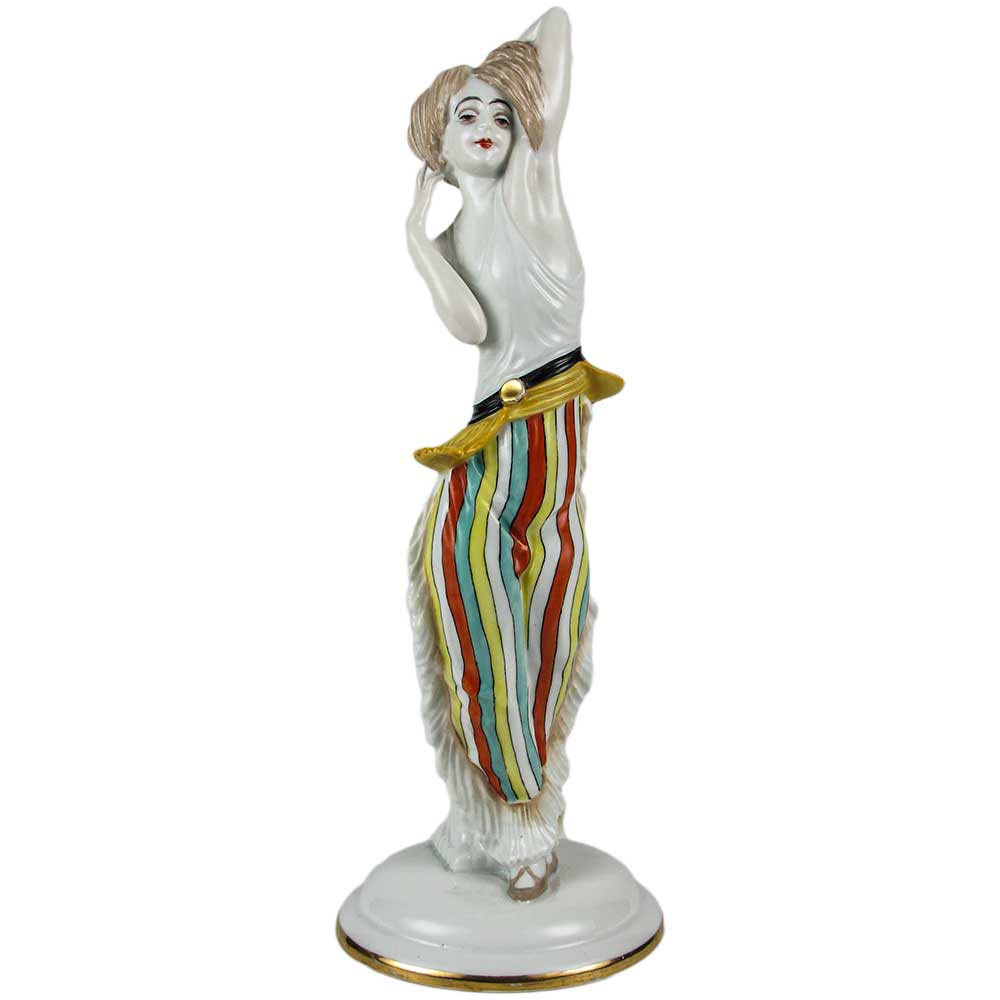
Rosenthal Lo Hesse Dancing Humoresque
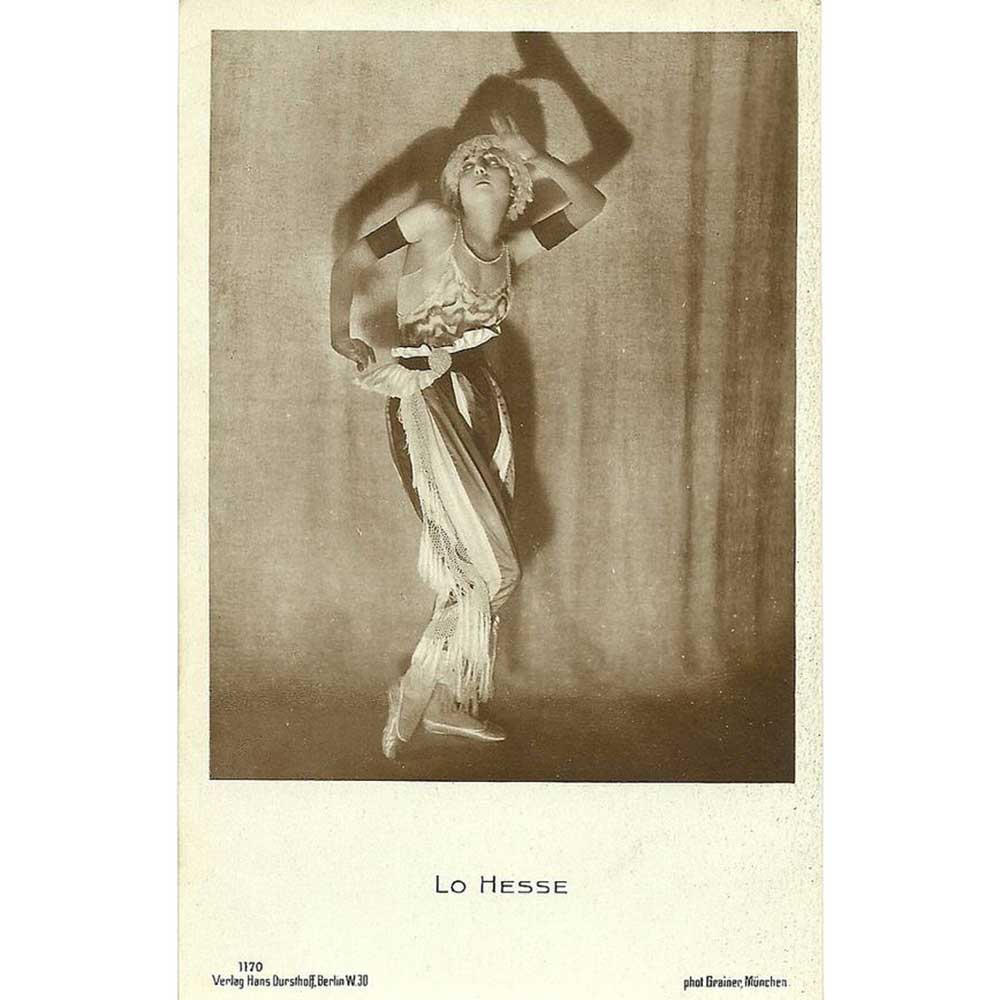
Lo Hesse Dancing Humoresque
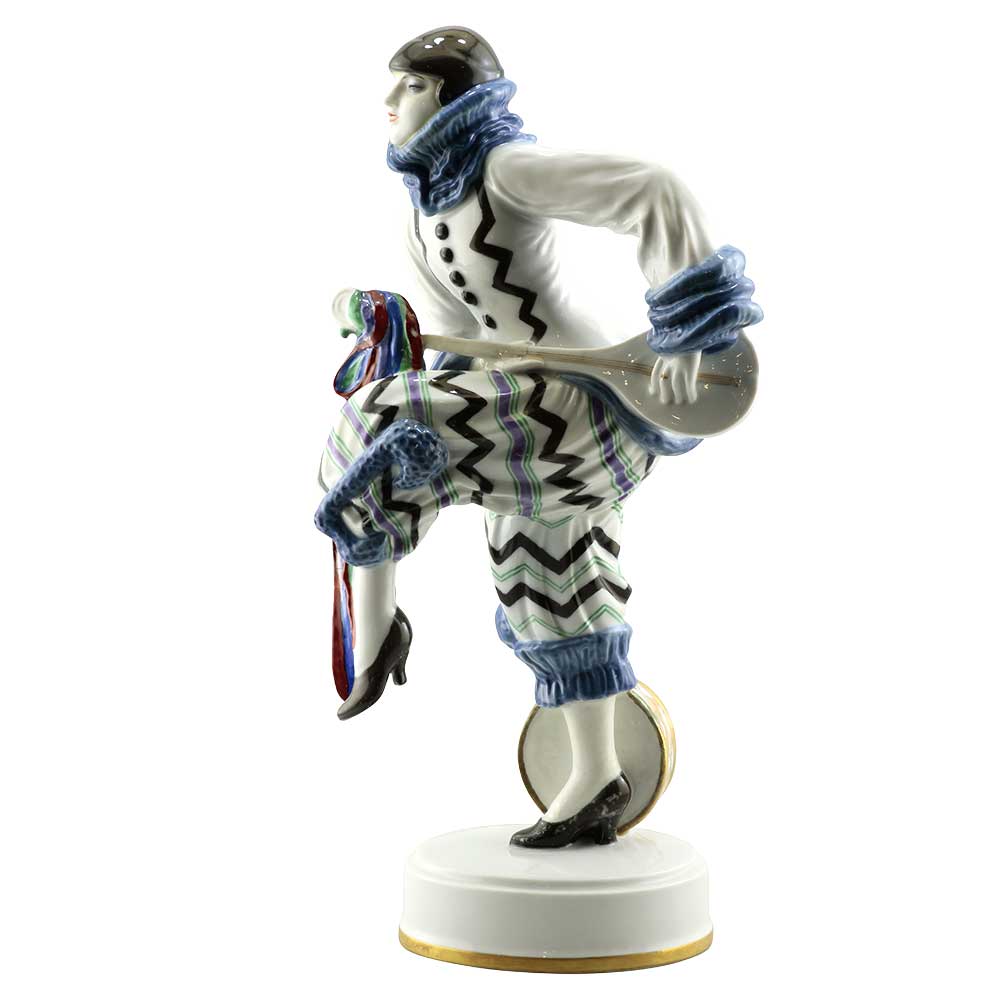
Rosenthal Lena Amsel
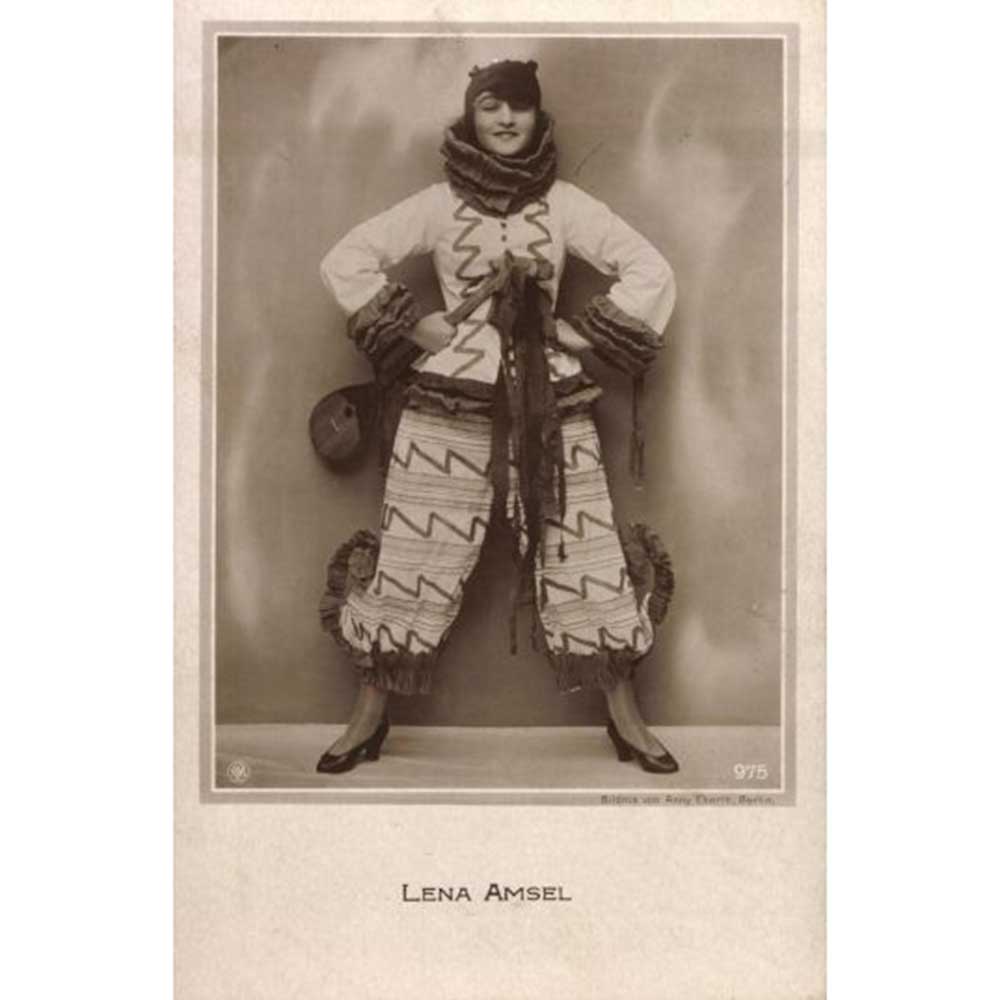
Lena Amsel Marche Allegre
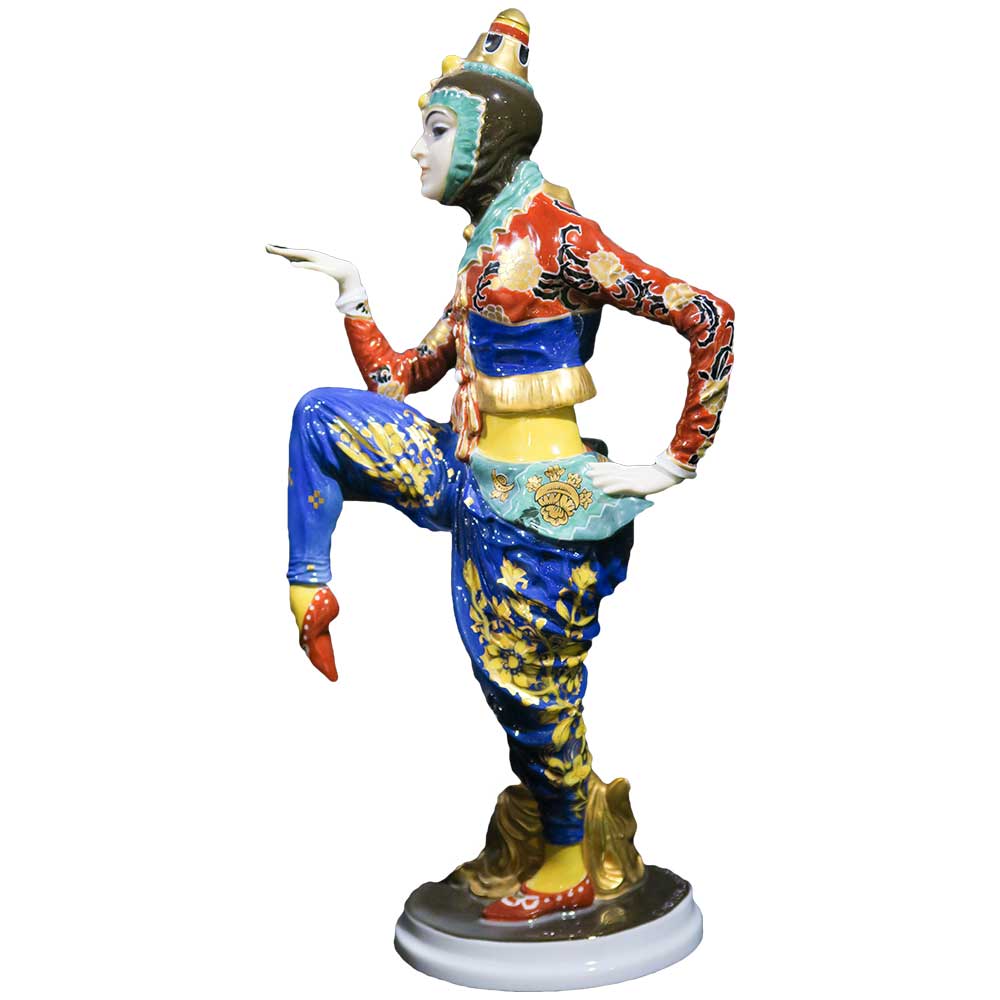
Rosenthal Anita Berber
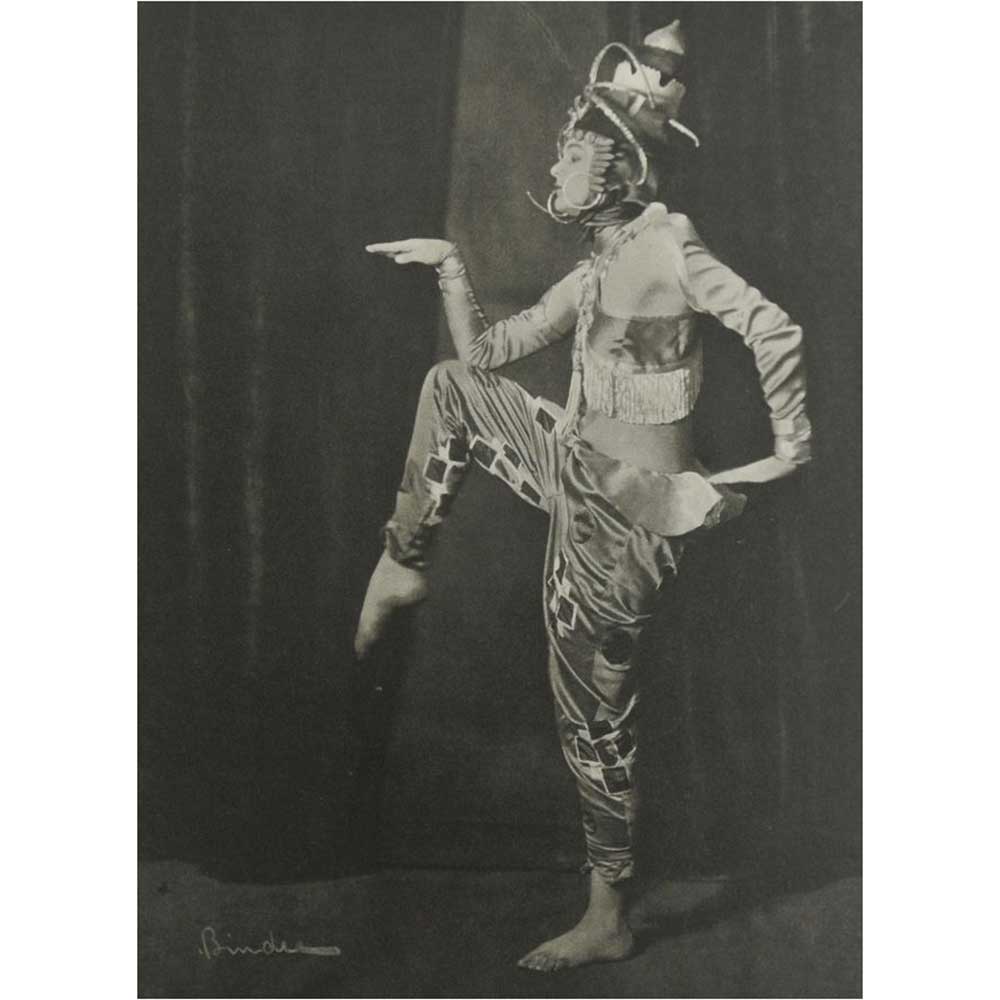
Anita Berber as a Korean Dancer
Queen of the Nile
Royal Doulton set the stage for portraying contemporary beauties as figurines. Art Director, Charles Noke, admired the celebrities of the Victorian and Edwardian era, such as Ellen Terry, Sarah Bernhardt and Lily Langtry, the mistress of the Prince of Wales. One of Doulton’s first Vellum figurines portrays Cleopatra, the seductress whose machinations led to the downfall of Julius Caesar and Marc Antony. The Egyptian queen was played in the 1890s by both Lily Langtry and Sarah Bernhardt, who kept two live snakes to enact the venomous asp used for her suicide. The role was reprised in the early days of cinema by the vamp Theda Bara, who became known as the Serpent of the Nile. The first sex symbol of the movies once said, “I will continue doing vampires as long as people sin."
Egyptomania reached its zenith during the roaring twenties with the discovery of Tutankhamun’s tomb in 1922. Fascination for the middle east was reflected in figurines by many European porcelain companies, including Goldscheider of Austria and Rosenthal of Germany. Joseph Lorenzl modeled many exotic beauties during the 1920s, such as Aida inspired by Verdi’s opera which is set in Egypt. The allure of the Middle East was reflected on the silver screen and odalisques from the harem became the muses of fashion designers and cabaret performers.
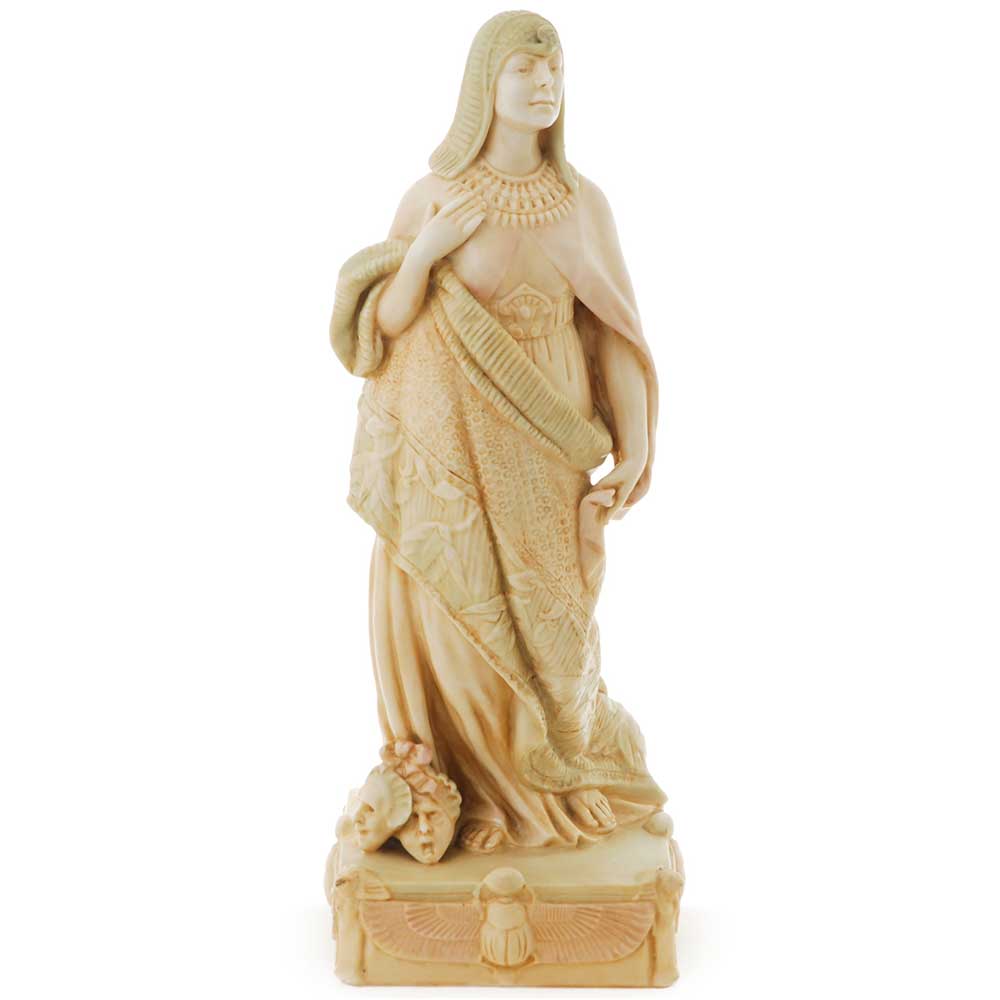
Doulton Cleopatra
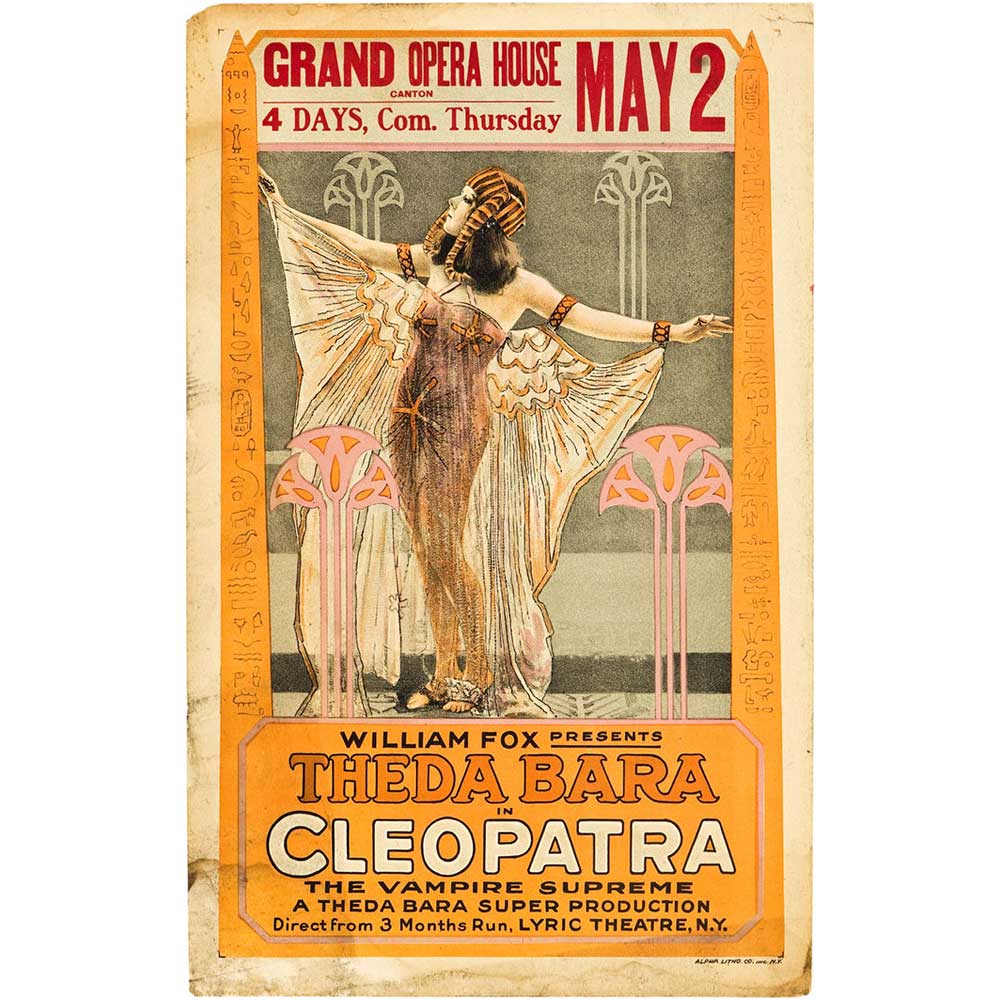
Theda Bara as Cleopatra
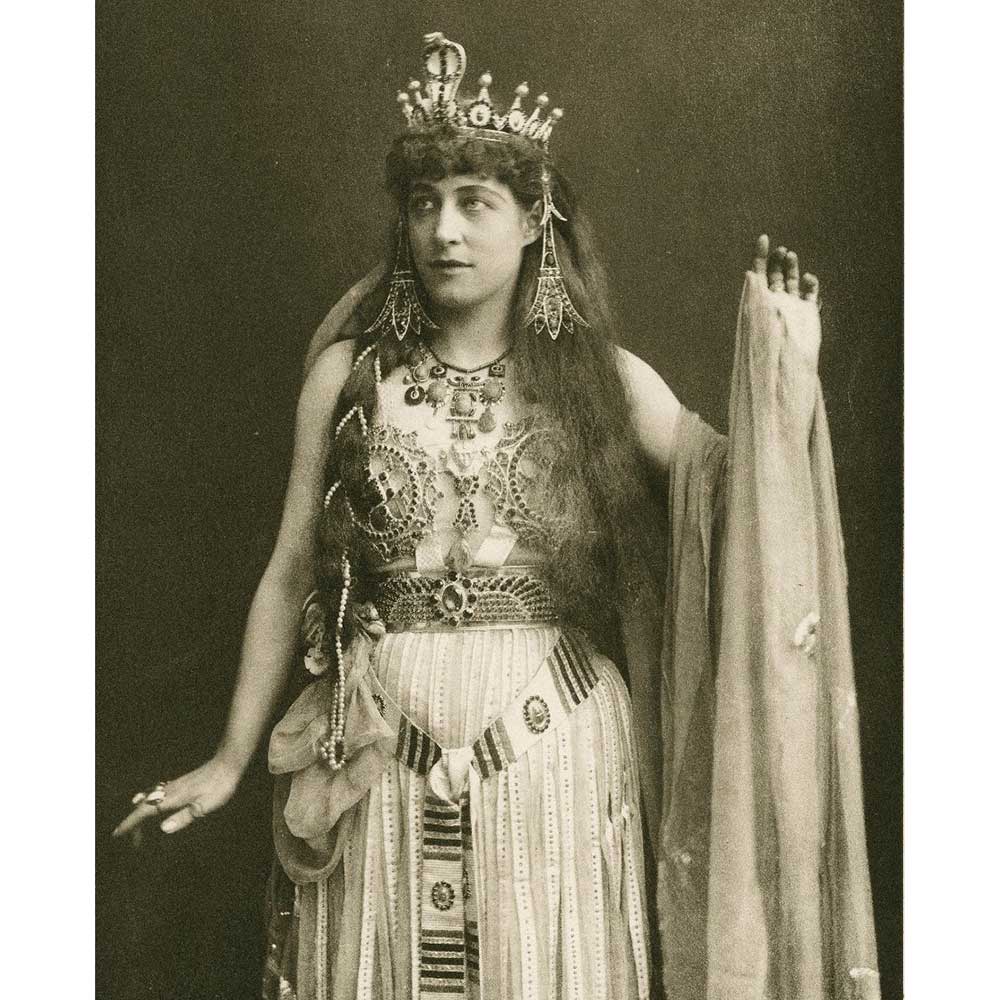
Lillie Langtry as Cleopatra
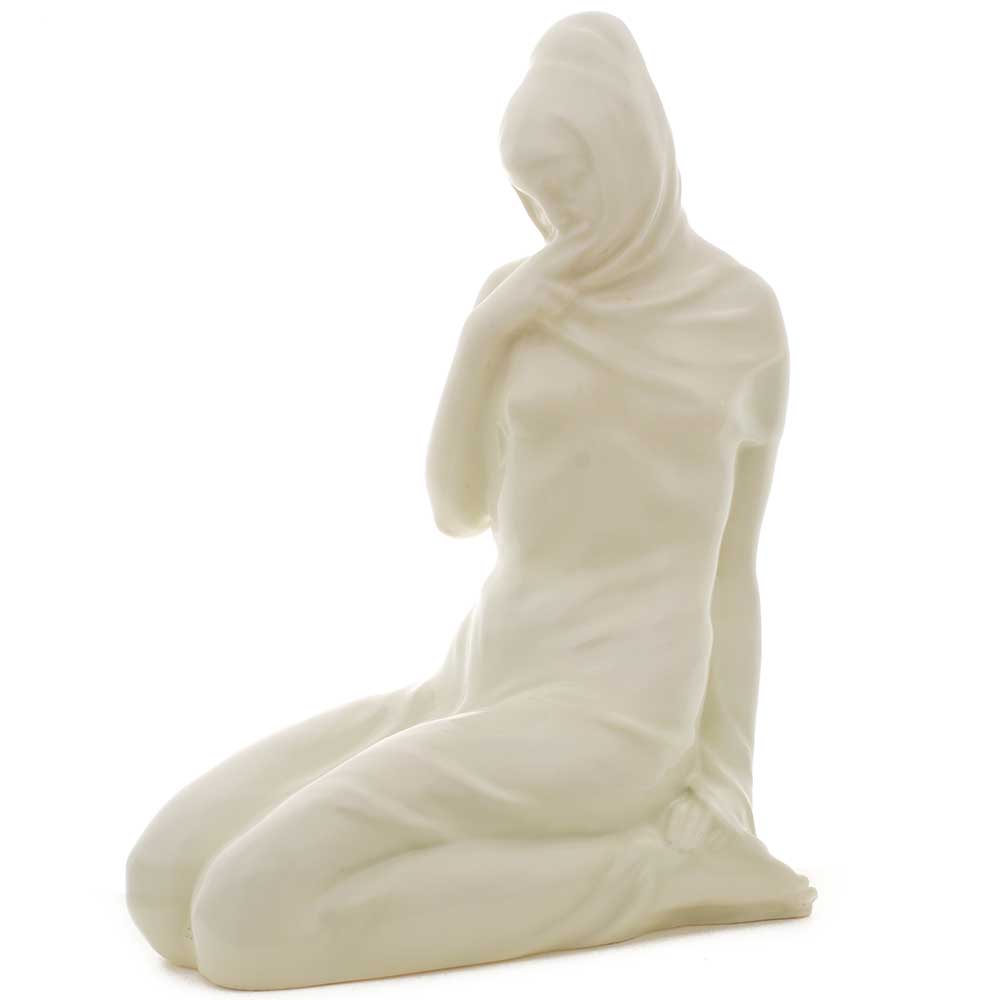
Royal Doulton Salome by R. Garbe
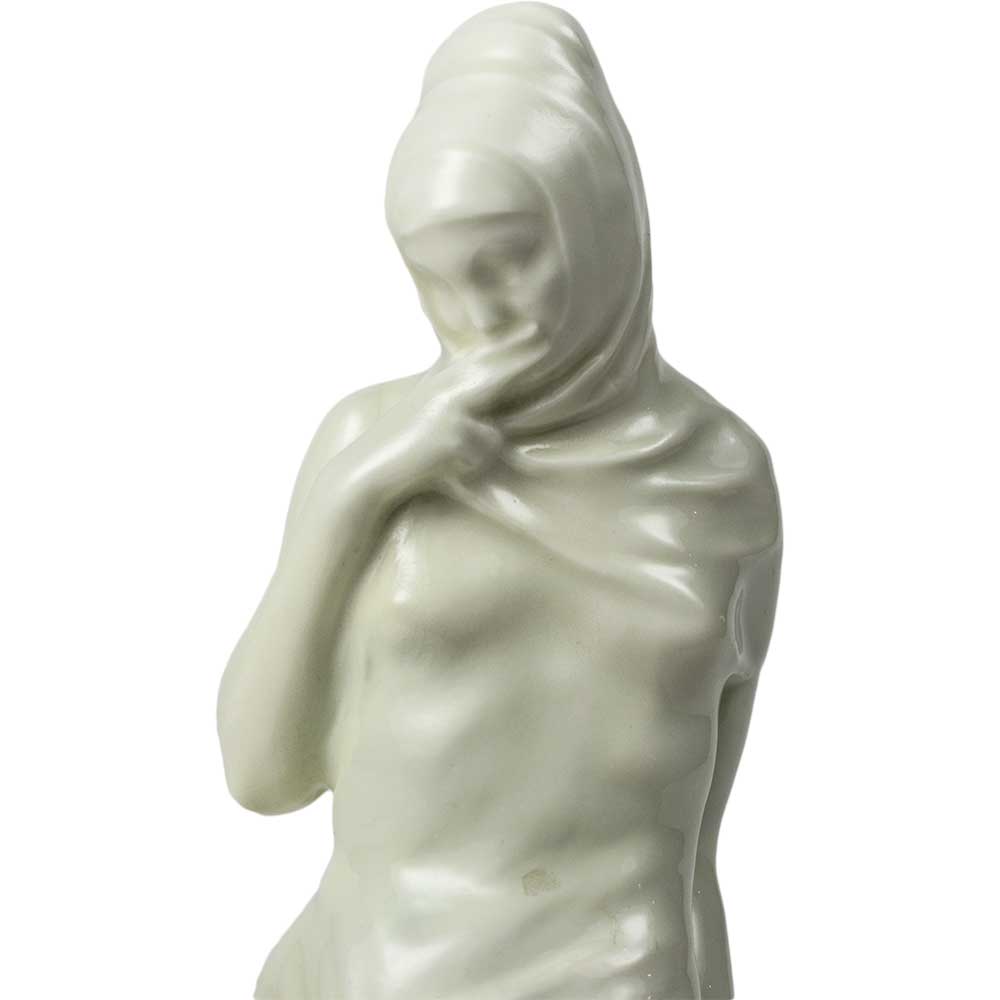
Salome detail
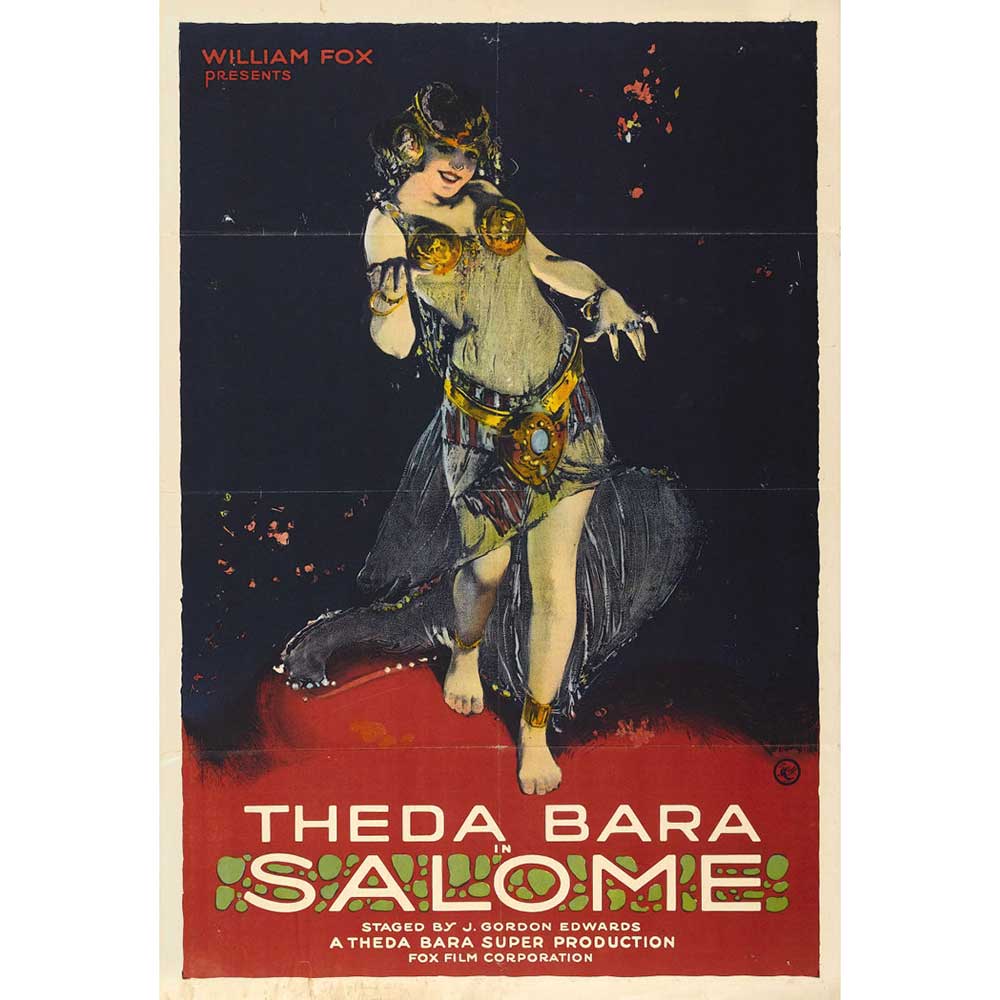
Salome poster
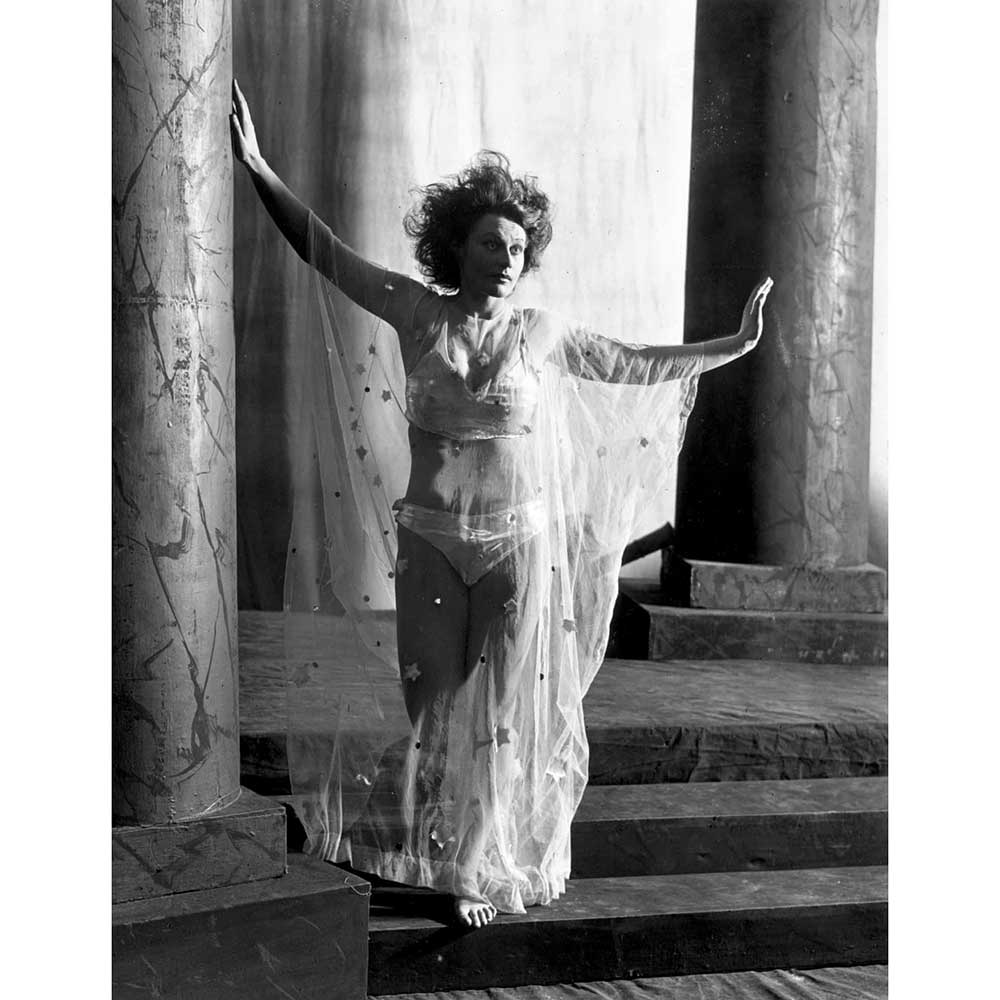
Joan Maude as Salome
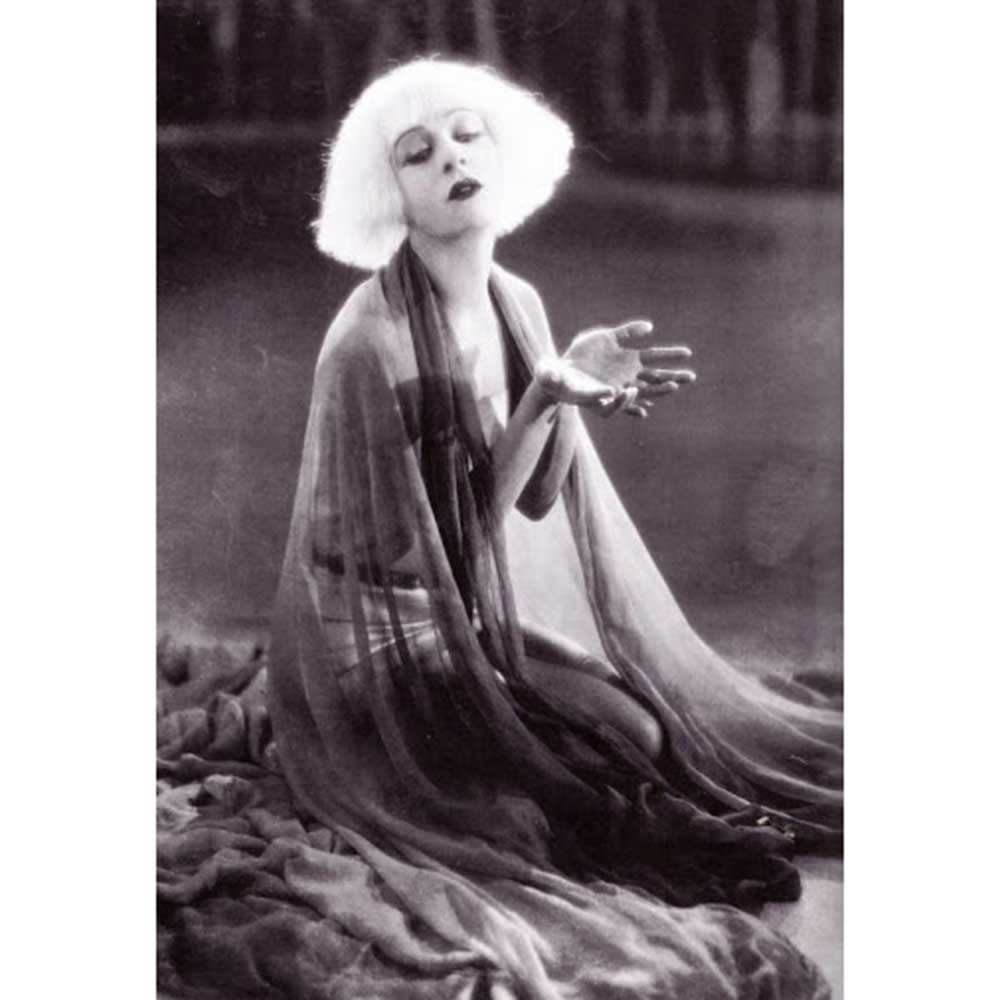
Nazimova Salome
The Dance of the Seven Veils
Salome’s lascivious Dance of the Seven Veils for the lustful King Herod was rewarded with the head of John the Baptist. The biblical dancer was envisioned by Oscar Wilde as a passionate but doomed femme fatale and Salomania spread throughout Europe in the early 1900s. Erotic veil dances were performed in music halls and cabarets and many added serpents for extra drama. Loie Fuller became known as the Electric Salome with her frenzied manipulation of her swirling, voluminous silk costumes and magical lighting effects. Charles Noke introduced the magnificent Loie to the HN collection and Richard Garbe’s seductive Salome from 1933 was probably inspired by the first London stage performance of Oscar Wilde’s play, which had been banned in the UK since its original publication in 1893.
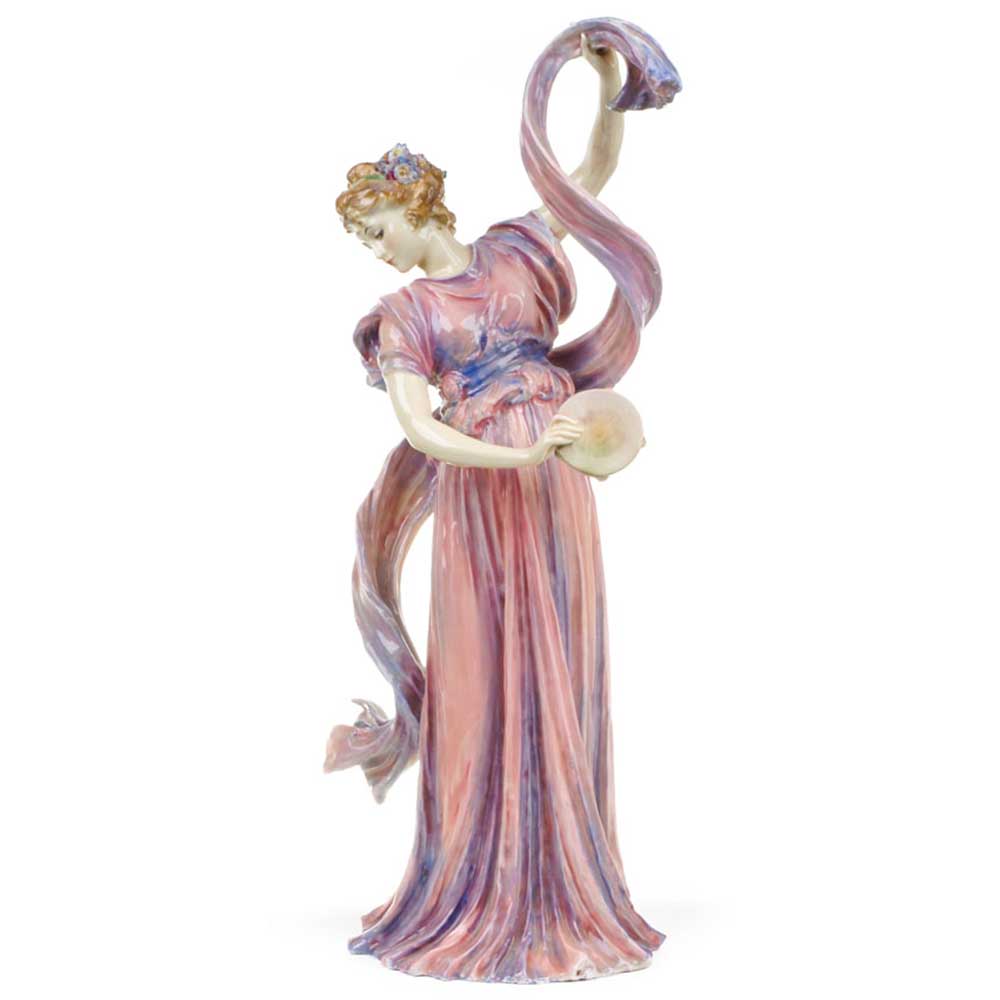
Royal Doulton Loie Dancing
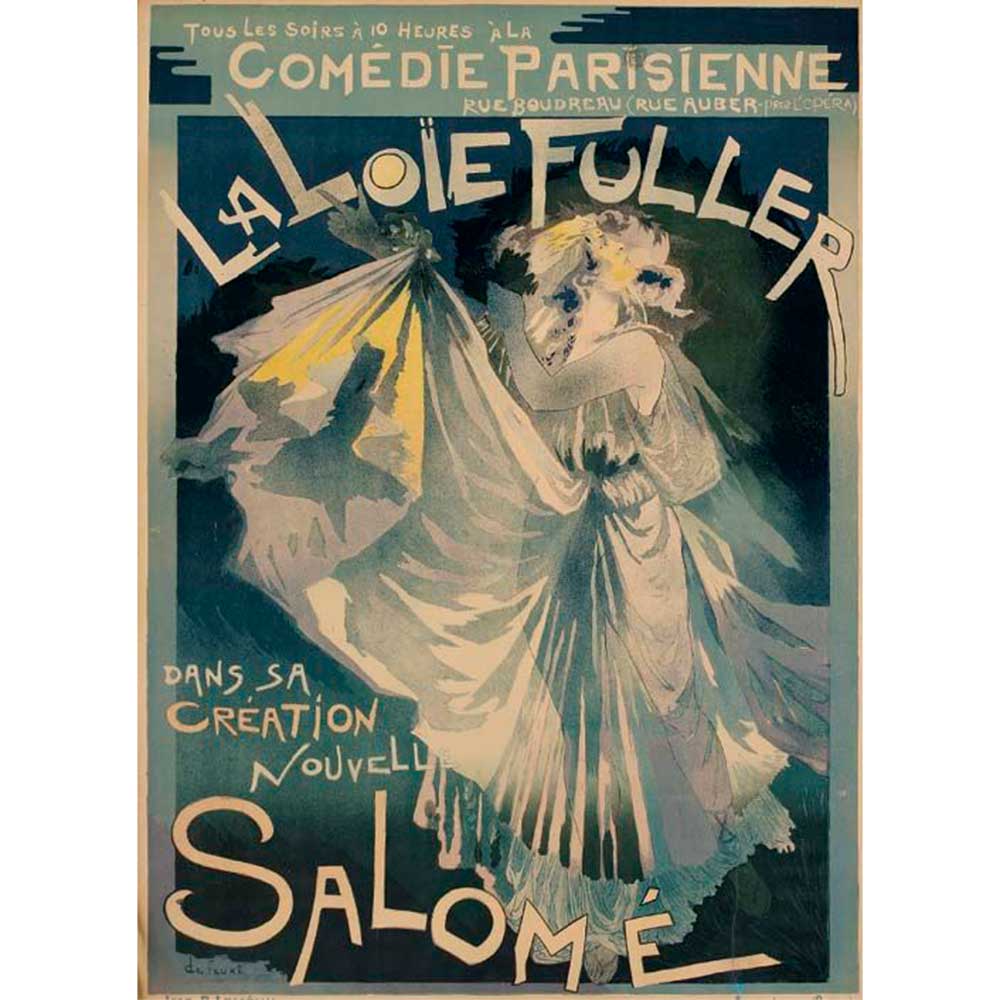
Loie Fuller in Salome
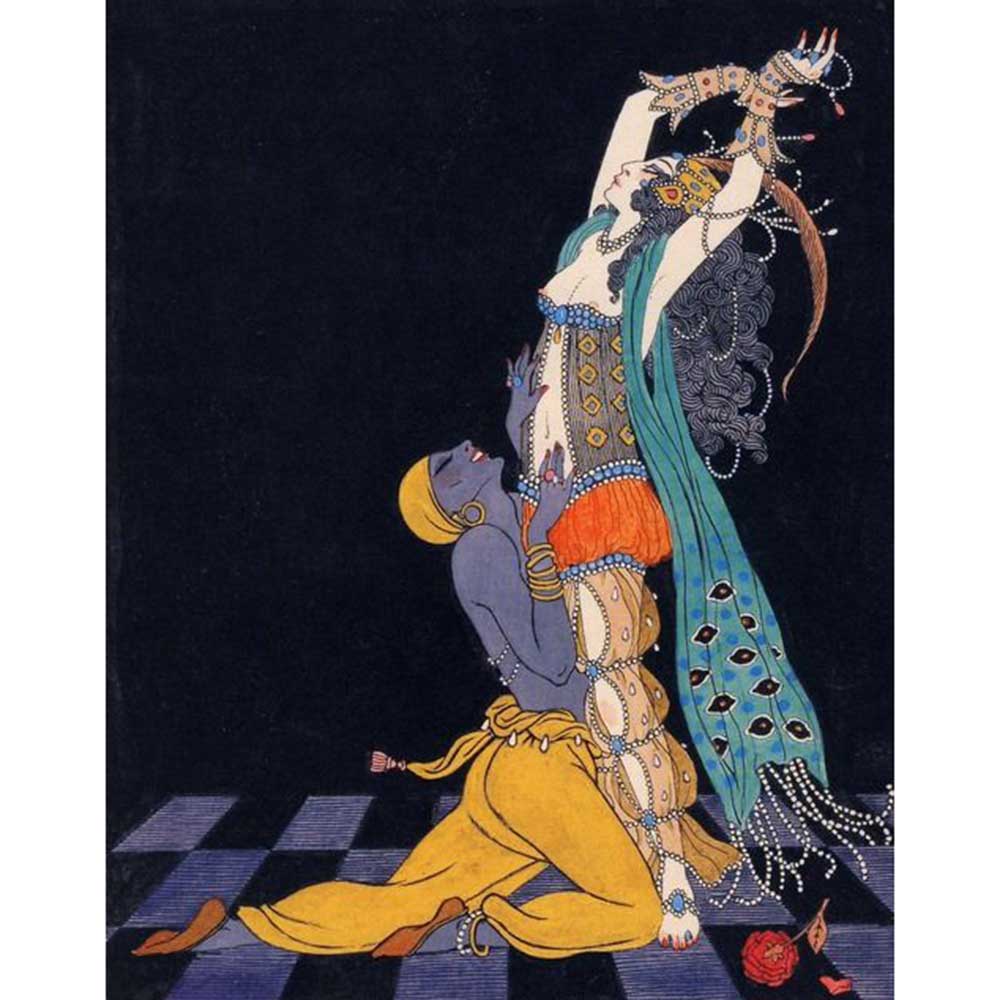
Scheherezade by Bakst
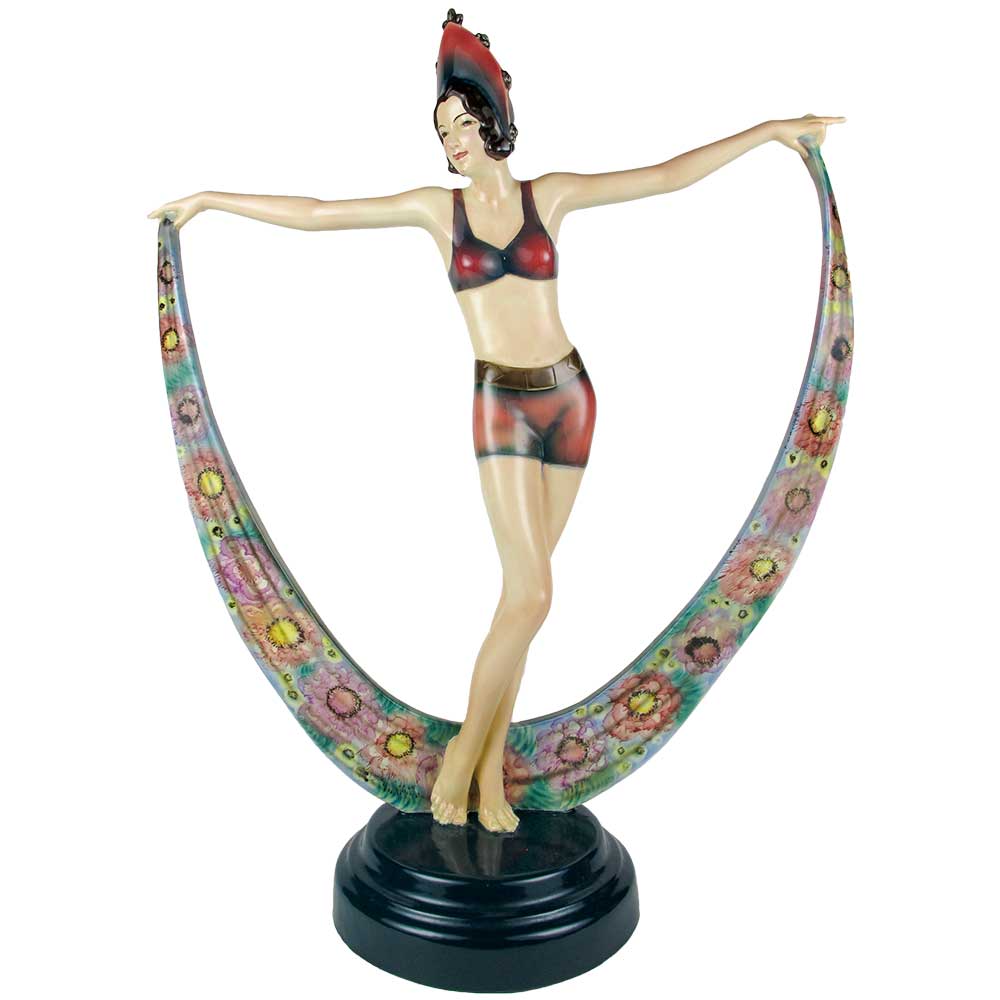
Goldscheider Scarf Dancer
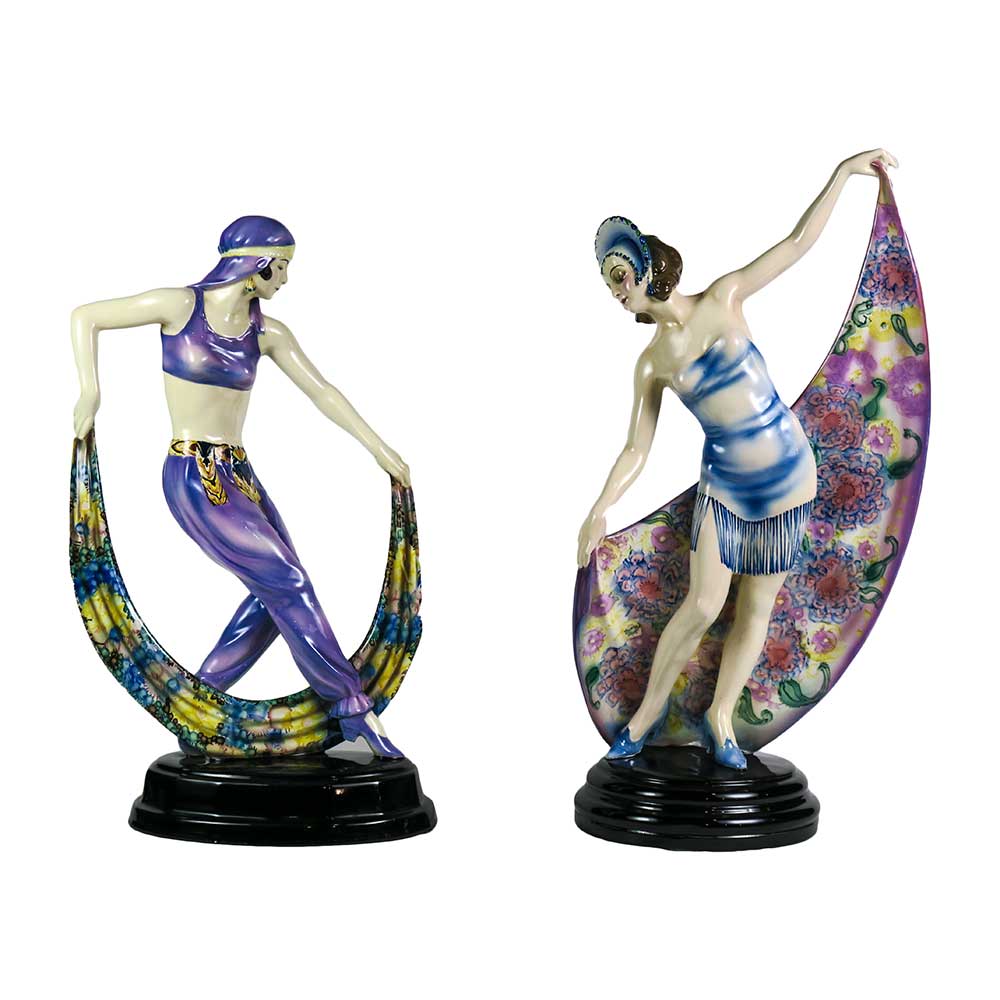
Goldscheider Dancers
Fantasy Costumes
Diaghilev’s Ballet Russes caused a sensation in Europe in the early 1900s with rhythmic dancing, radical choreography and fantastic costumes by Leon Bakst. Many flappers and vamps of the jazz age metamorphosed into balletic birds and butterflies for the masquerade balls of the time. Popular stage costumes were copied at home using the latest dress-making patterns. Favorite characters included exotic harem dancers from the Arabian Nights, Harlequin and Pierrot from the Italian Commedia dell Arte, red devils from pantomime, and cabaret style chorus girls with their fabulous feathers and fans.
Many real-life divas have played Carmen, the wild Spanish gypsy in Bizet’s famous opera, who also inspired many fancy-dress frolics. Among the most sensual movie vamps to portray the fiery Carmen were Theda Bara, Pola Negri, and Dolores Del Rio, who was considered the epitome of female beauty and glamour during the 1920s. The female Valentino, as she became known, also sensationalized the two-piece swimsuit, which shockingly exposed her midriff.
Read more...
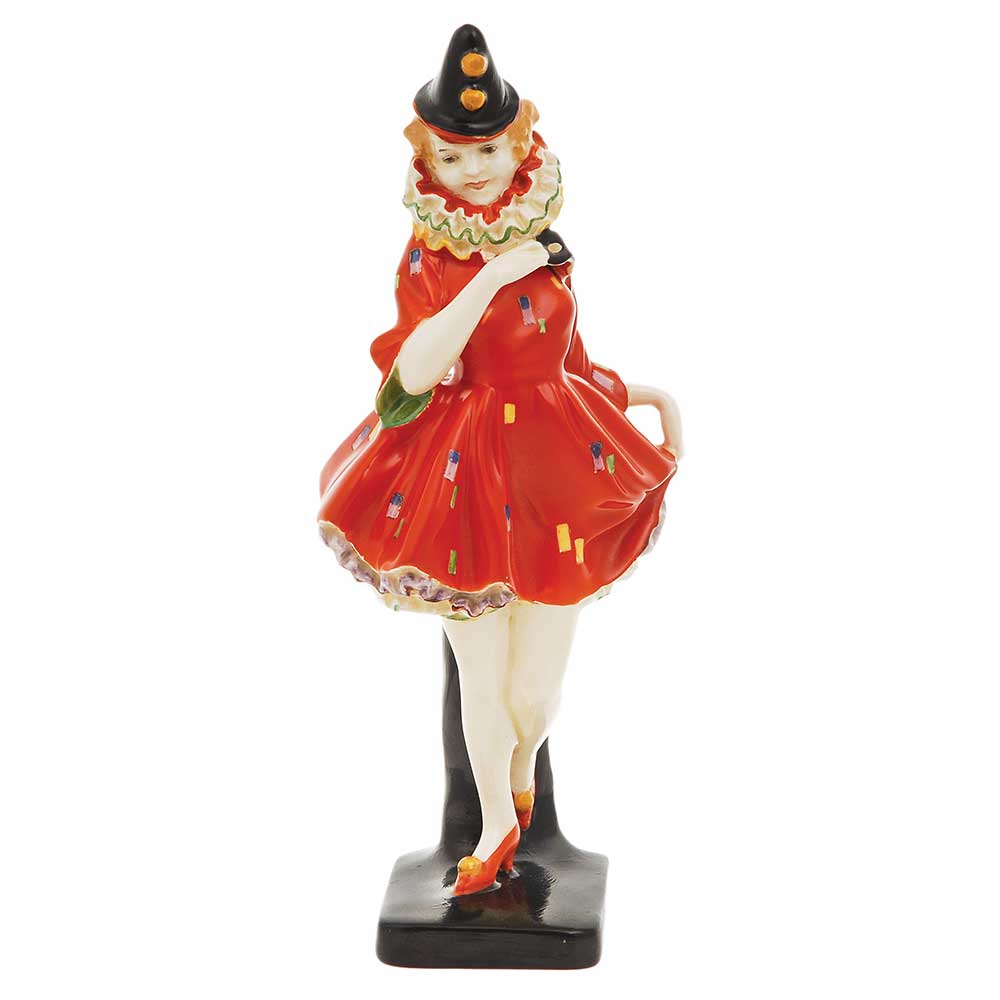
Royal Doulton Pierrette
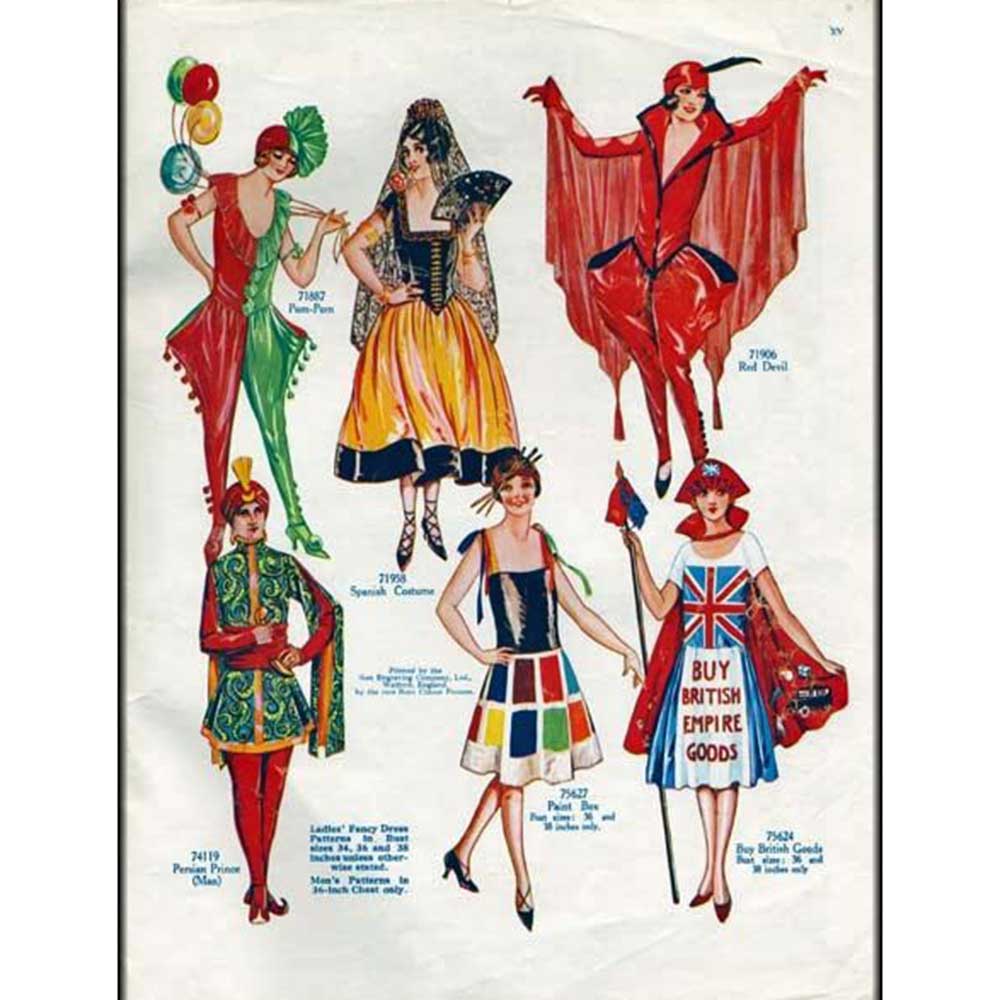
Weldon's Fancy Dress Patterns
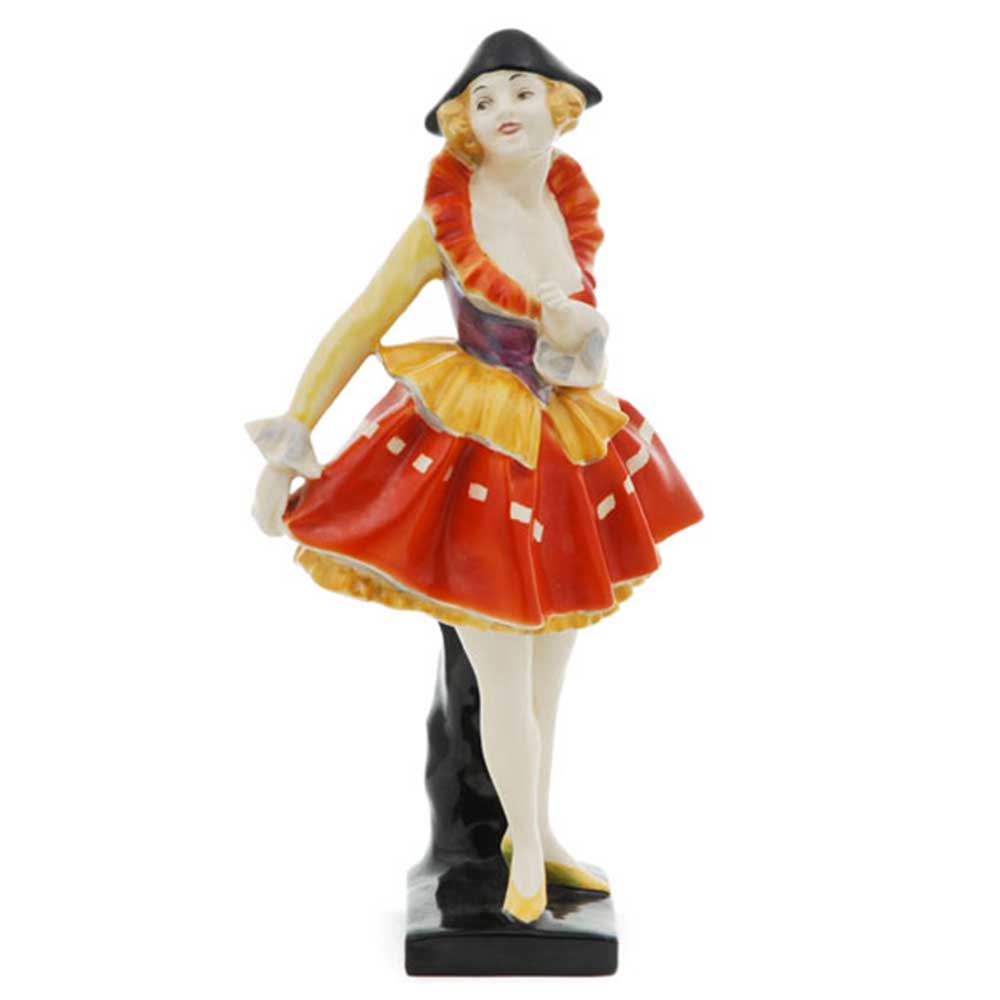
Royal Doulton Chorus Girl
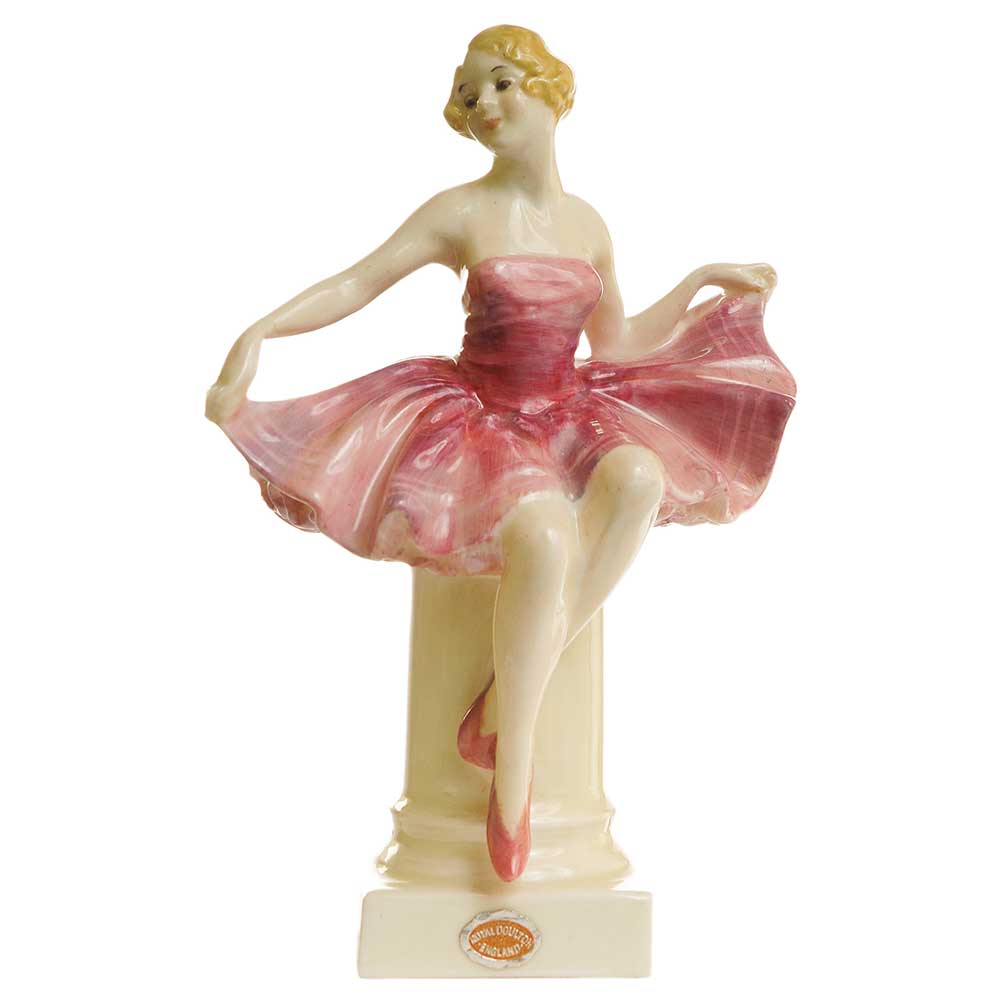
Royal Doulton Columbine
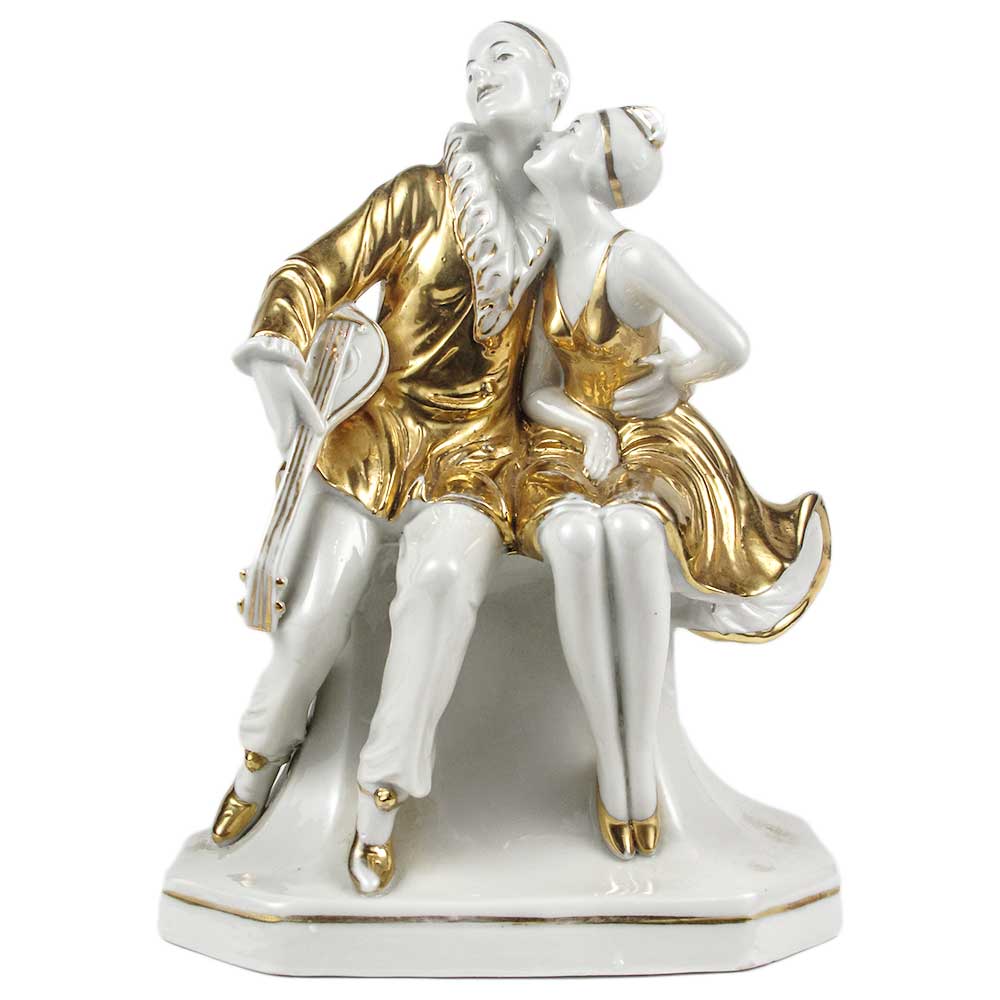
German Pierrot & Columbine
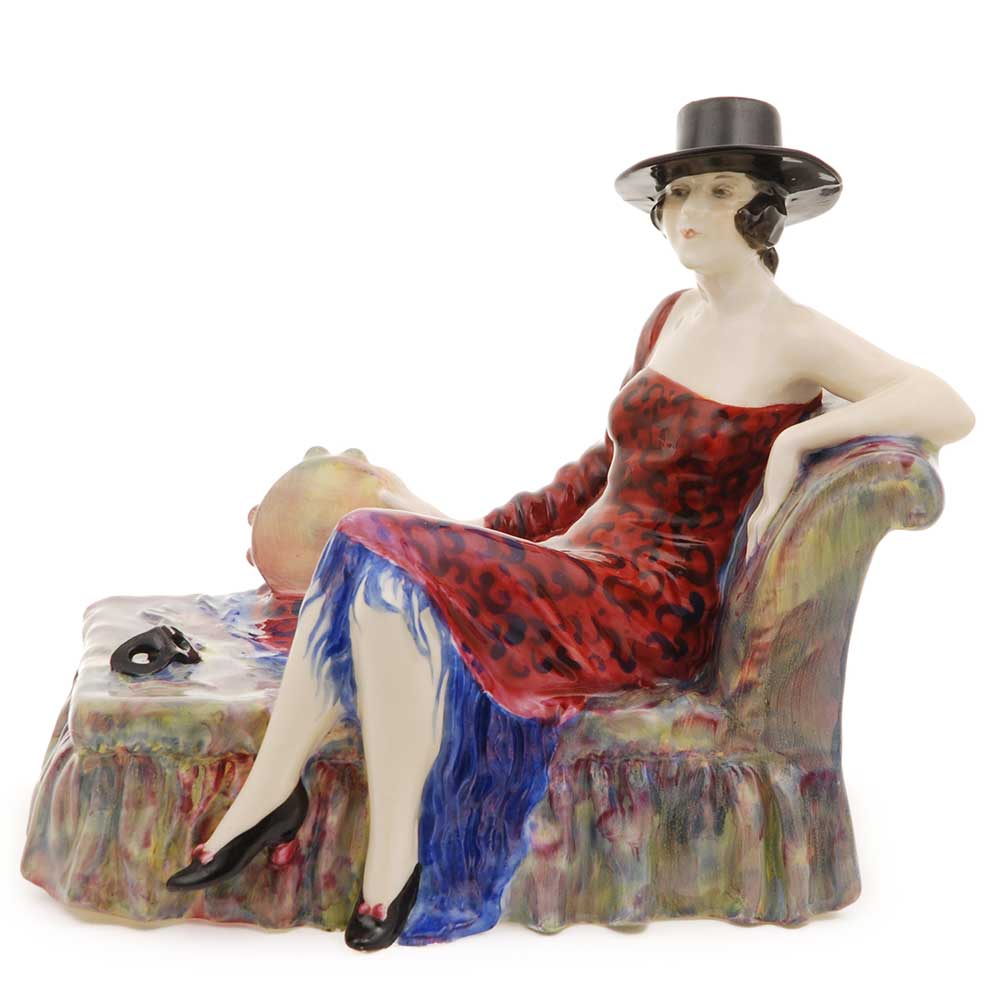
Royal Doulton Dulcinea
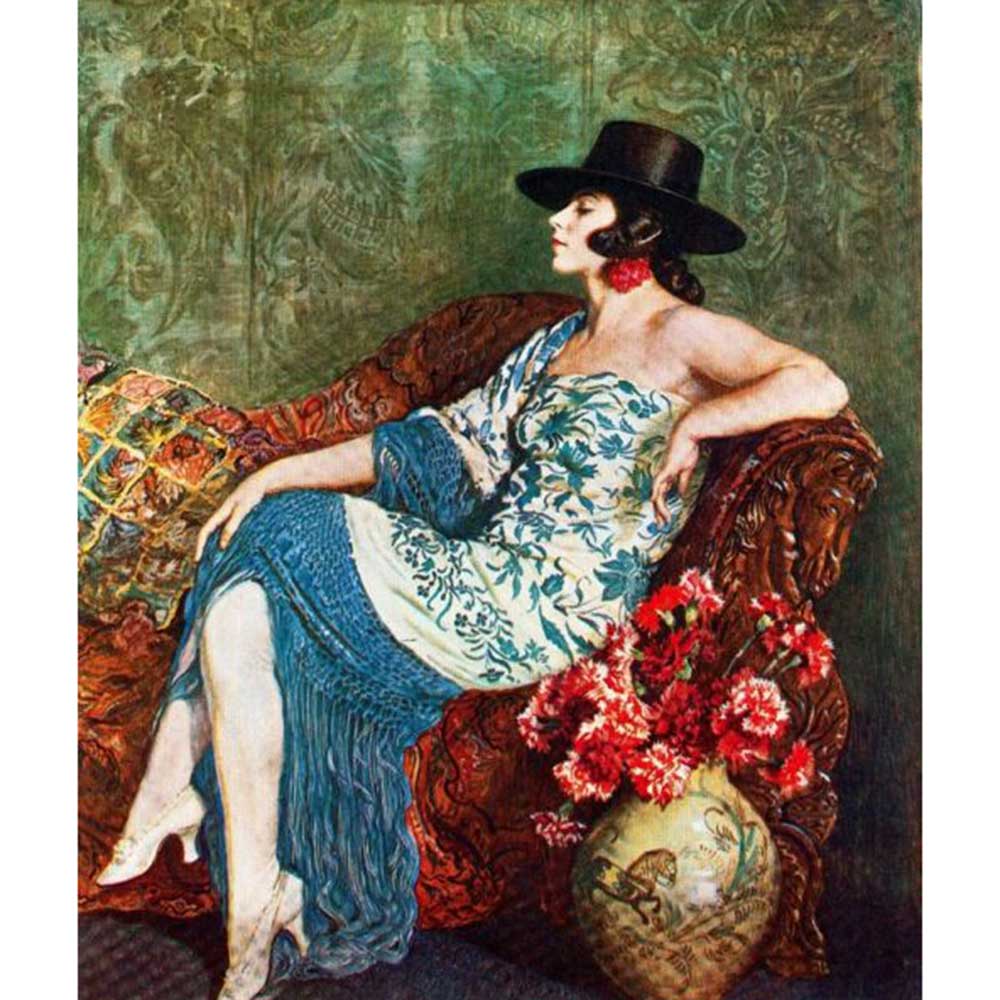
Talavera by G. Apperley
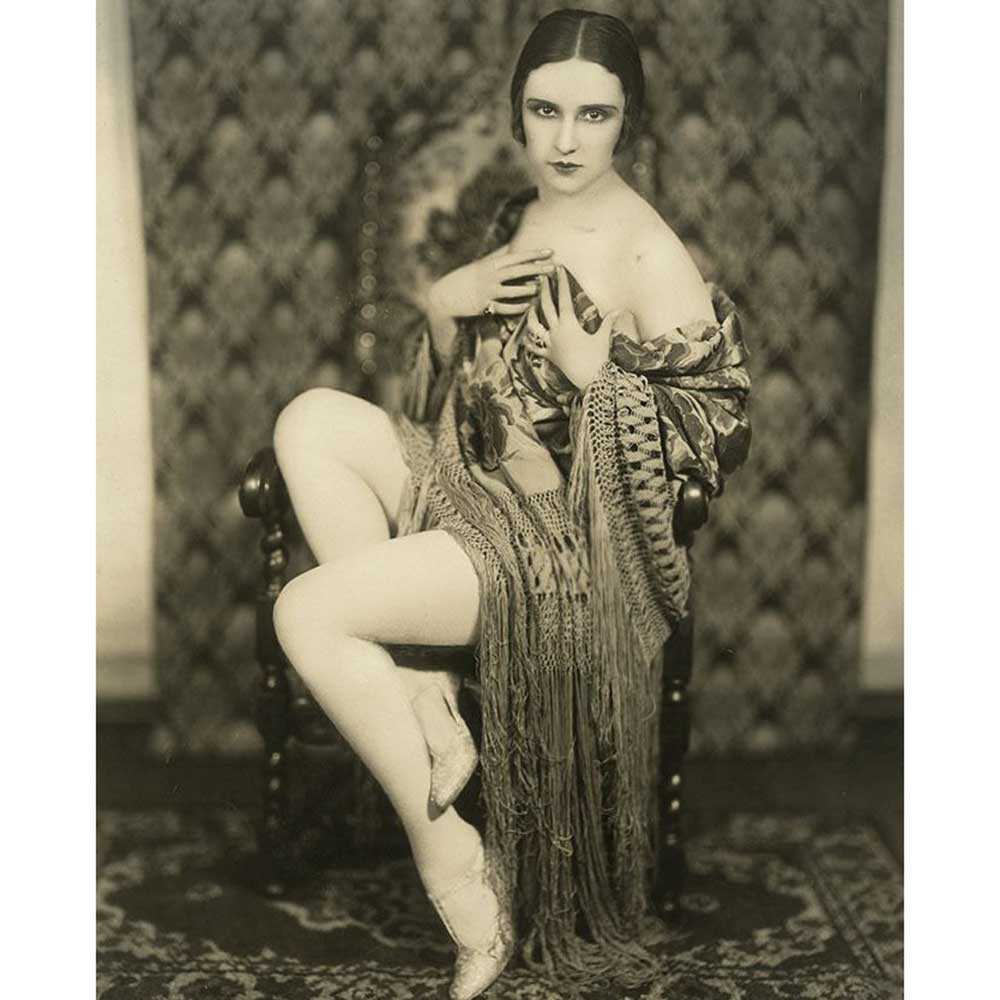
Spanish Glamour
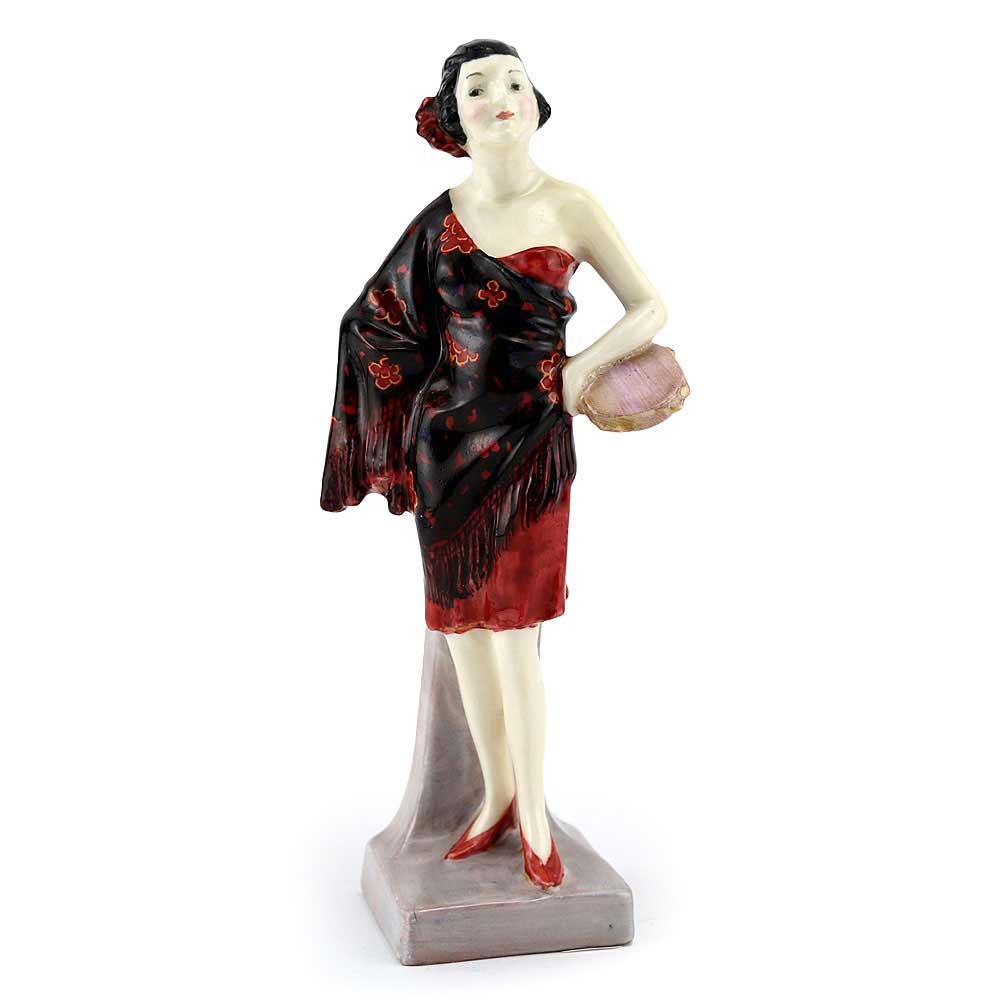
Royal Doulton Carmen
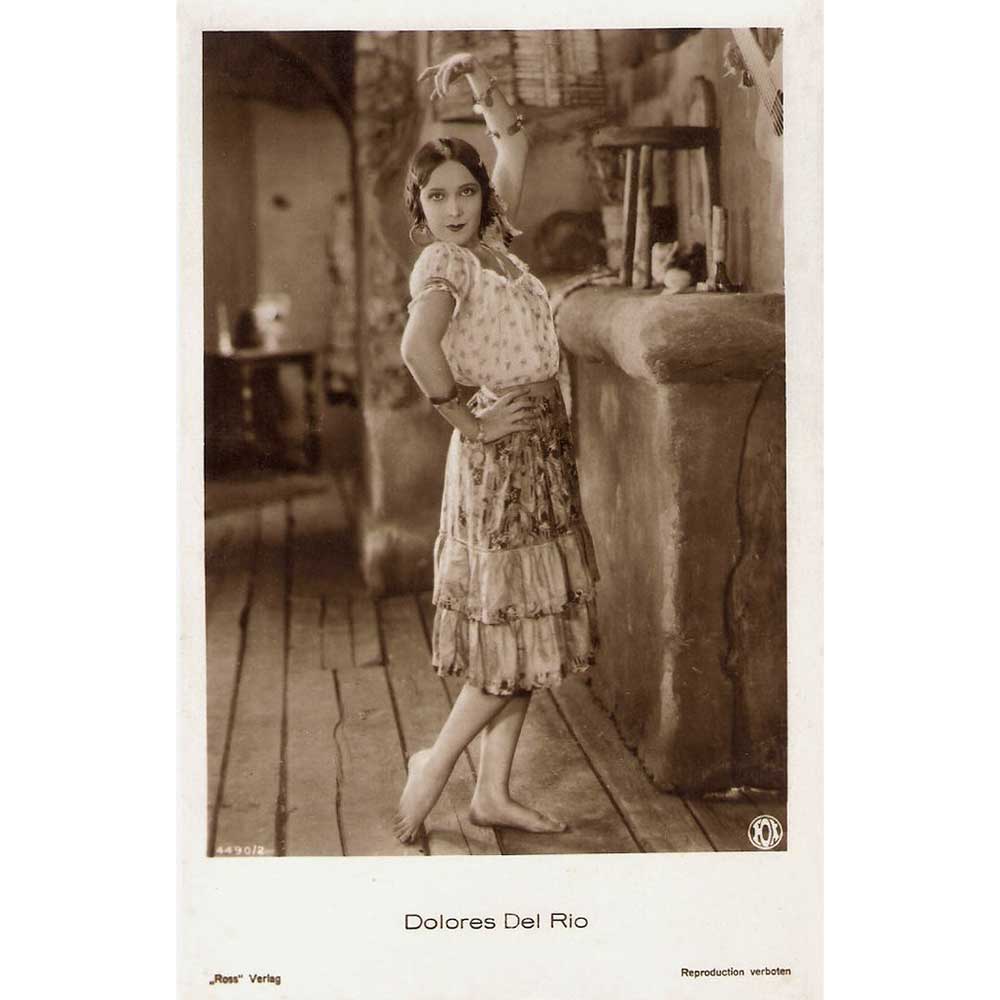
Dolores del Rio in Loves of Carmen
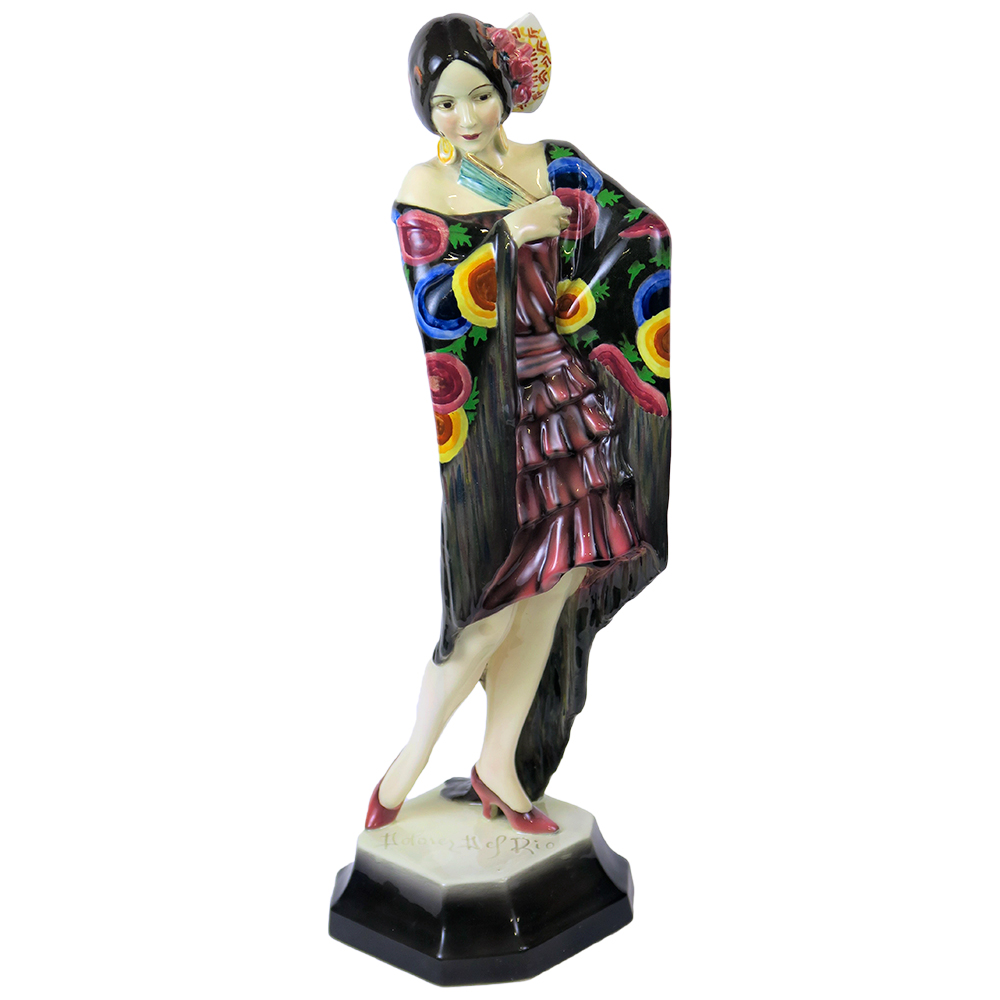
Goldscheider Carmen
Lido Lovelies
Flappers enthusiastically adopted the one-piece fitted swimsuit, pioneered by the film star Annette Kellerman. However, beach police arrested women for indecent exposure if their costume was too skimpy, a fate experienced by Miss Kellerman In 1908, which only increased her notoriety. In 1916, Annette Kellerman was the first movie star to appear in a nude scene as A Daughter of the Gods. Hollywood’s acceptance of nudity extended to the decorative arts with an abundance of naked bathers and dancers in bronze and porcelain during the Art Deco era. However, tolerance was short-lived following the implementation of the Hays code of censorship in the early 1930s. The stock market crash in 1929 heralded the Great Depression and the carefree lifestyle of the 1920s seemed inappropriate. The excesses of the flappers and the liberalization of sexuality was abhorred by many in the new moral climate of the 1930s. Leslie Harradine’s nude Bather HN597 from 1924 acquired a painted bathing suit as HN1708 in 1935. The roaring twenties had drawn to a close!
Read more...
Visit the Carnival & Cabaret exhibition at WMODA featuring many of the flappers, vamps and divas of the Art Deco era.
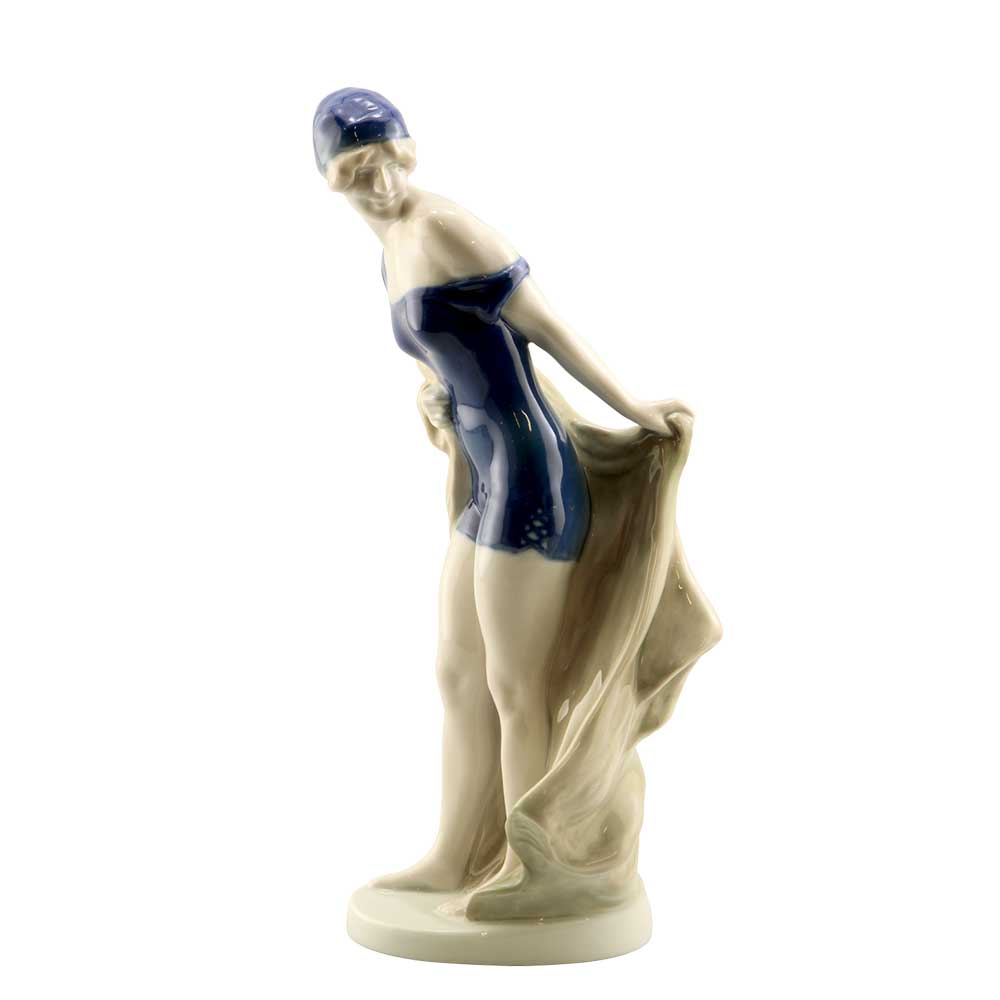
Rosenthal In the Wind
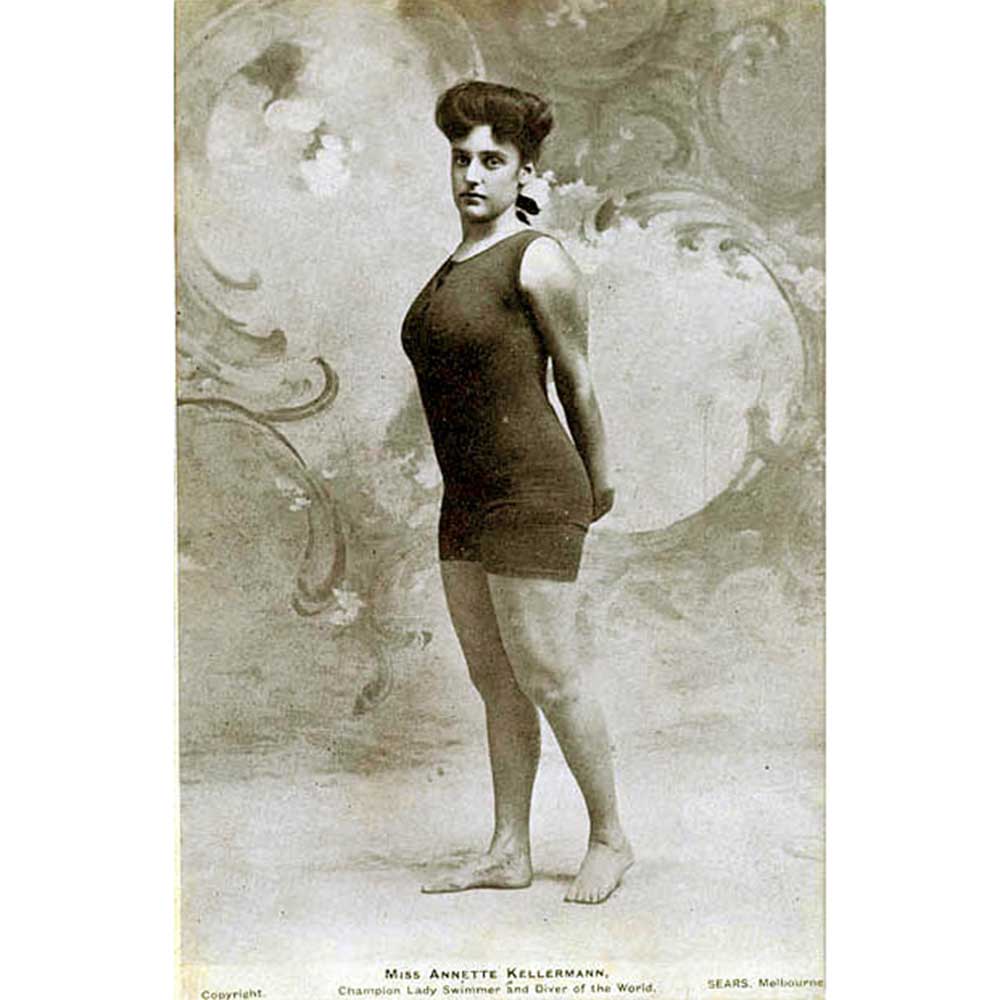
Annette Kellerman
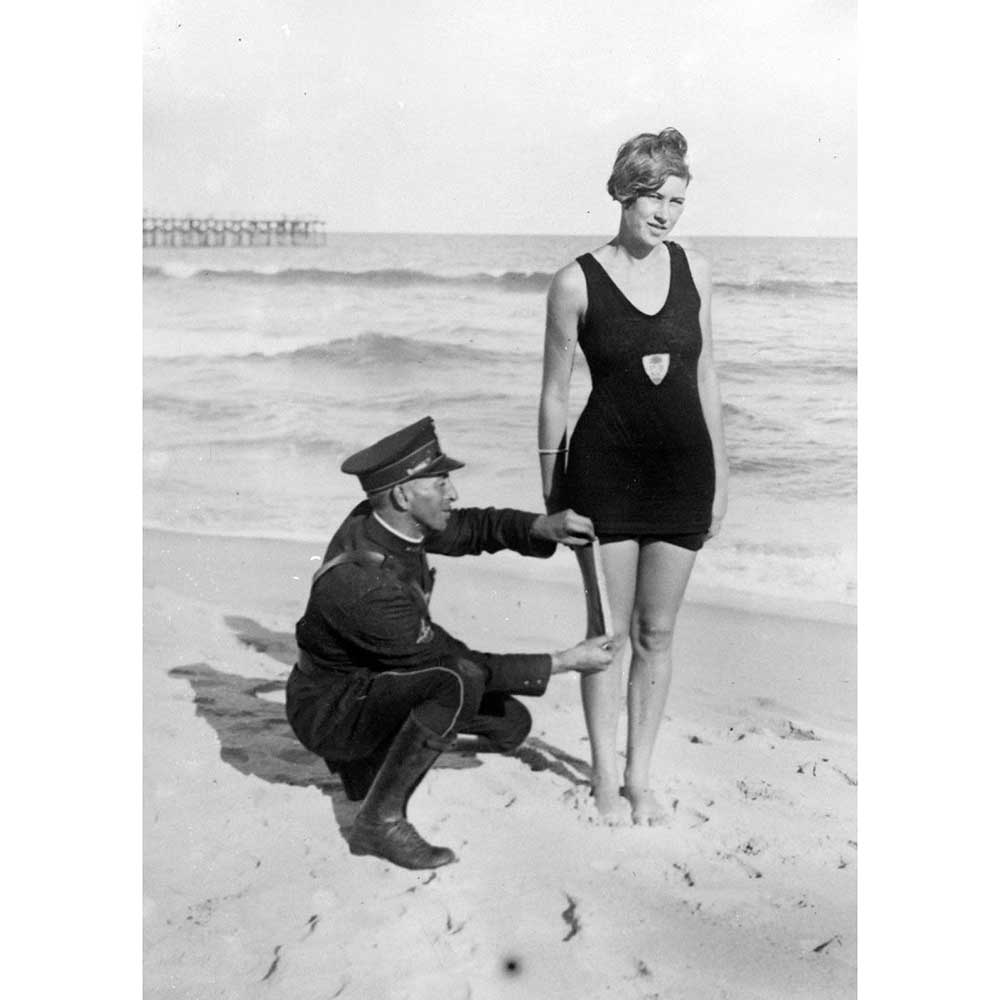
Policing the beach
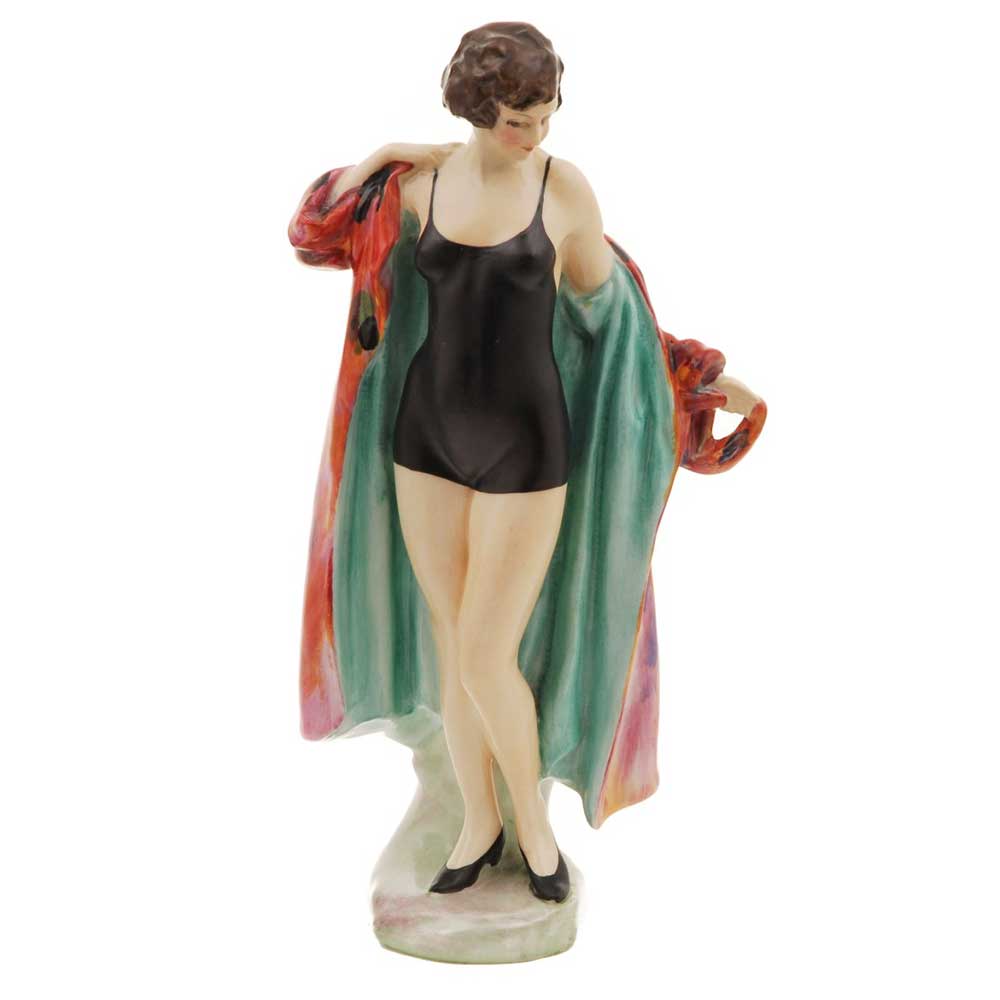
Royal Doulton Bather
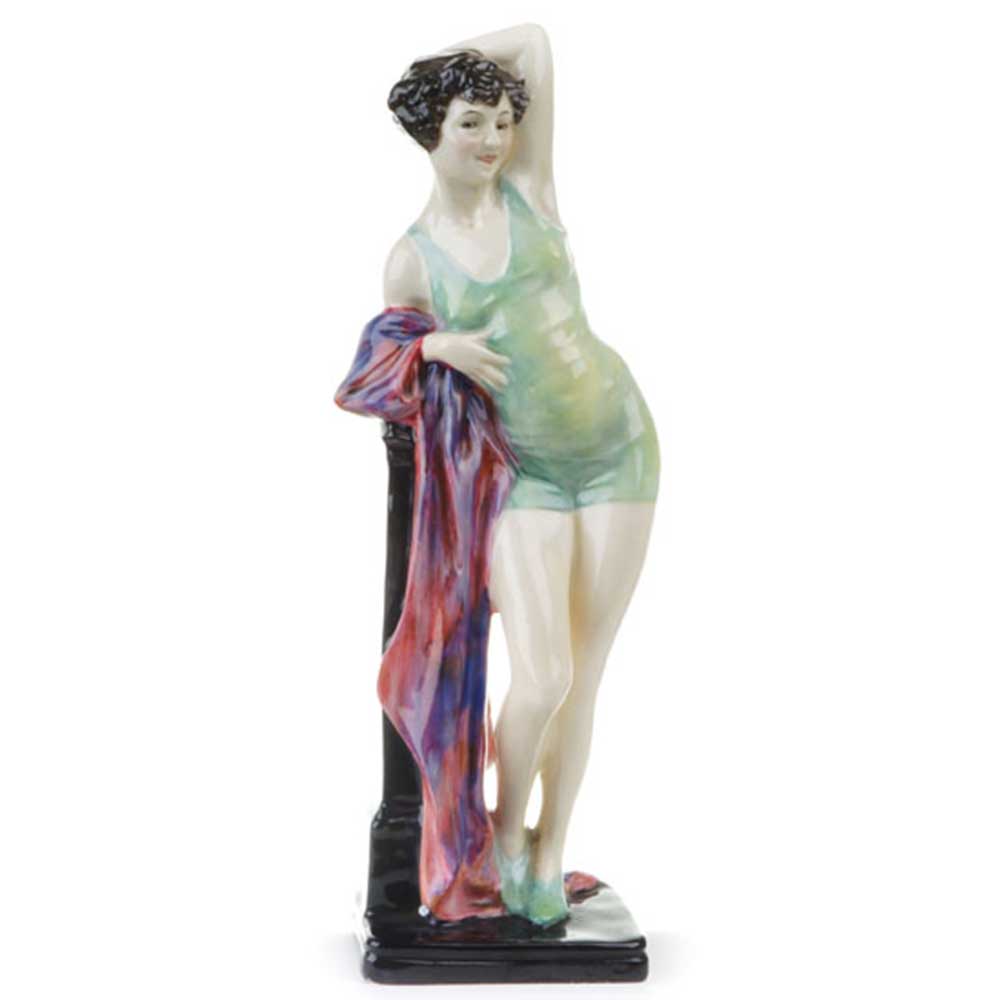
Royal Doulton Swimmer
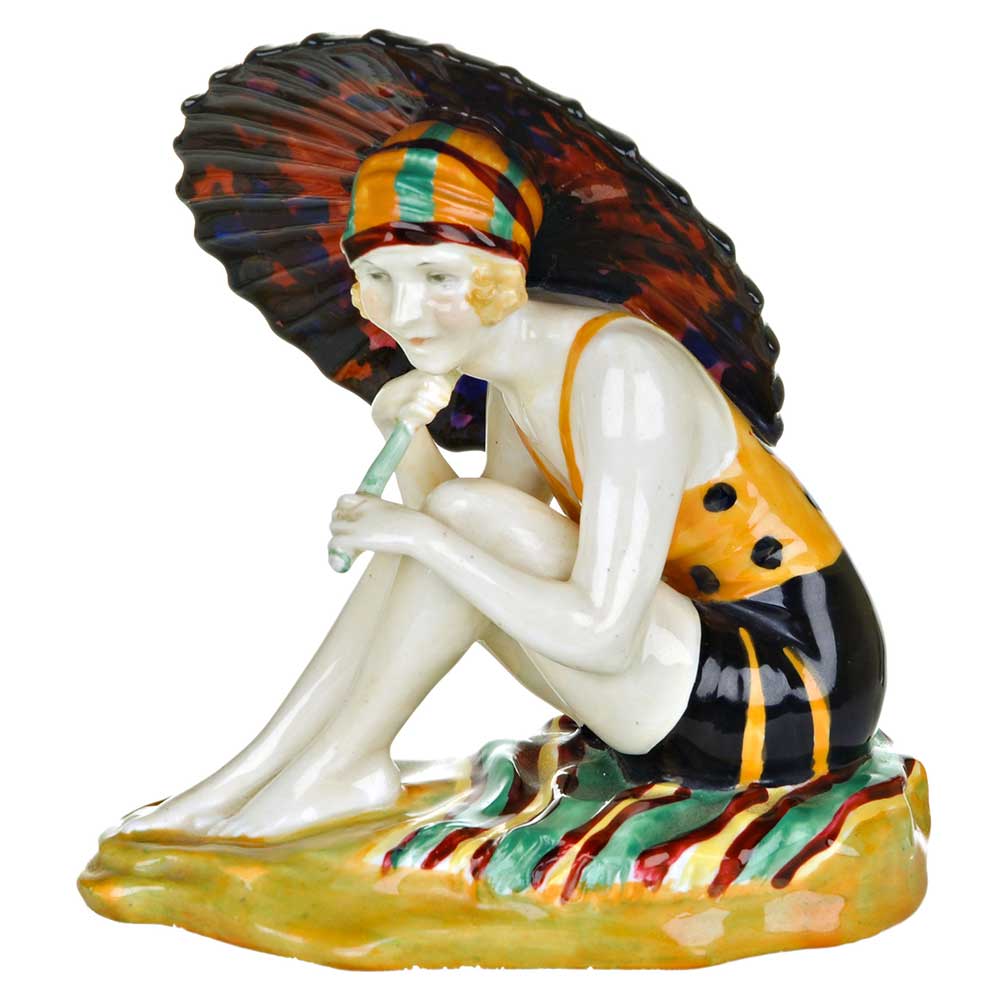
Royal Doulton The Sunshine Girl
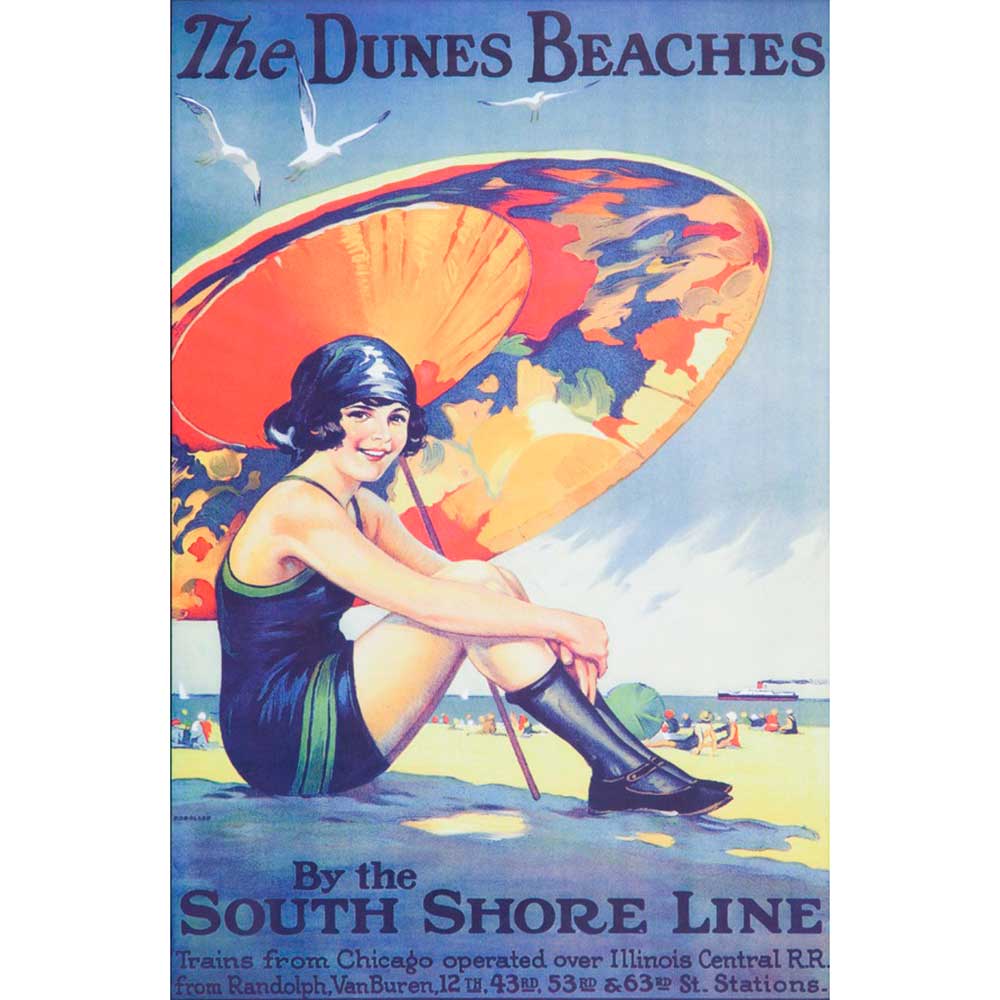
Travel Poster
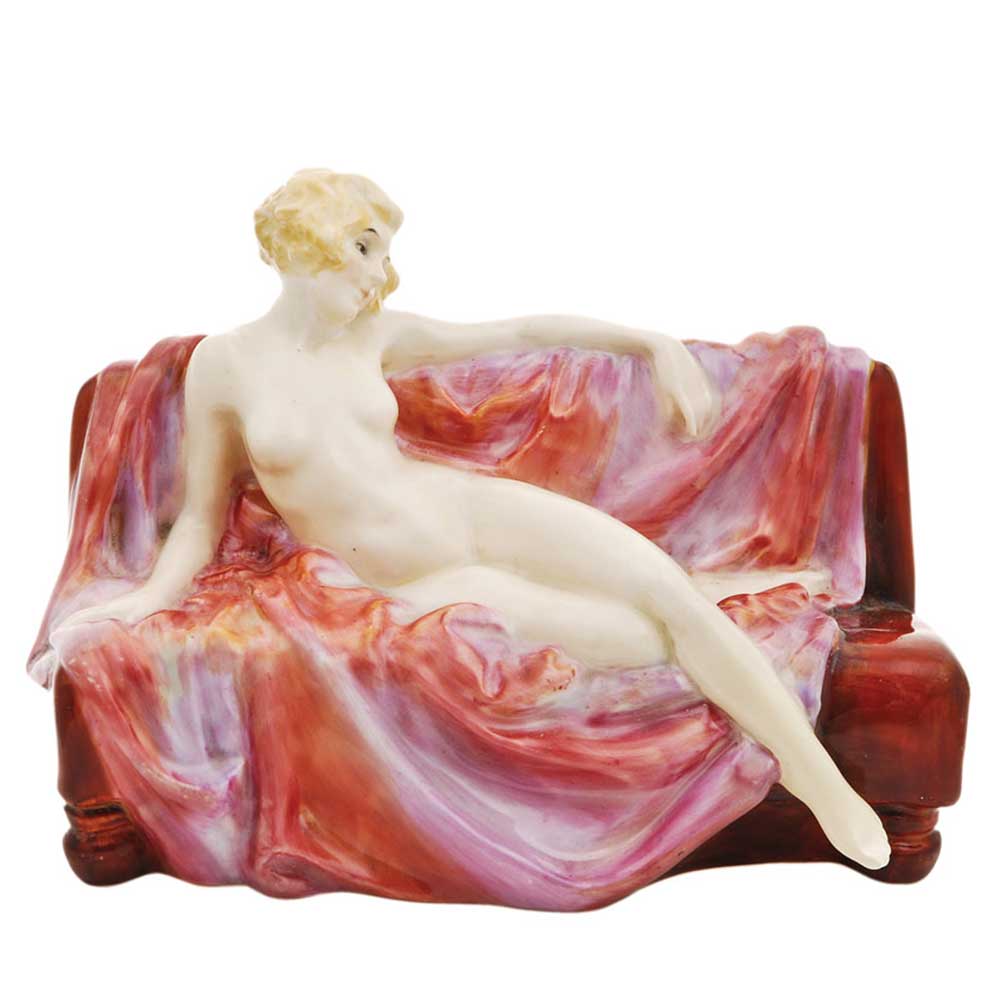
Royal Doulton Siesta
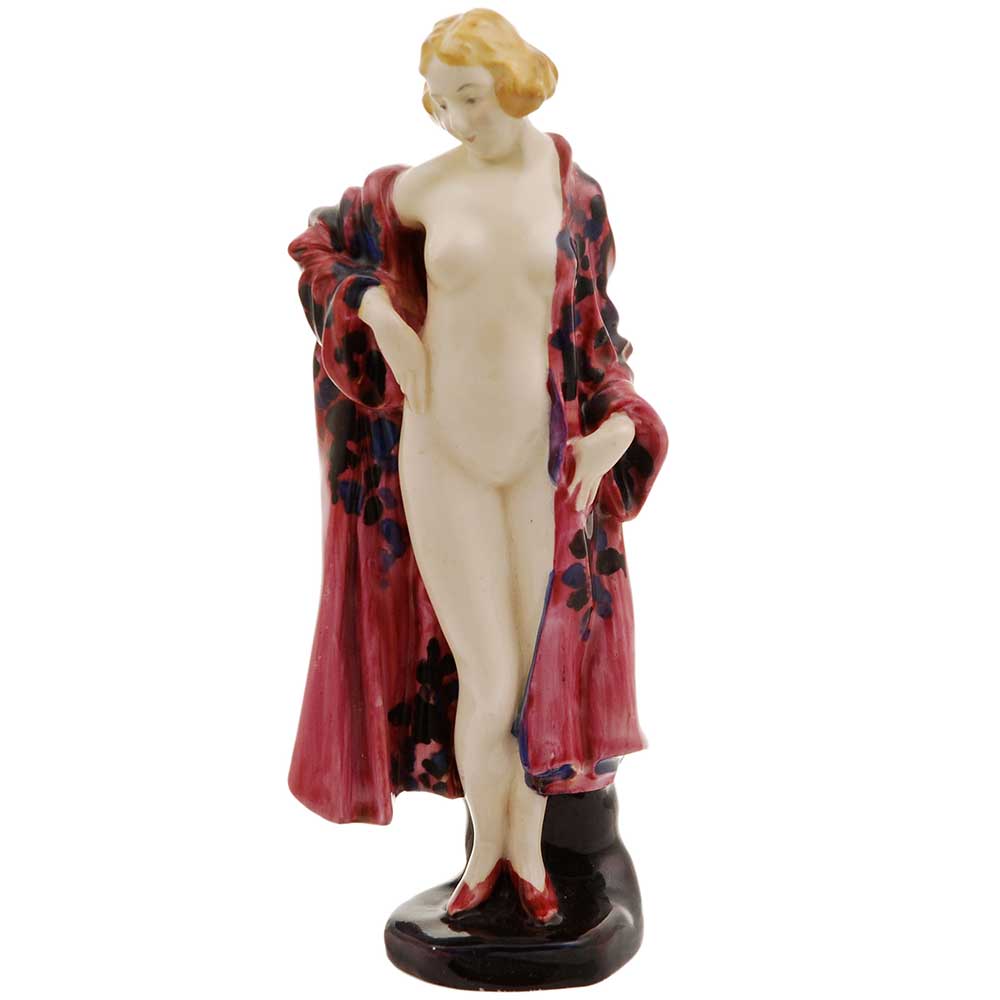
Royal Doulton Bather
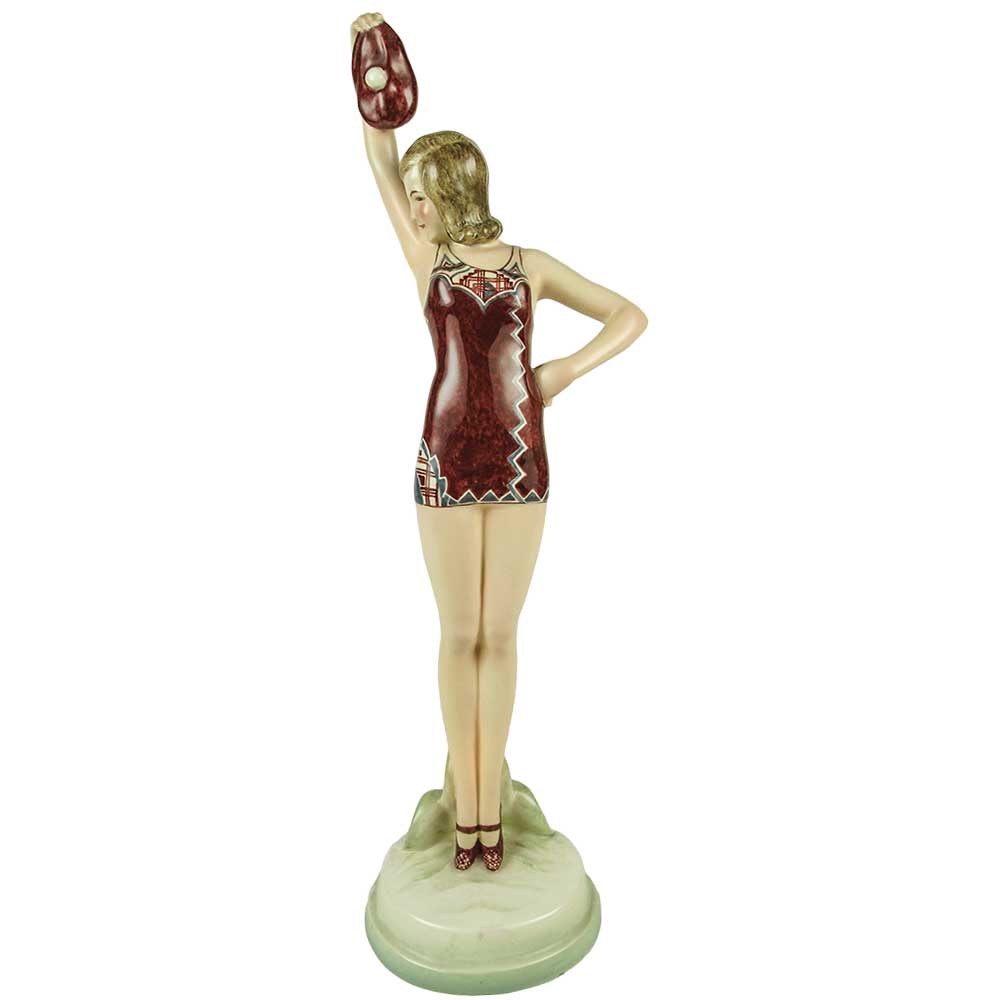
Royal Doulton Cabaret Dancer
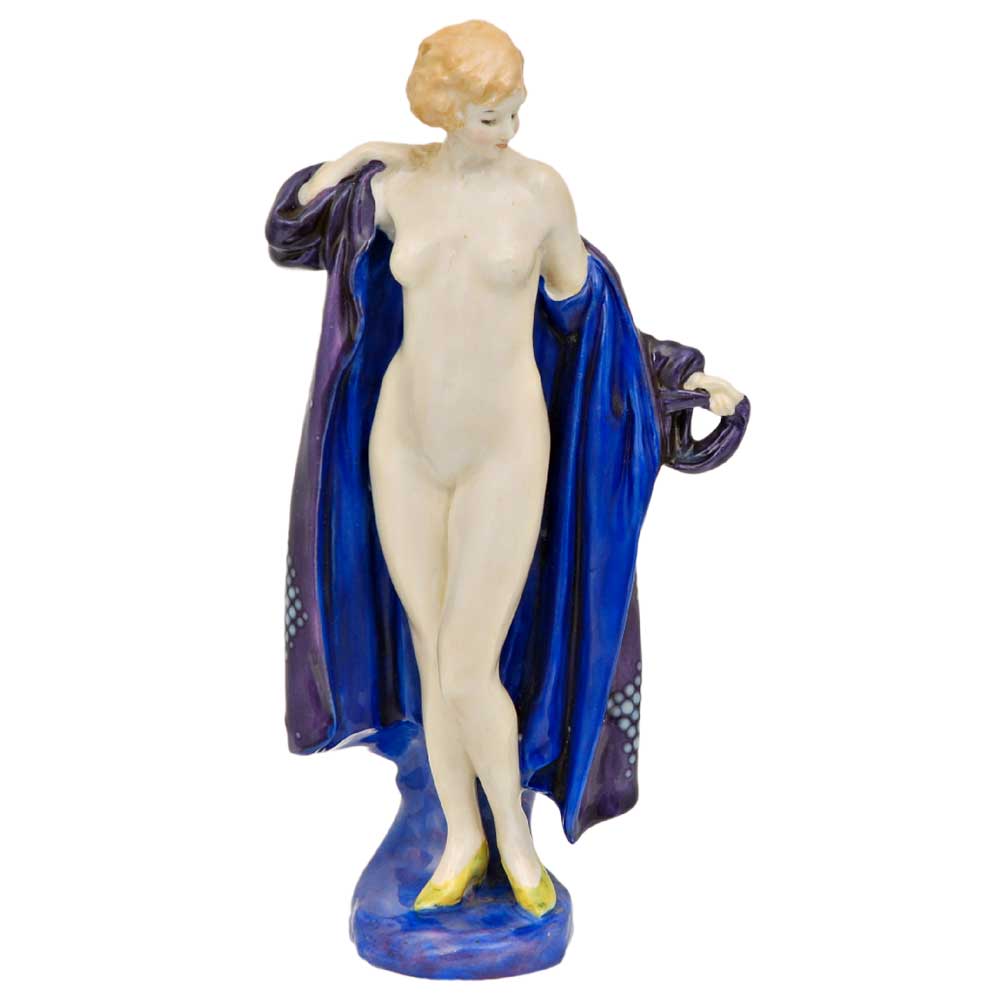
Royal Doulton Bather
